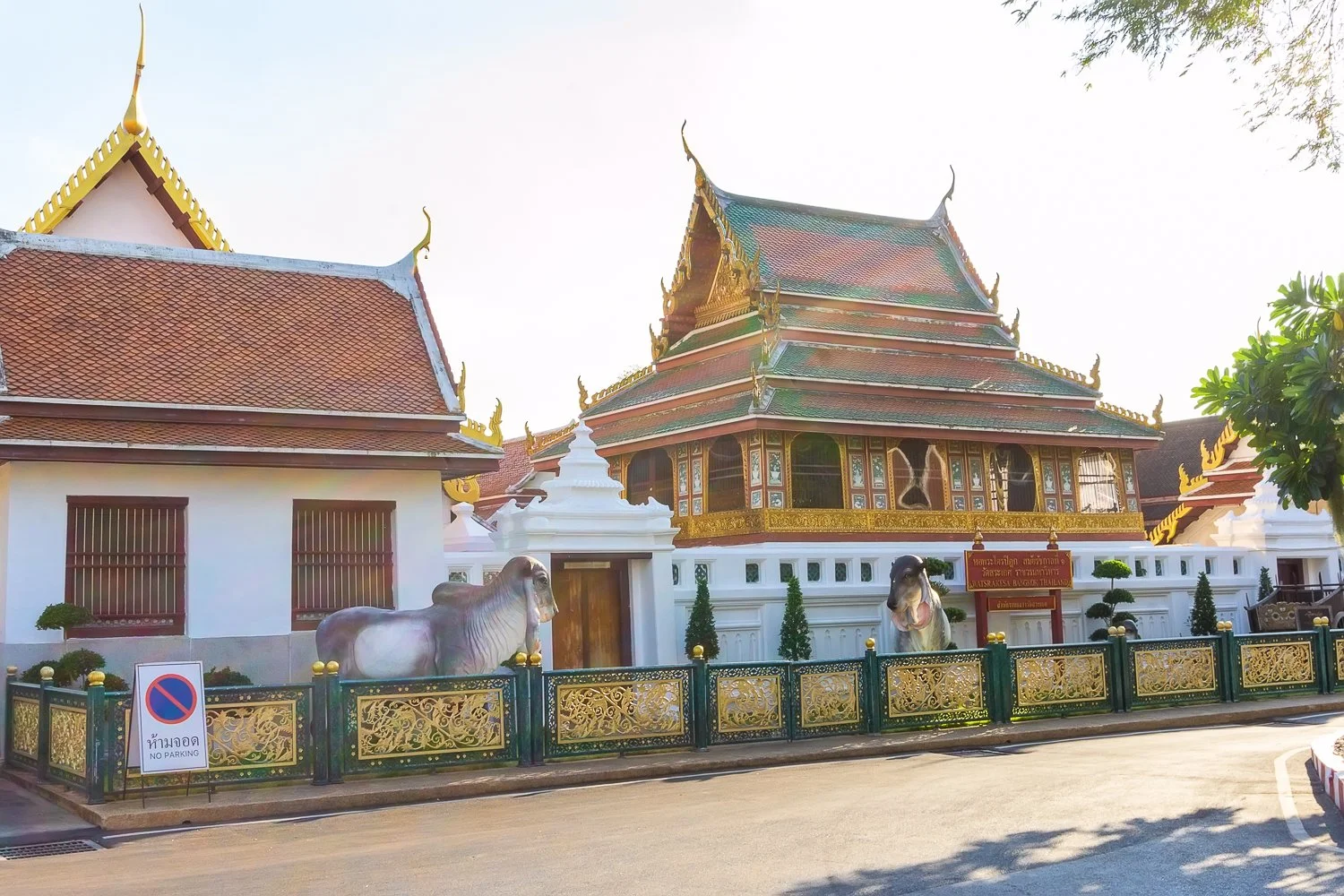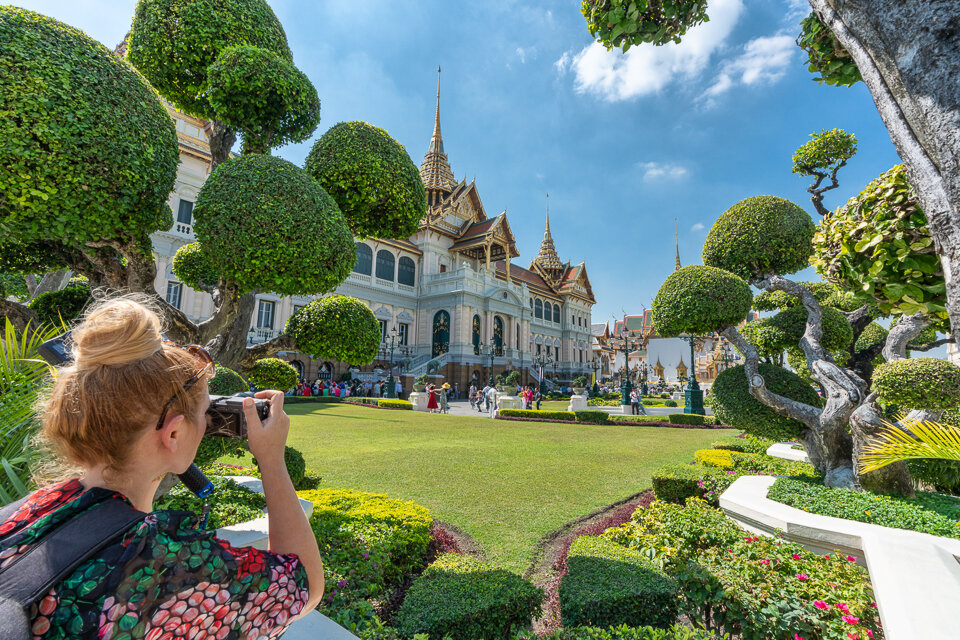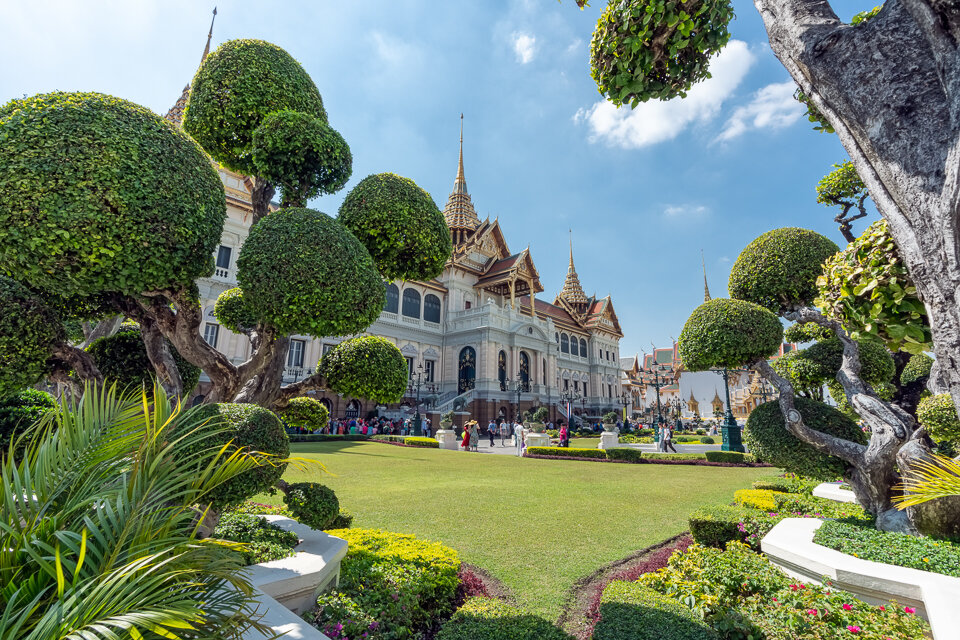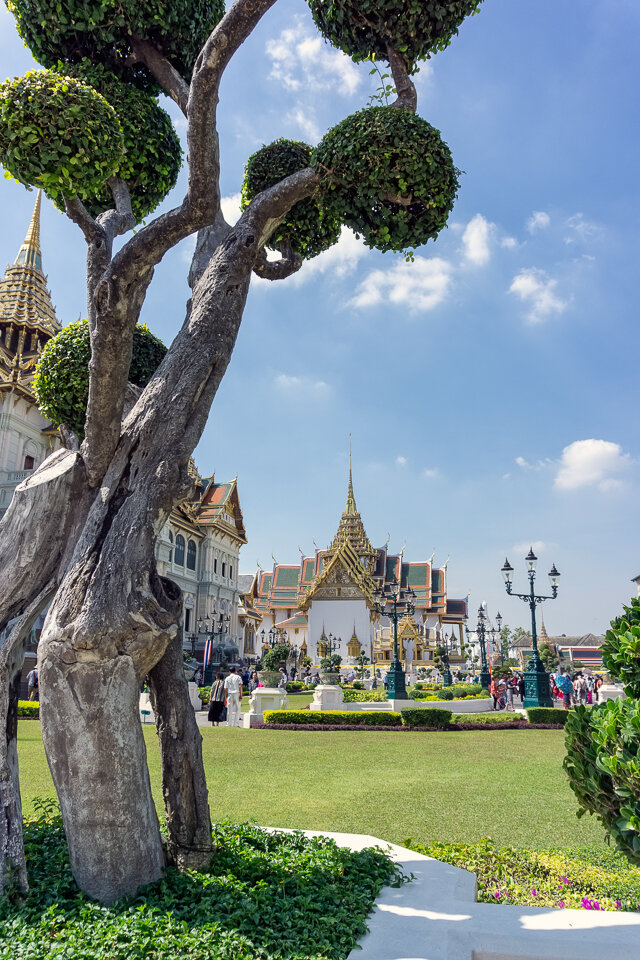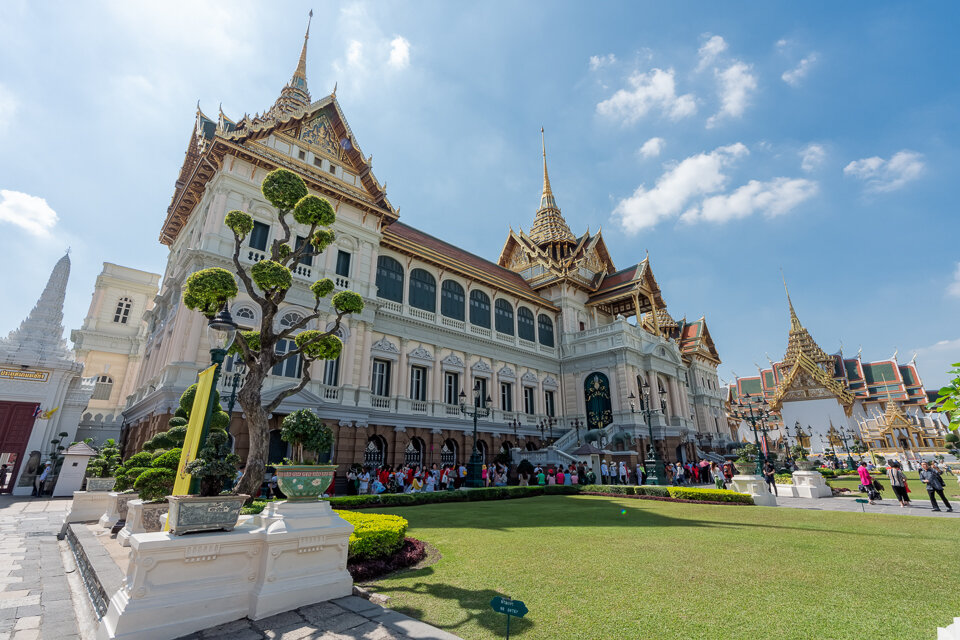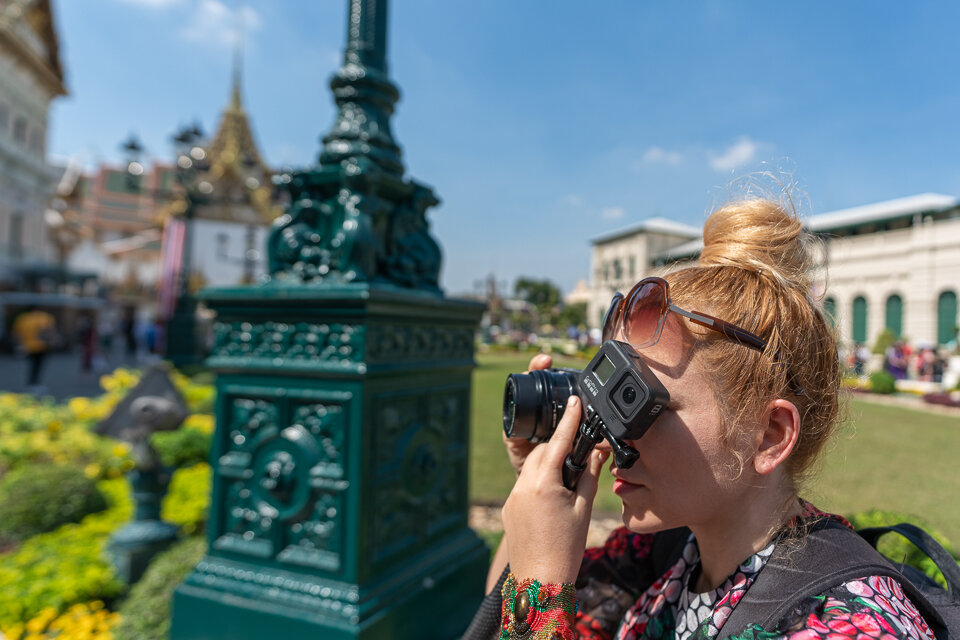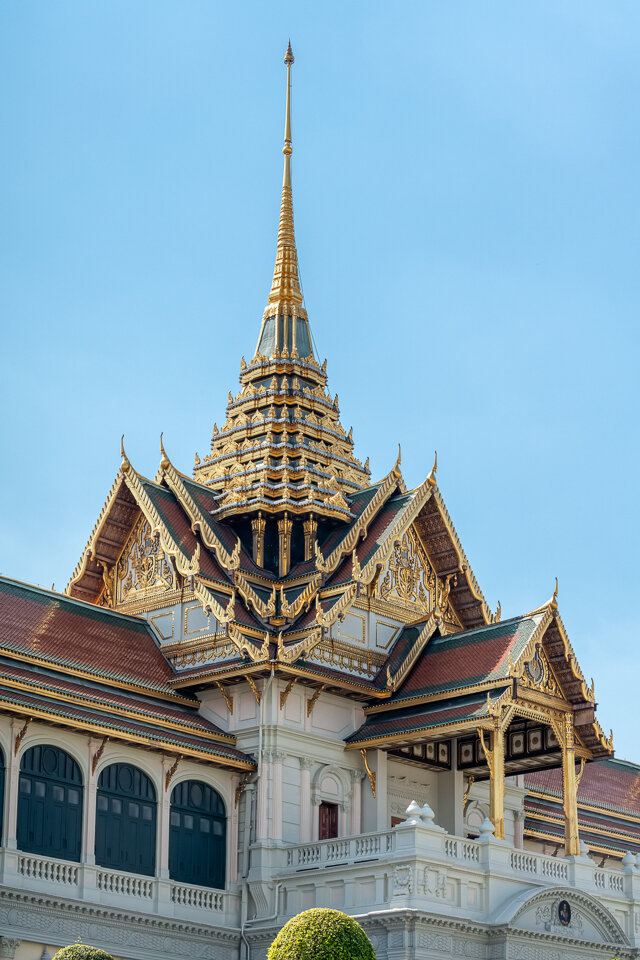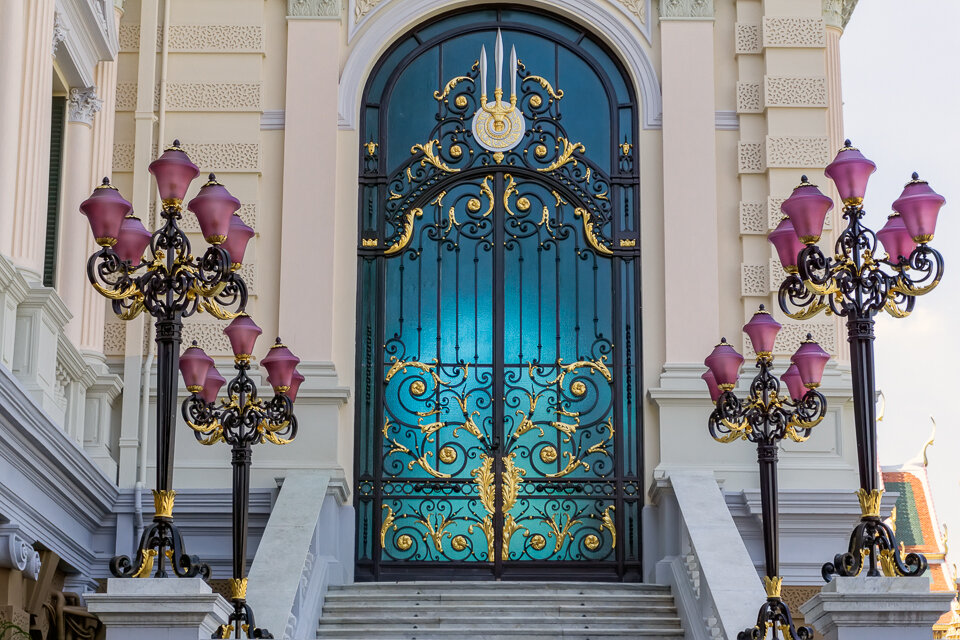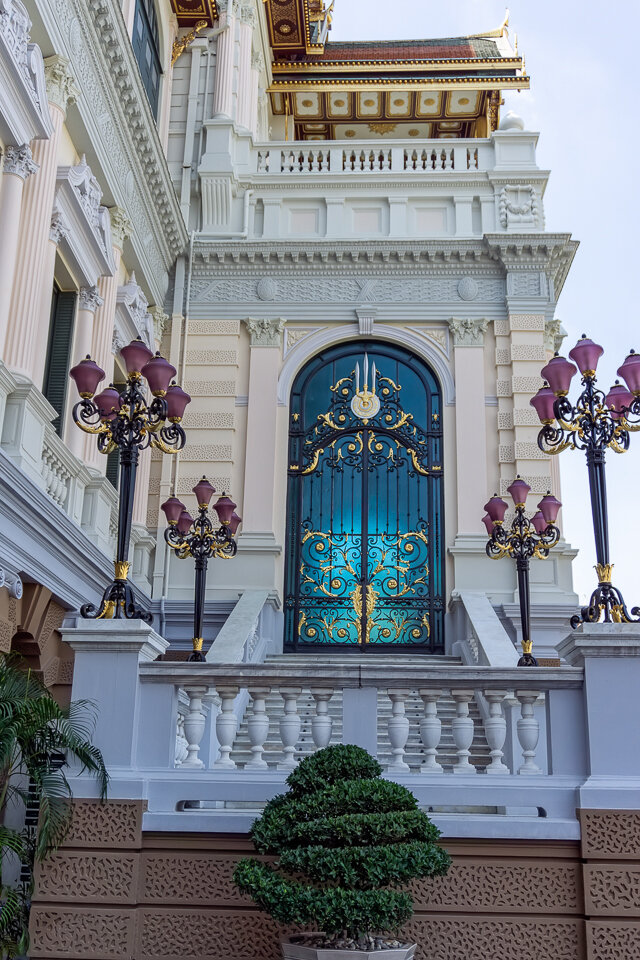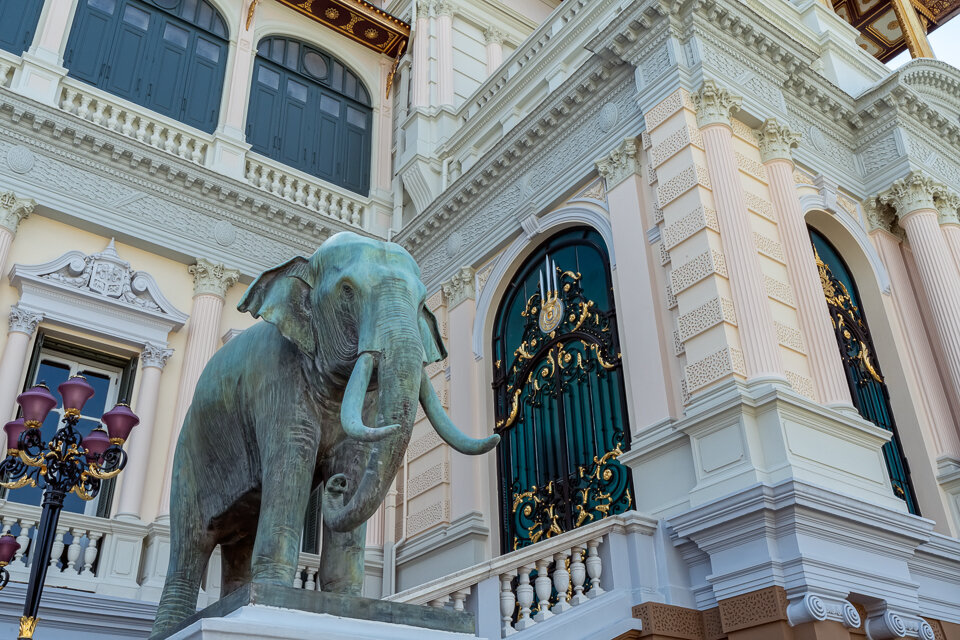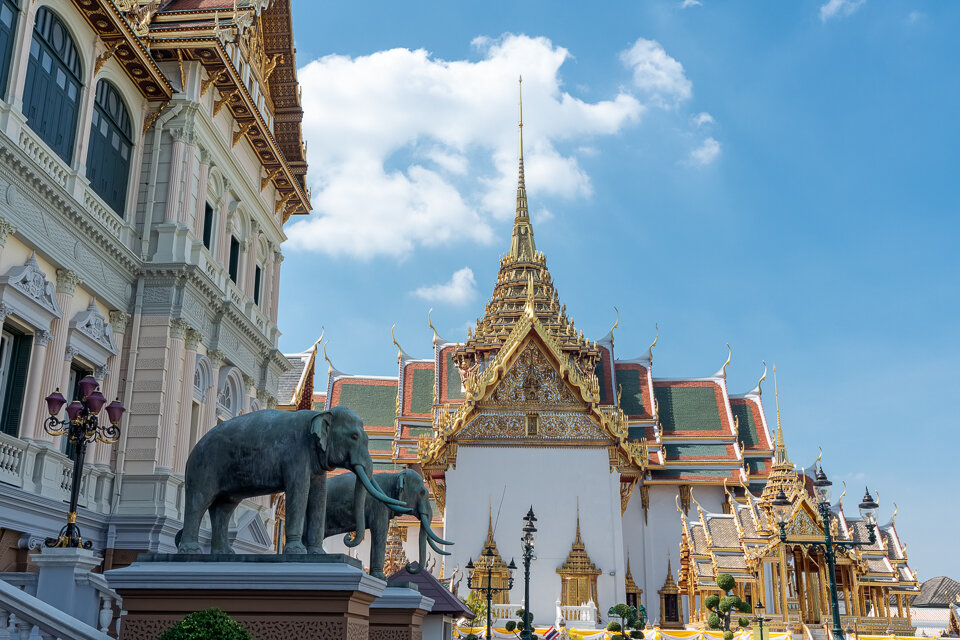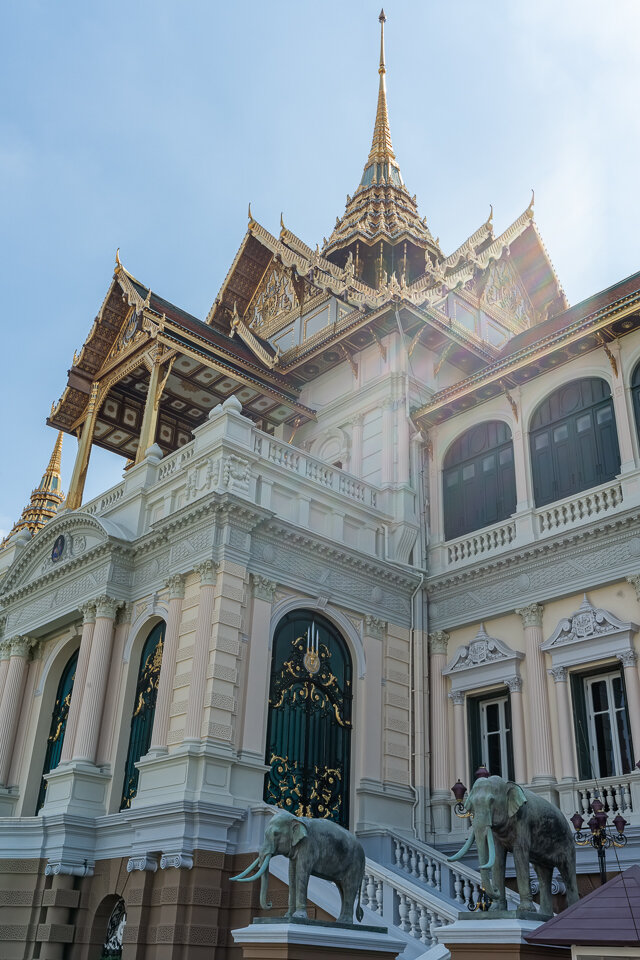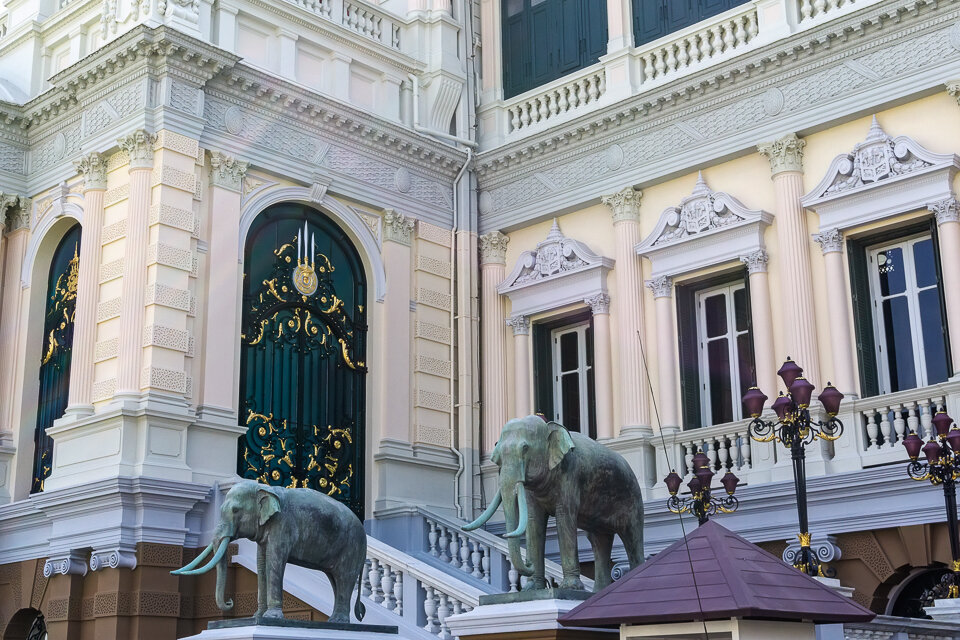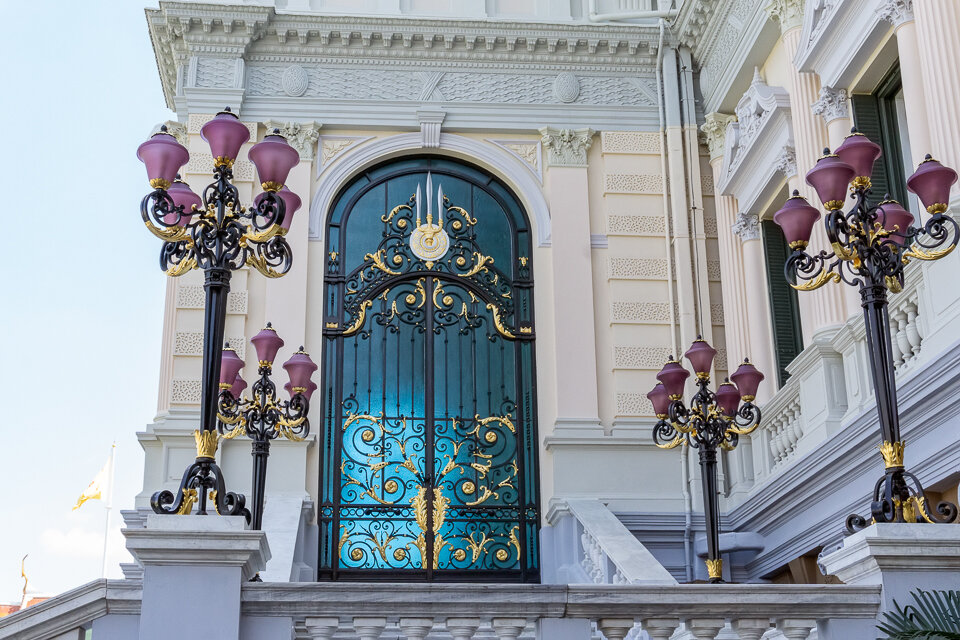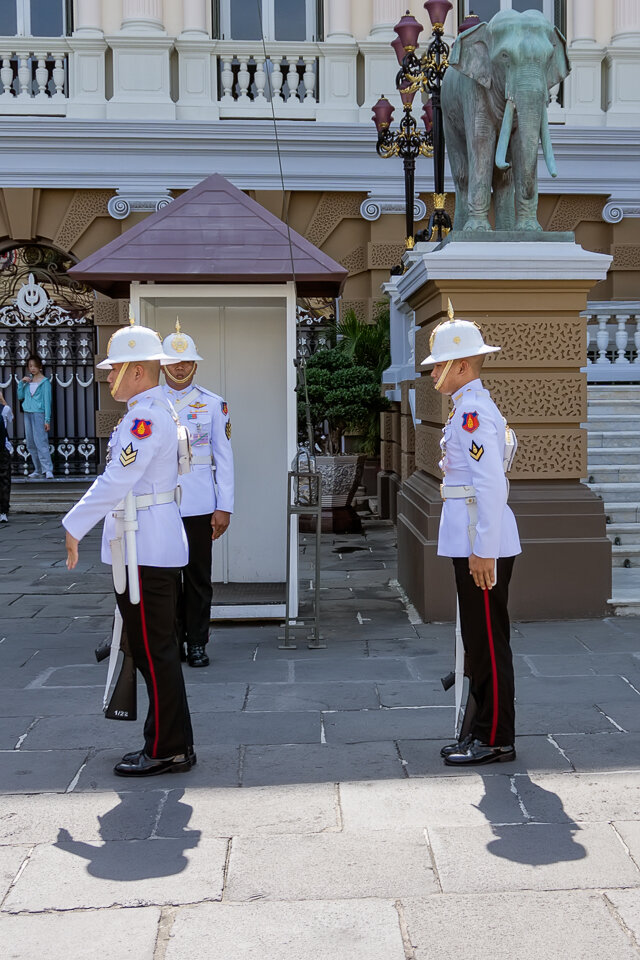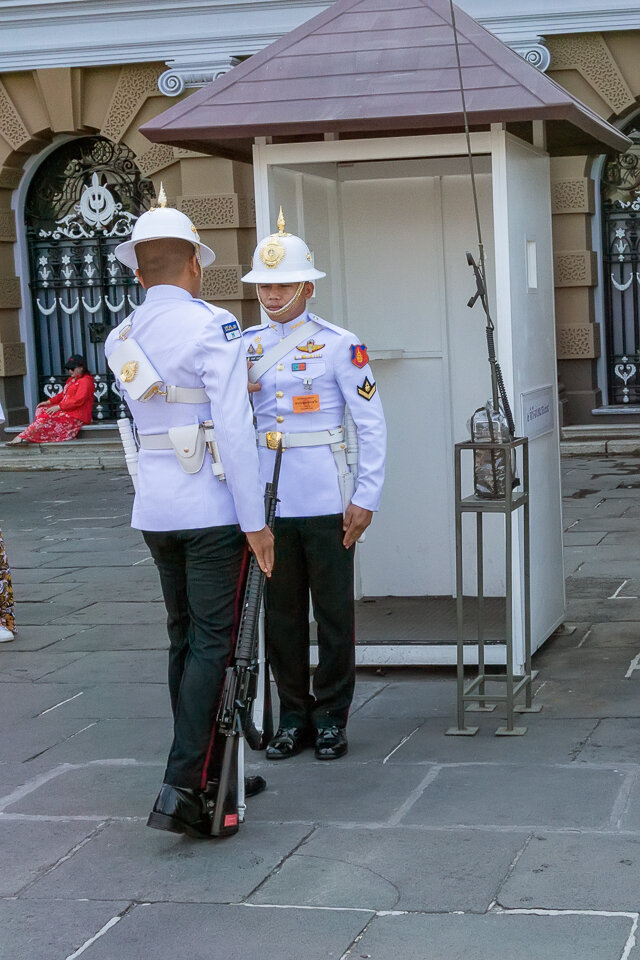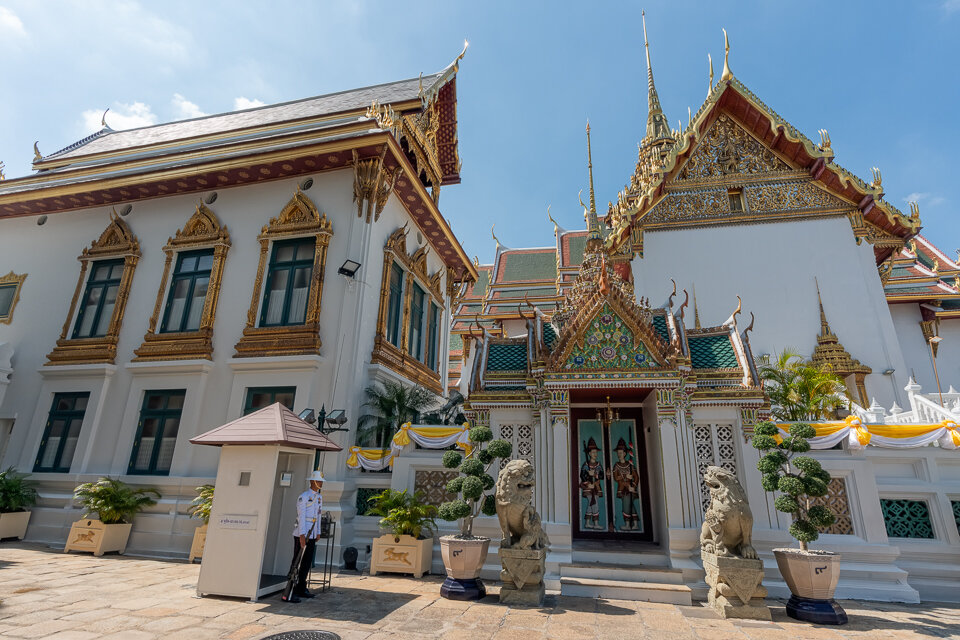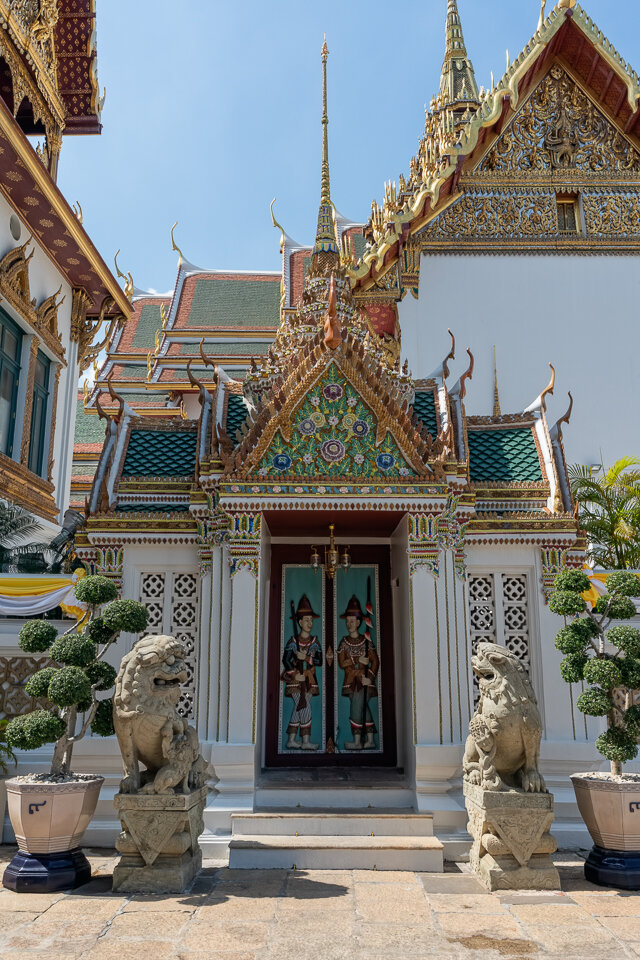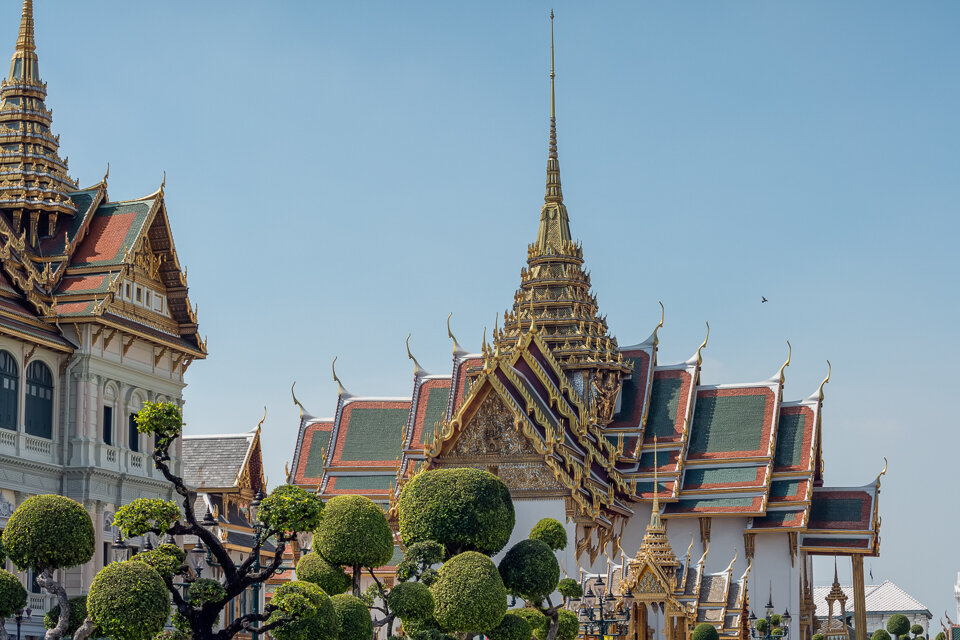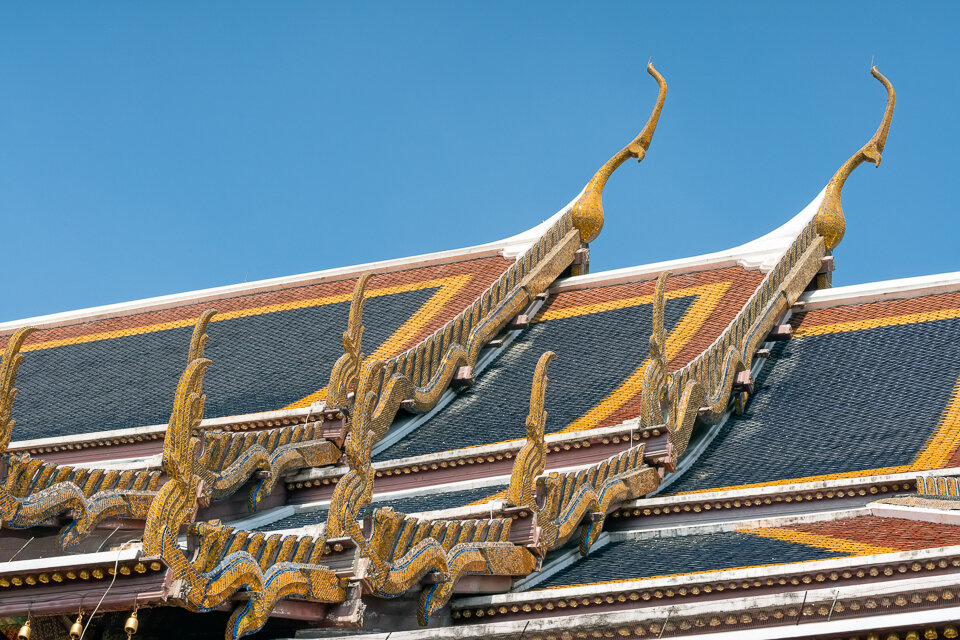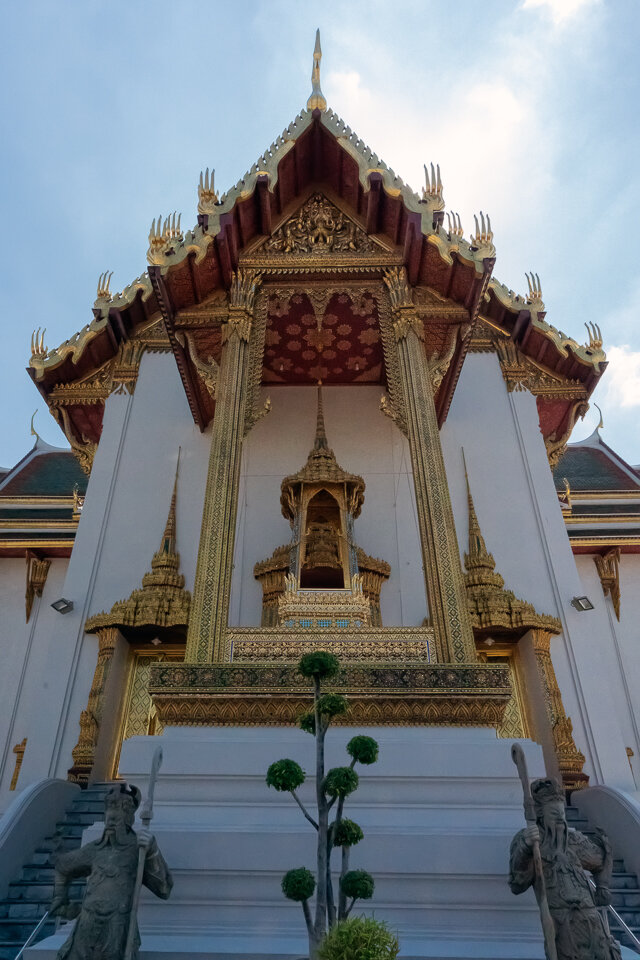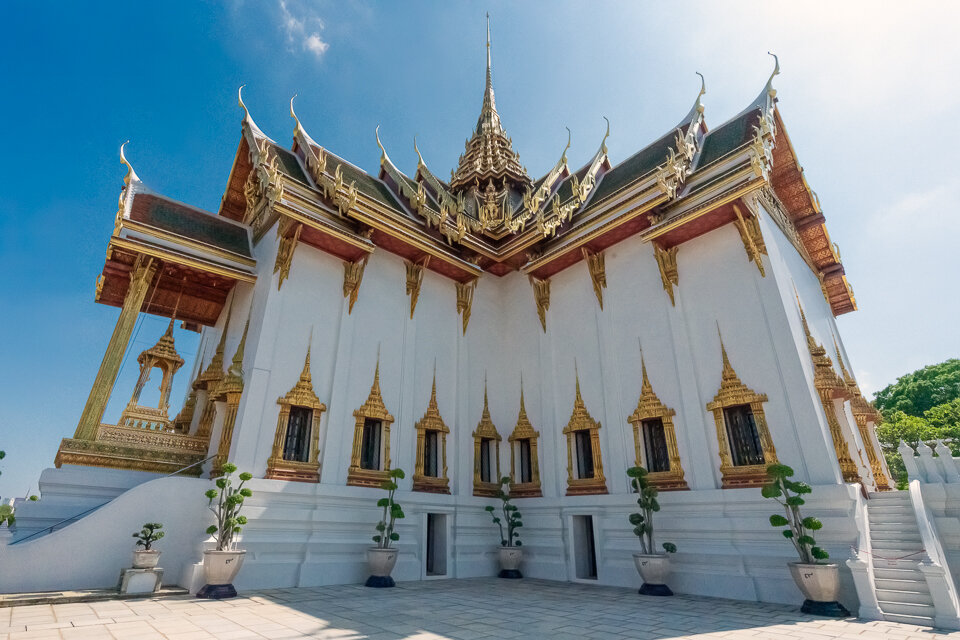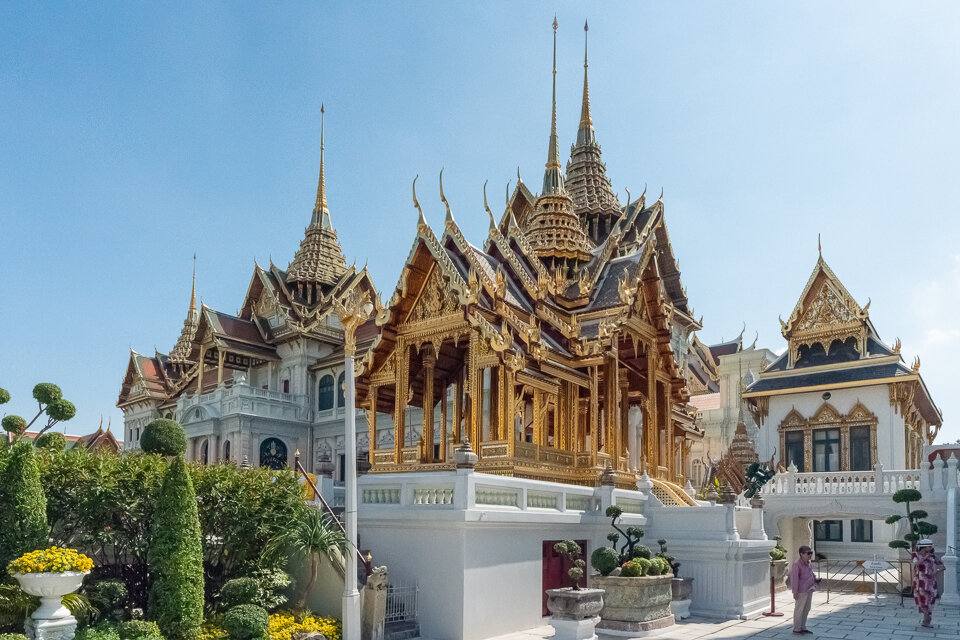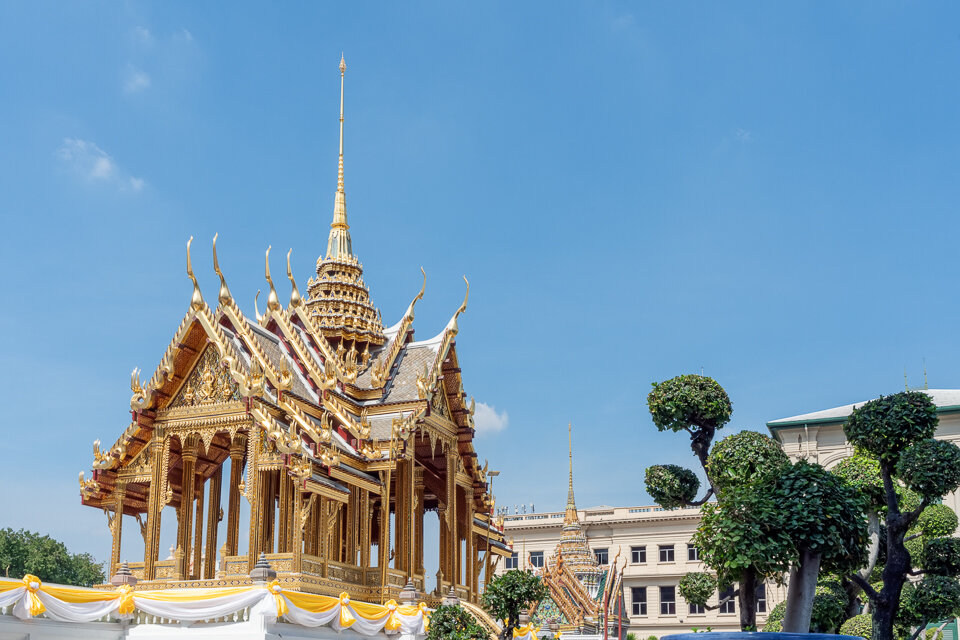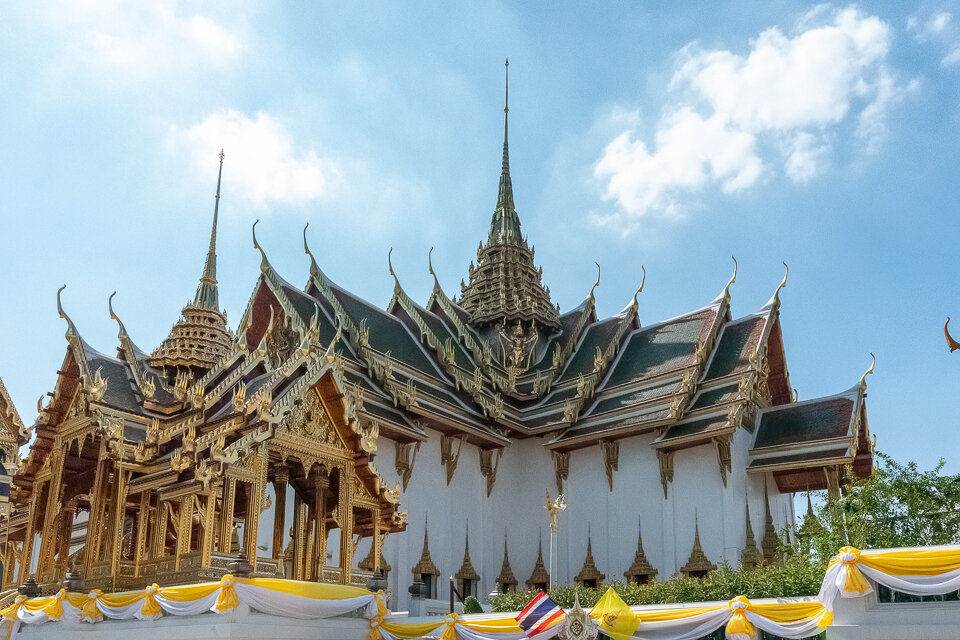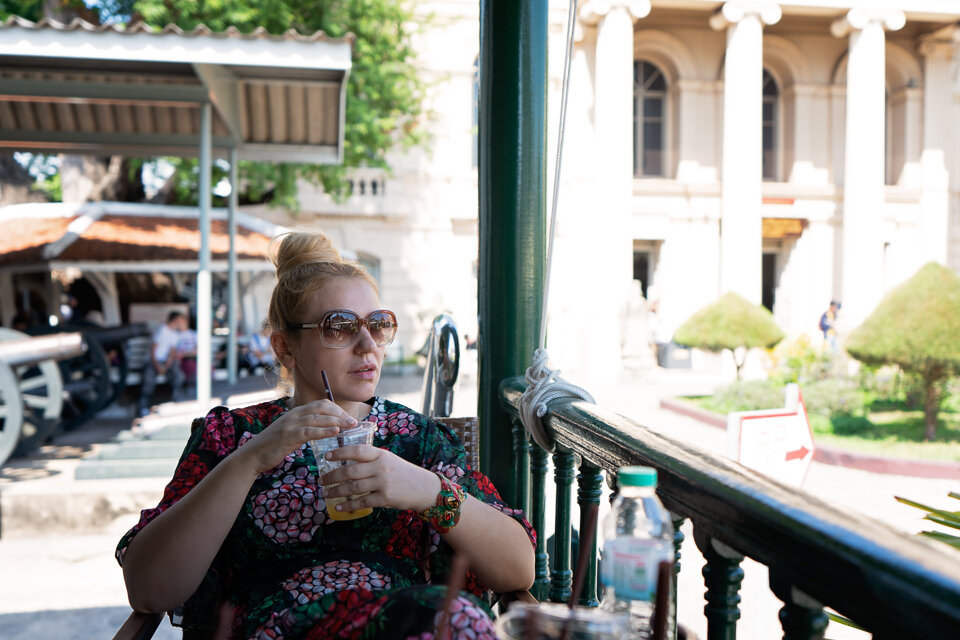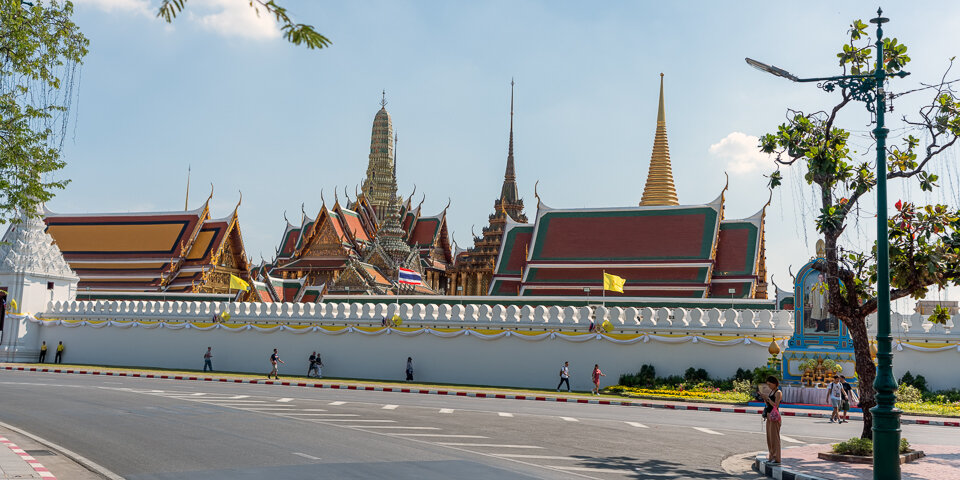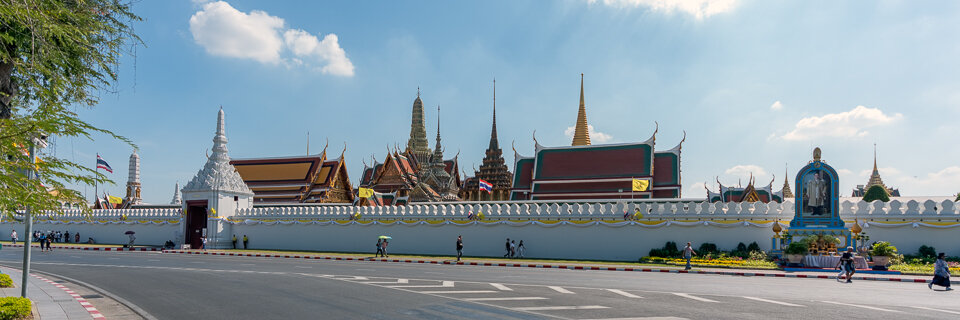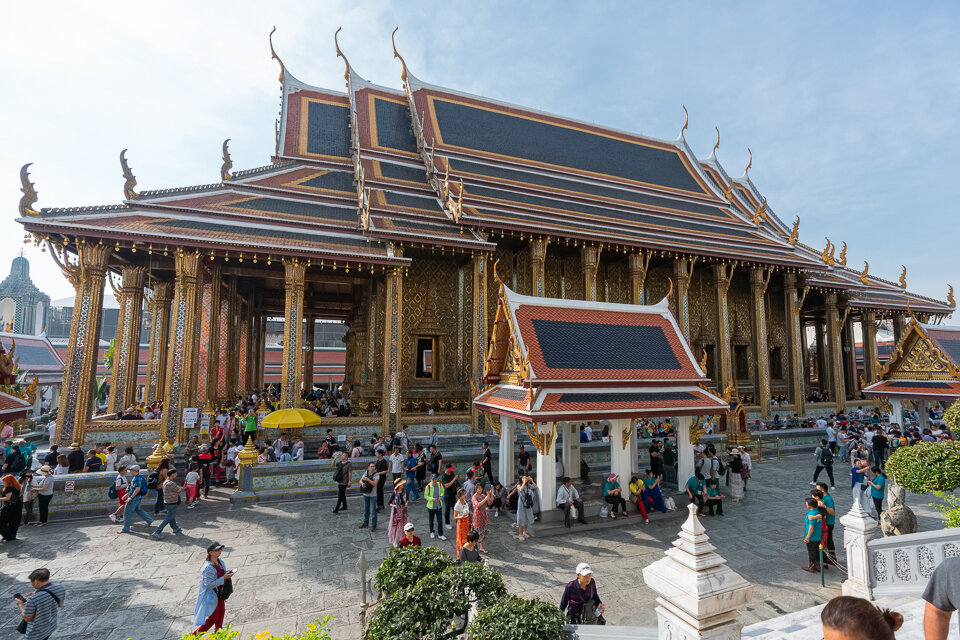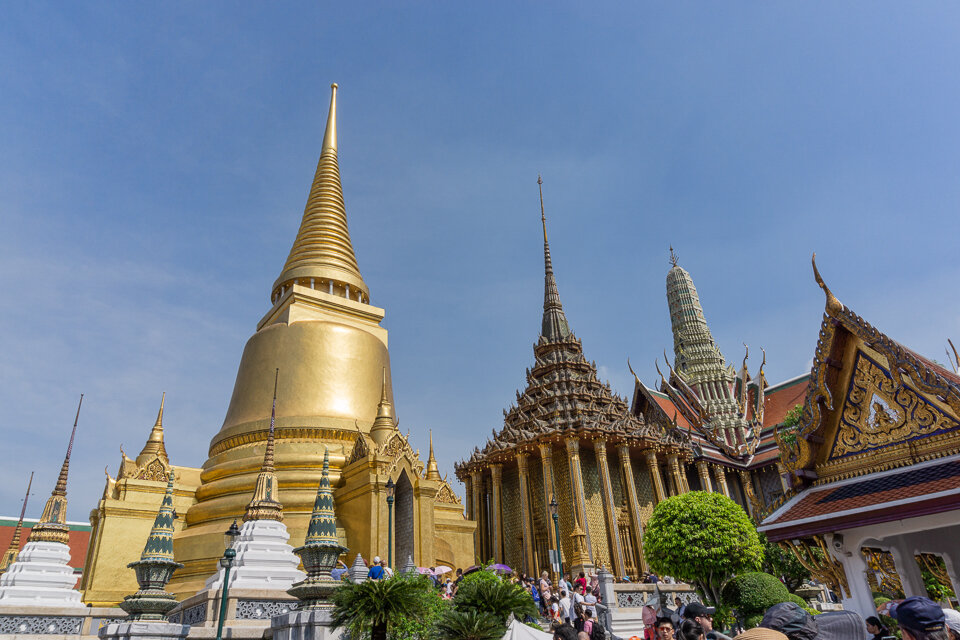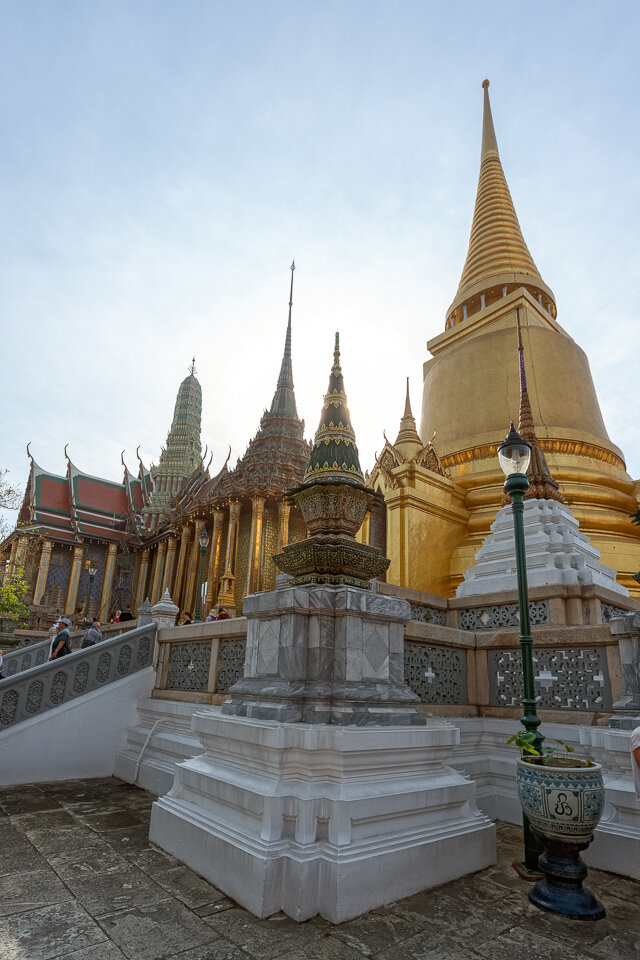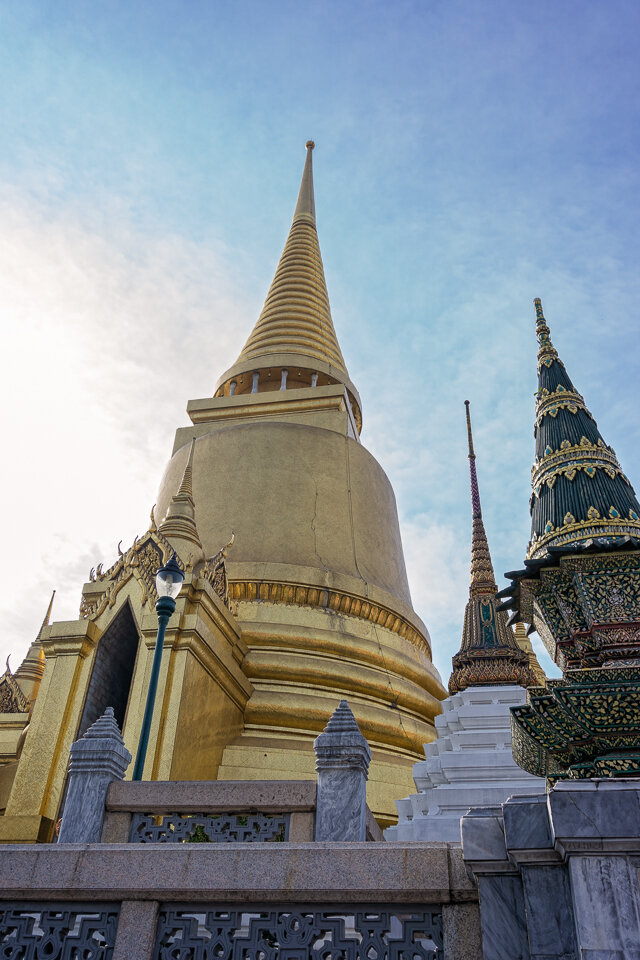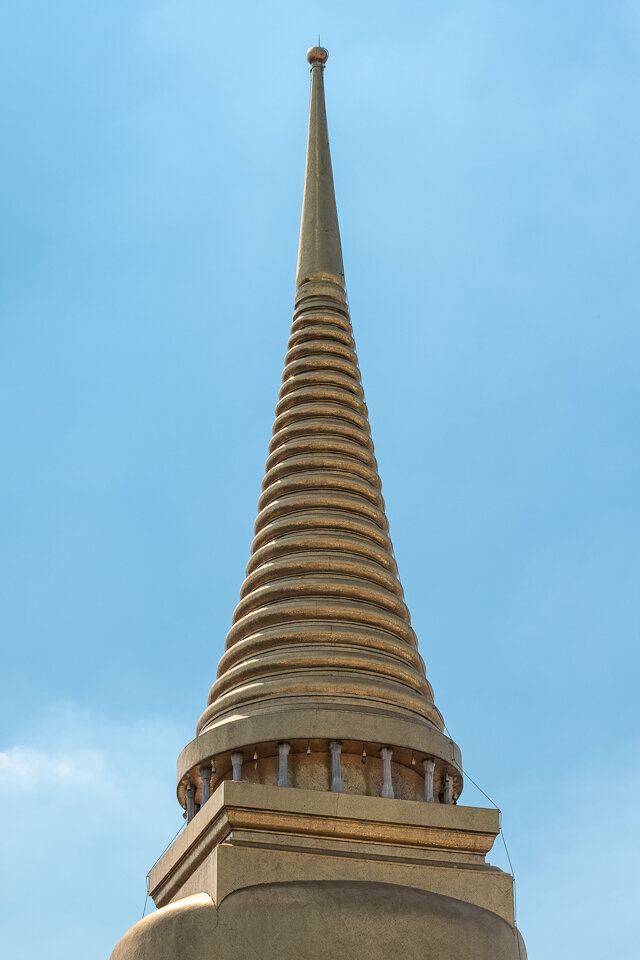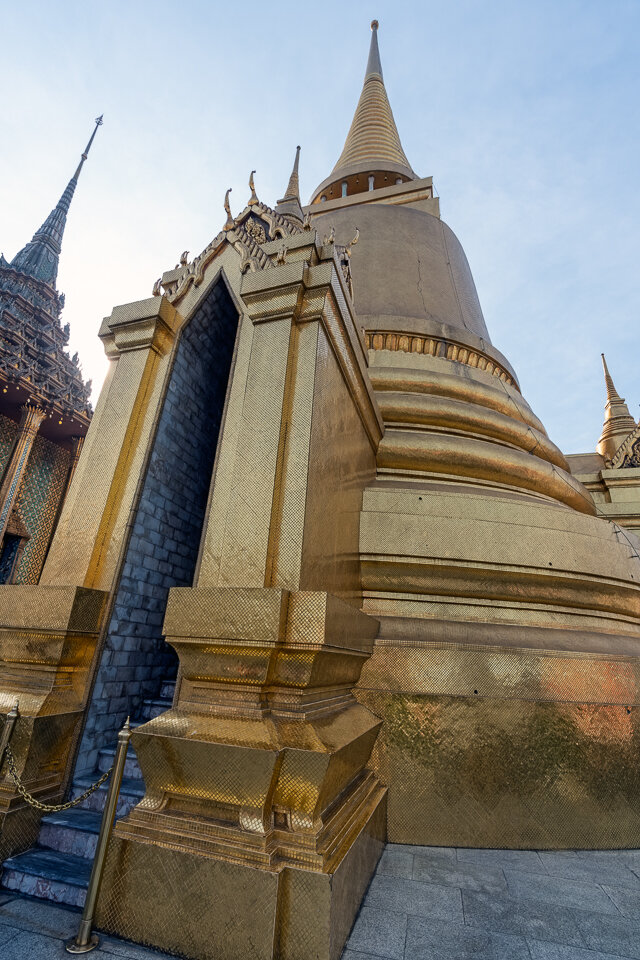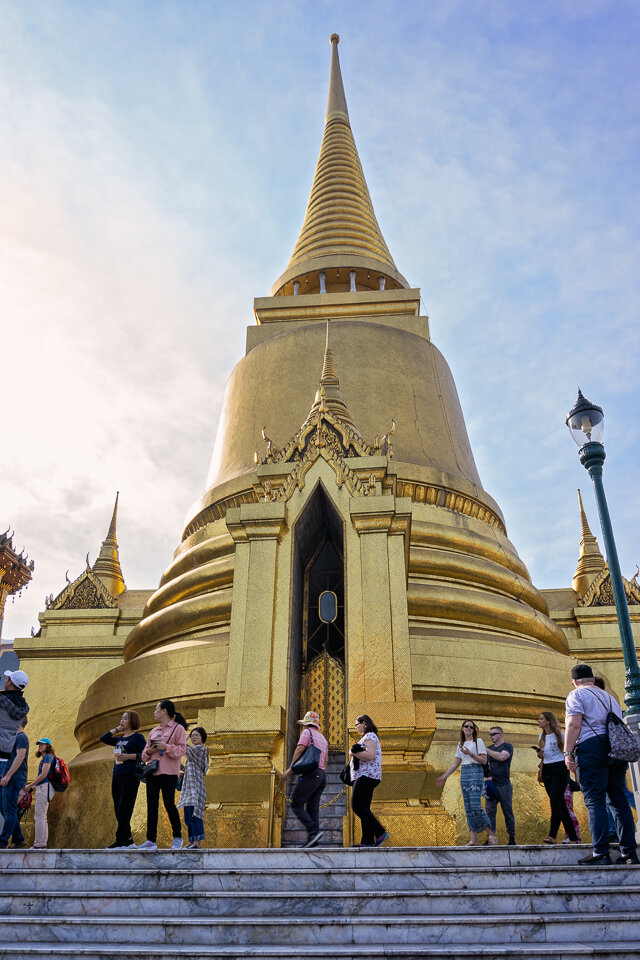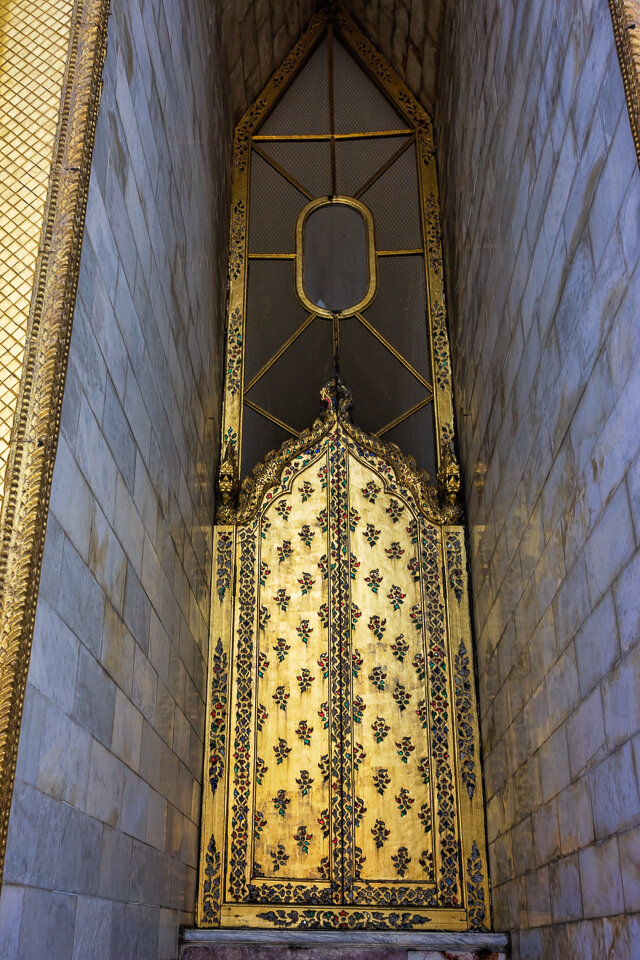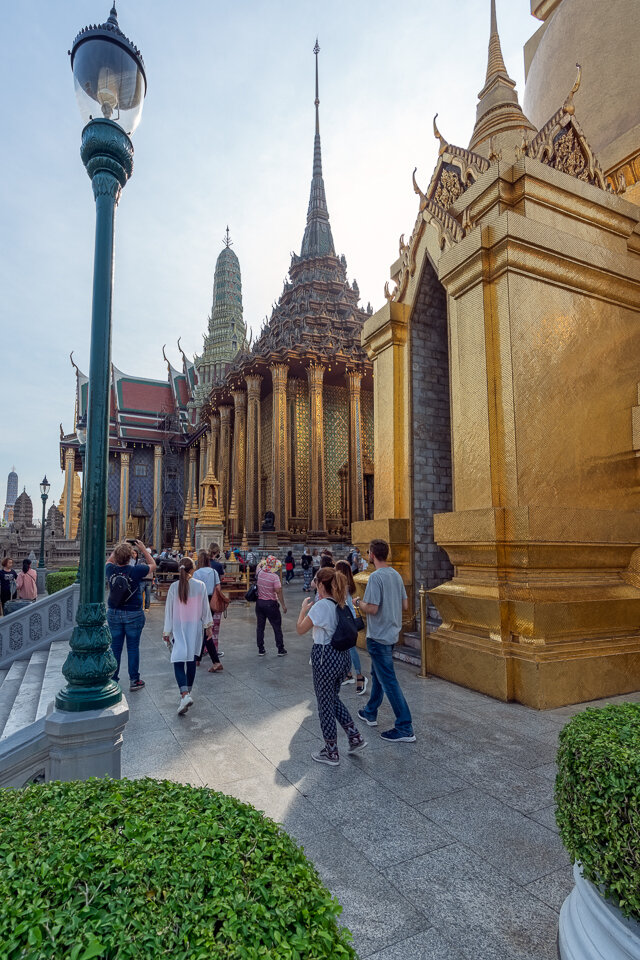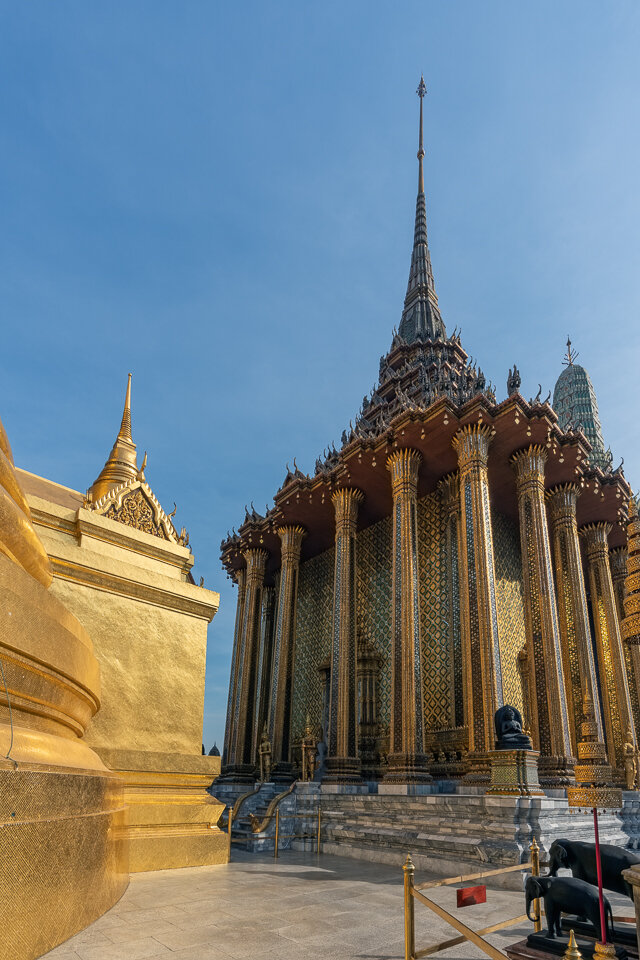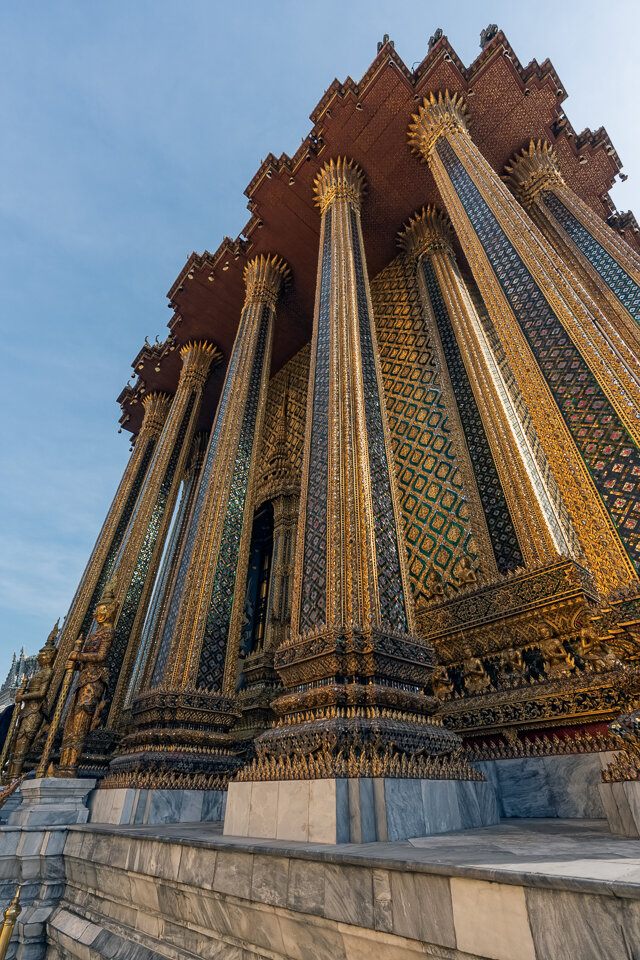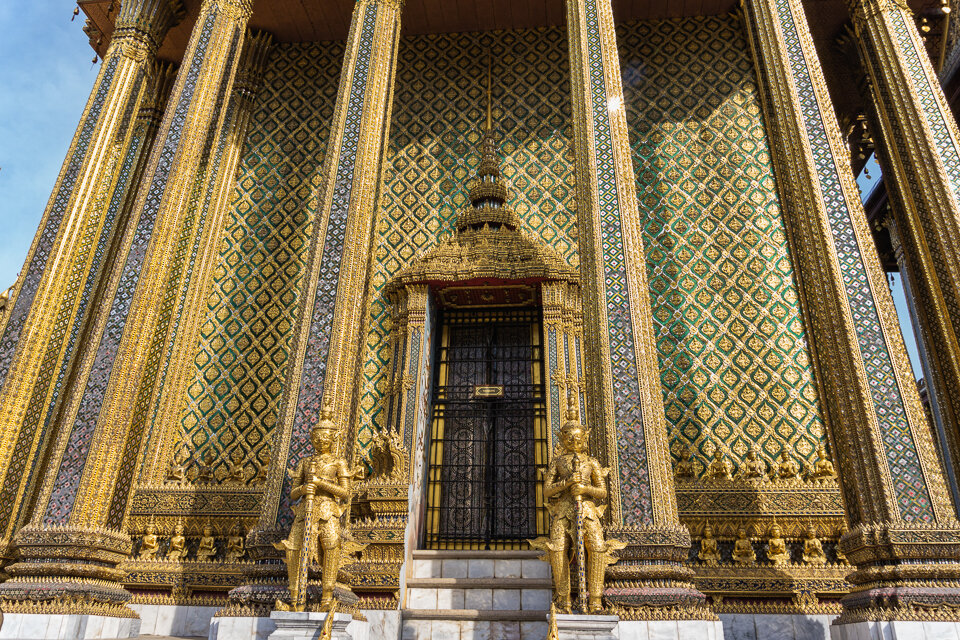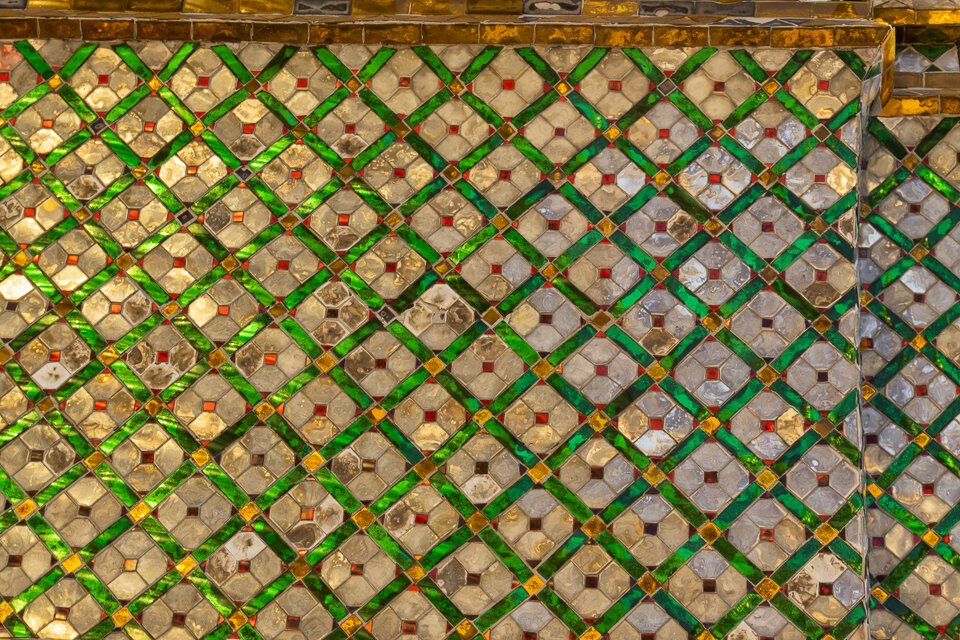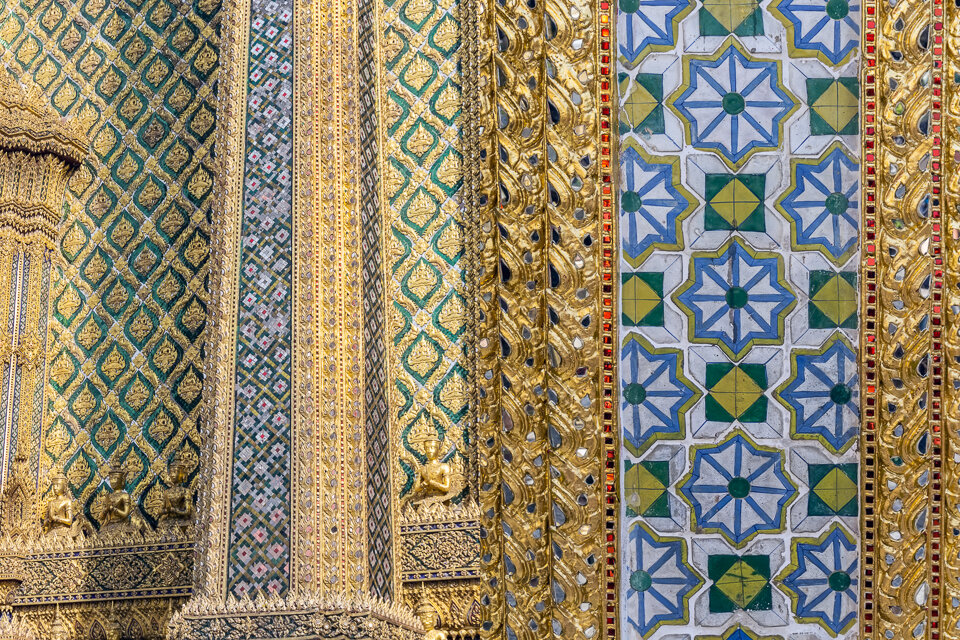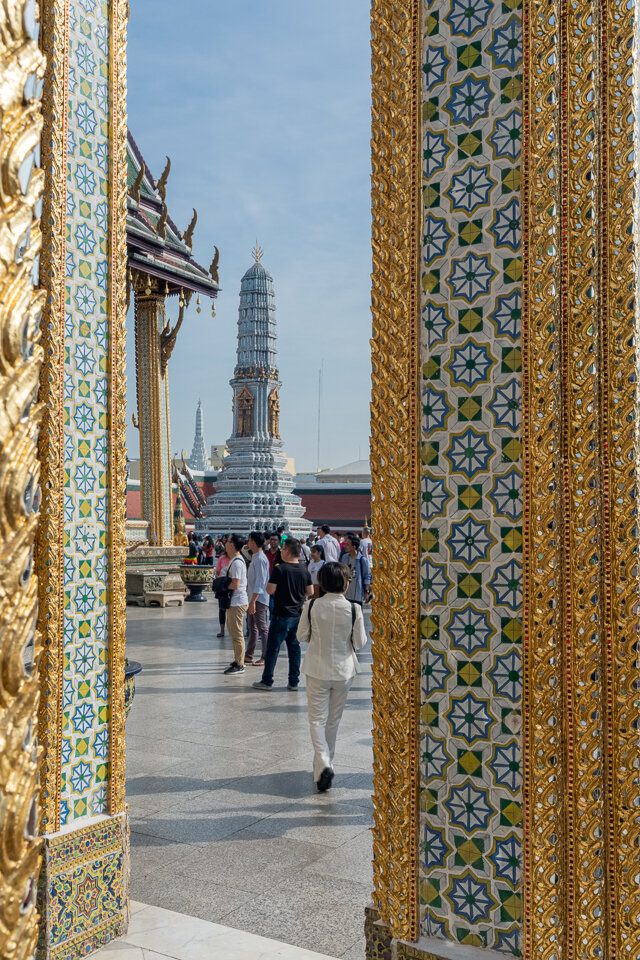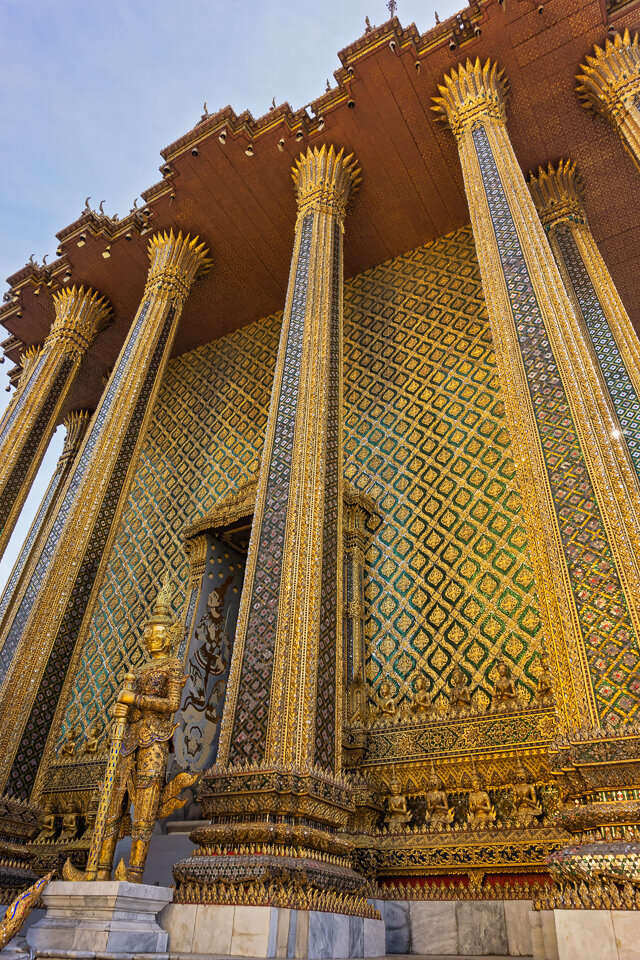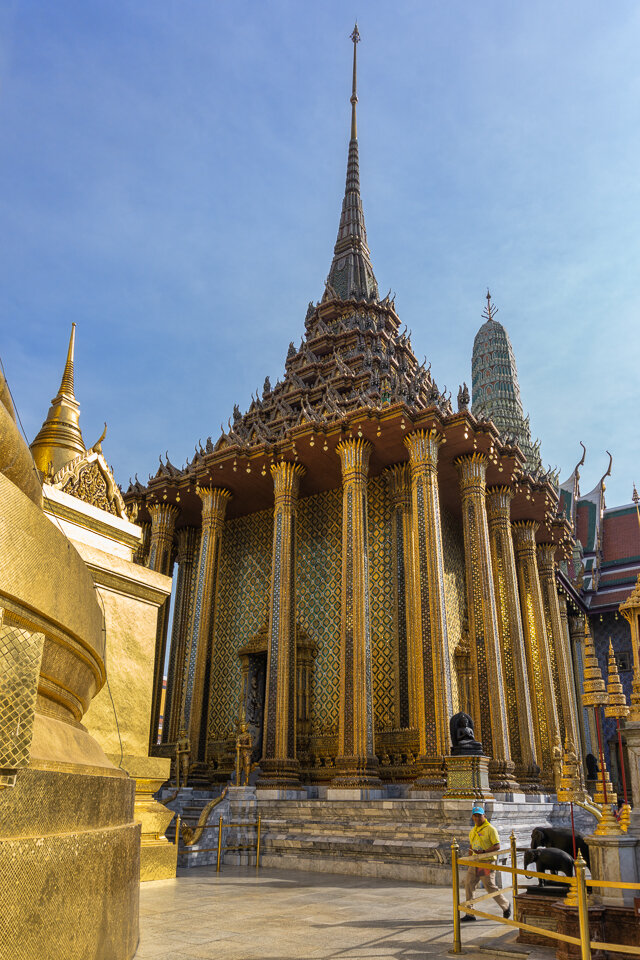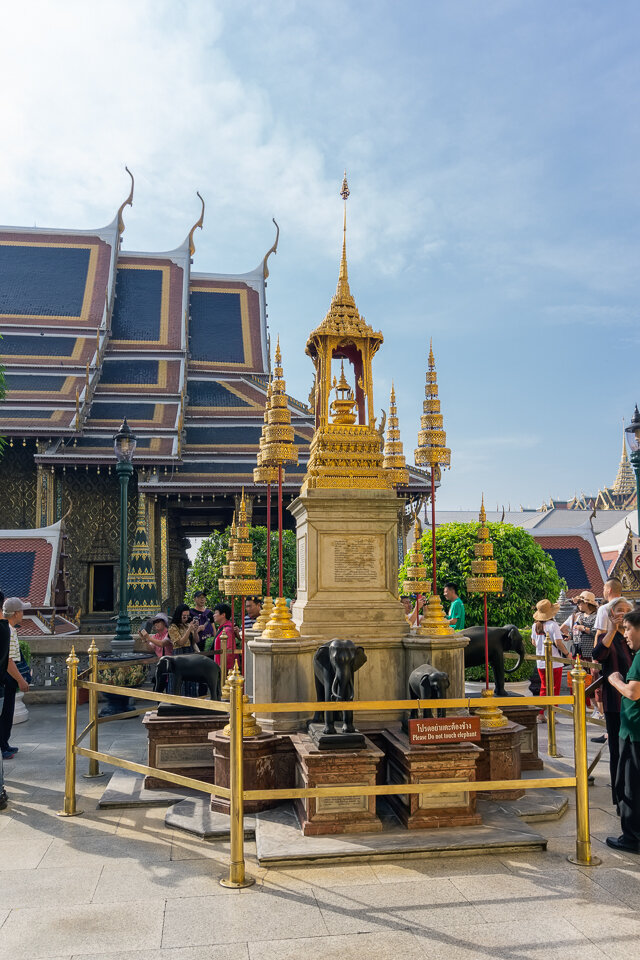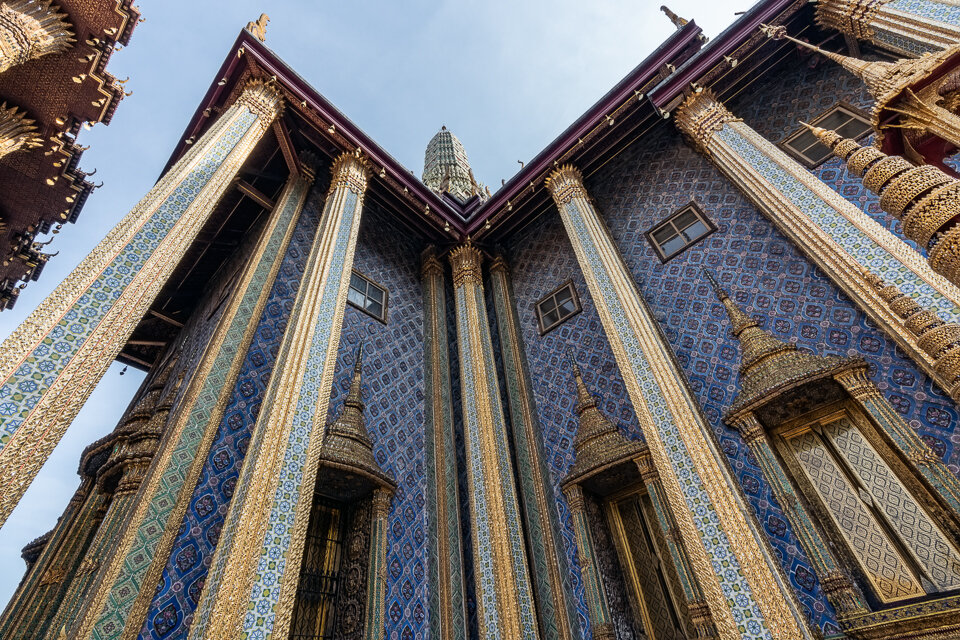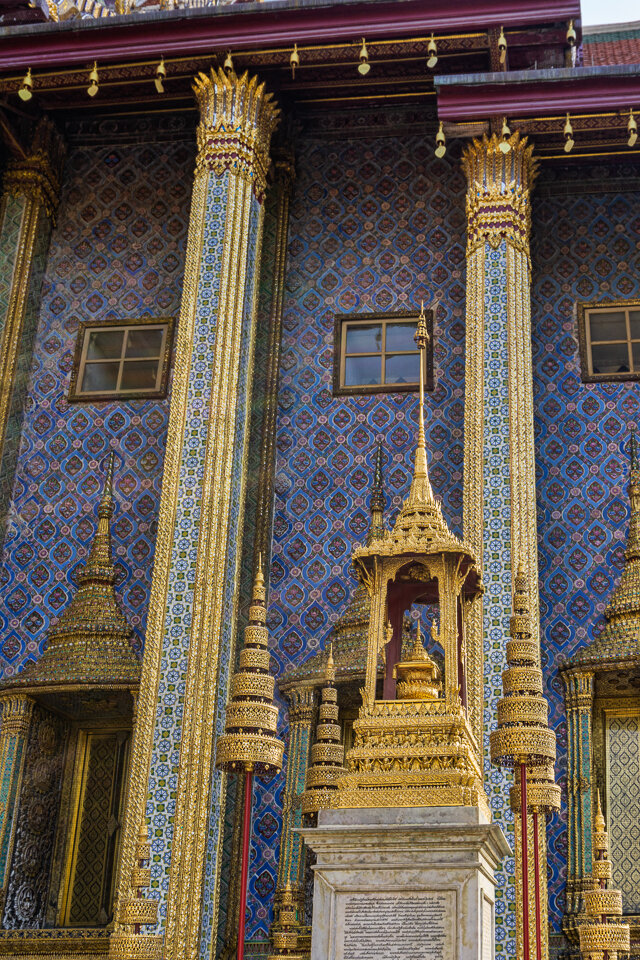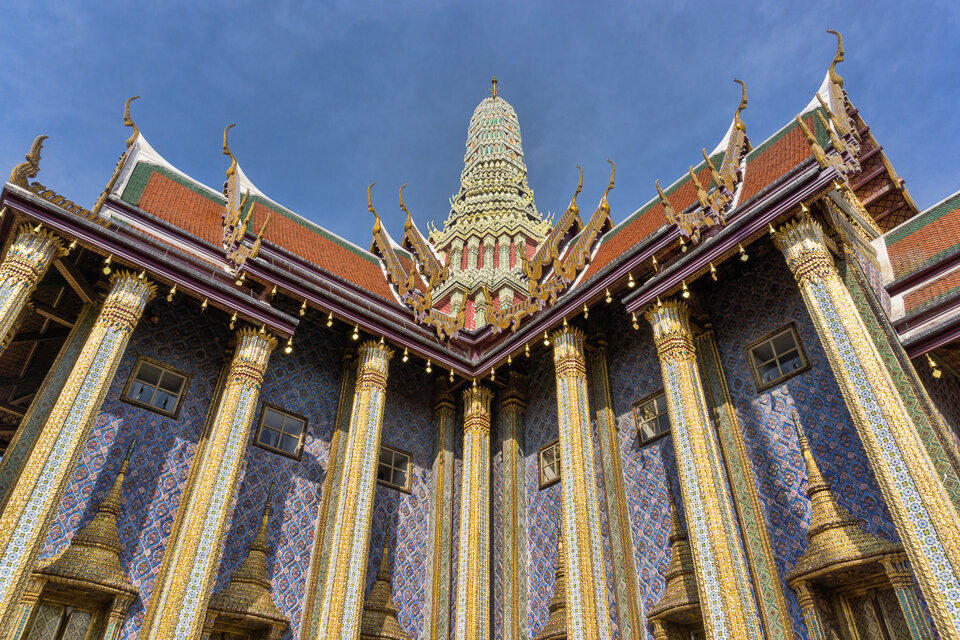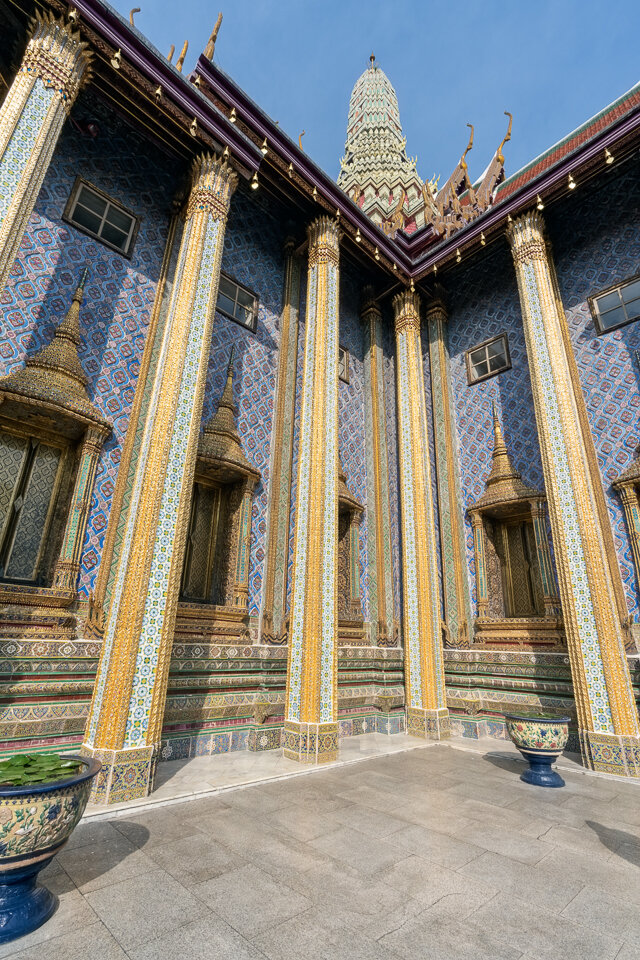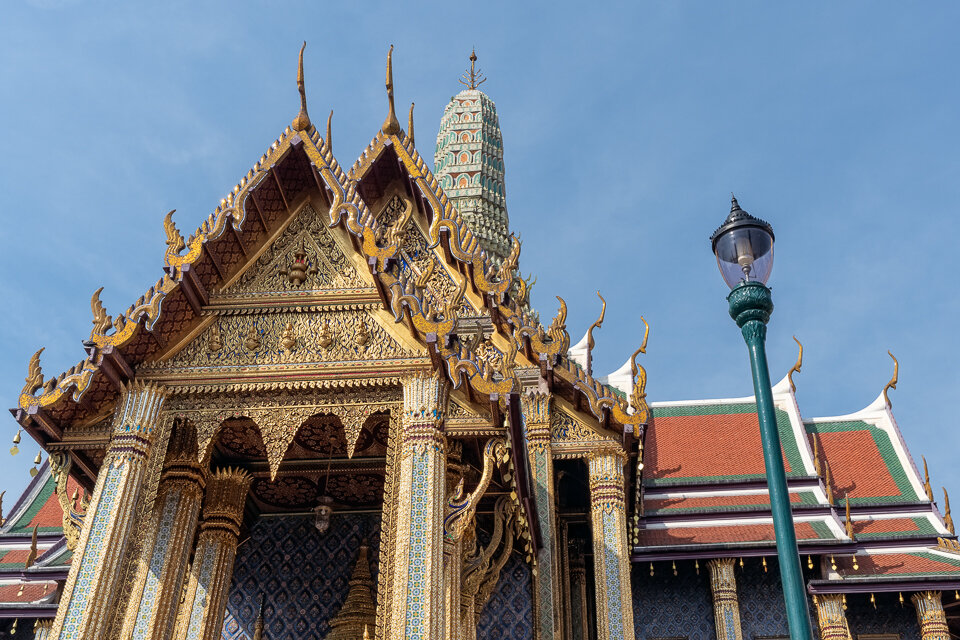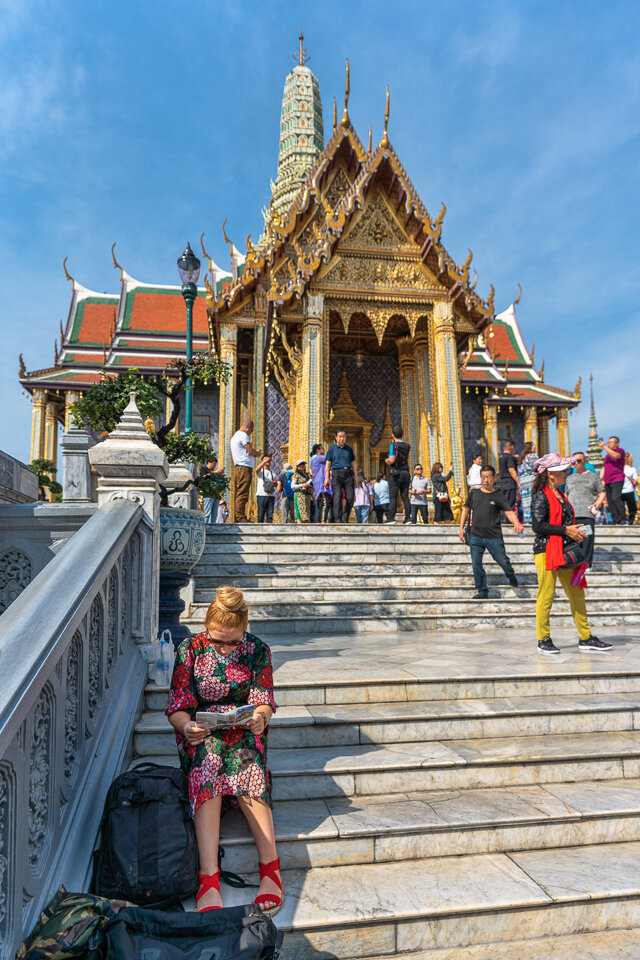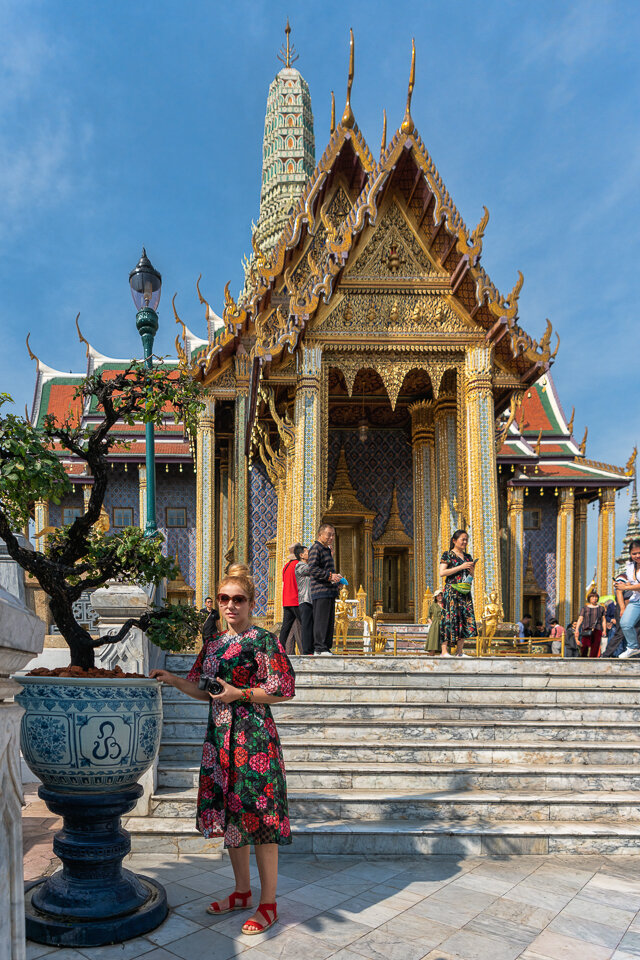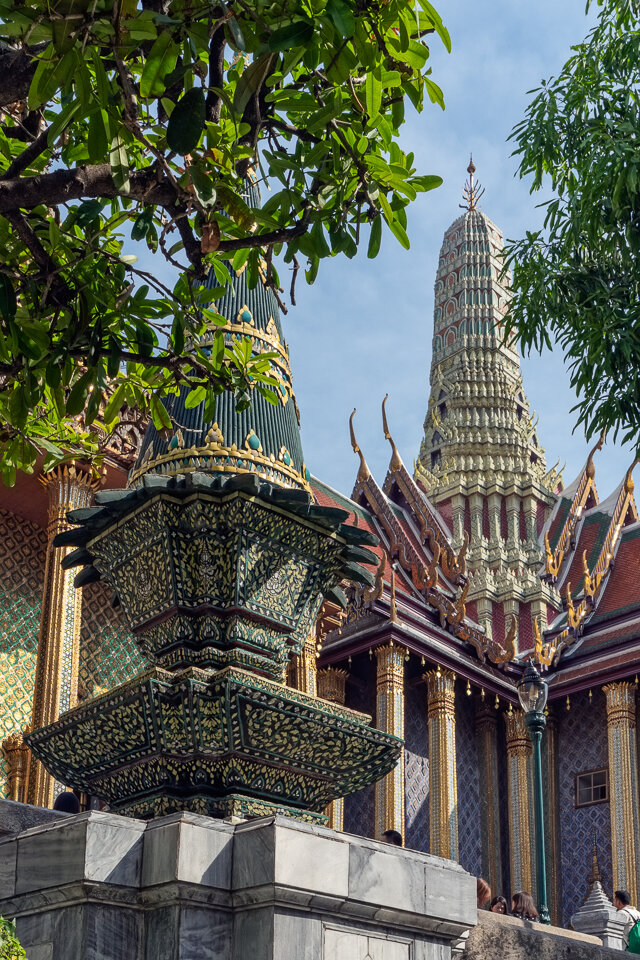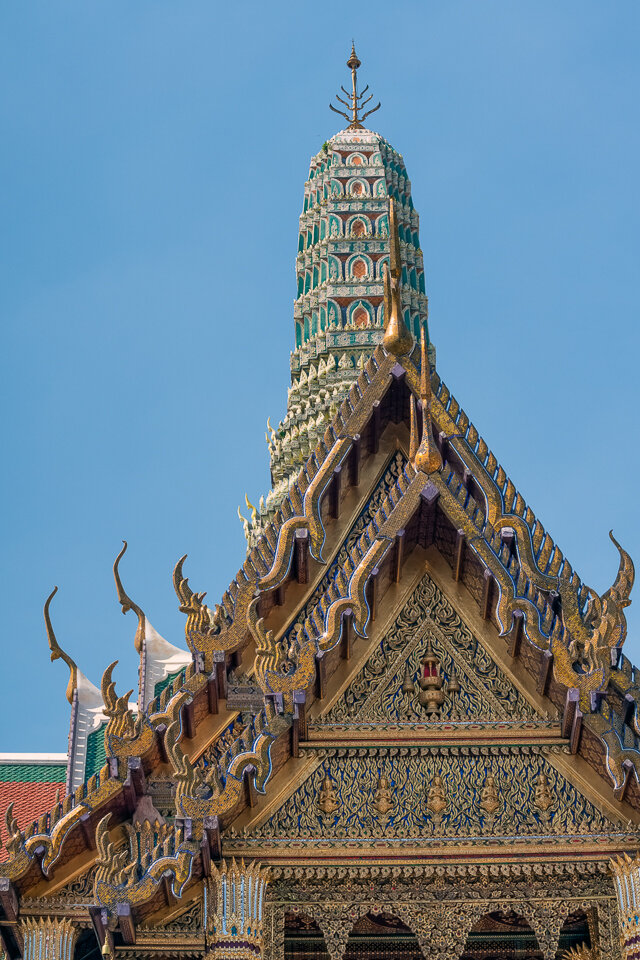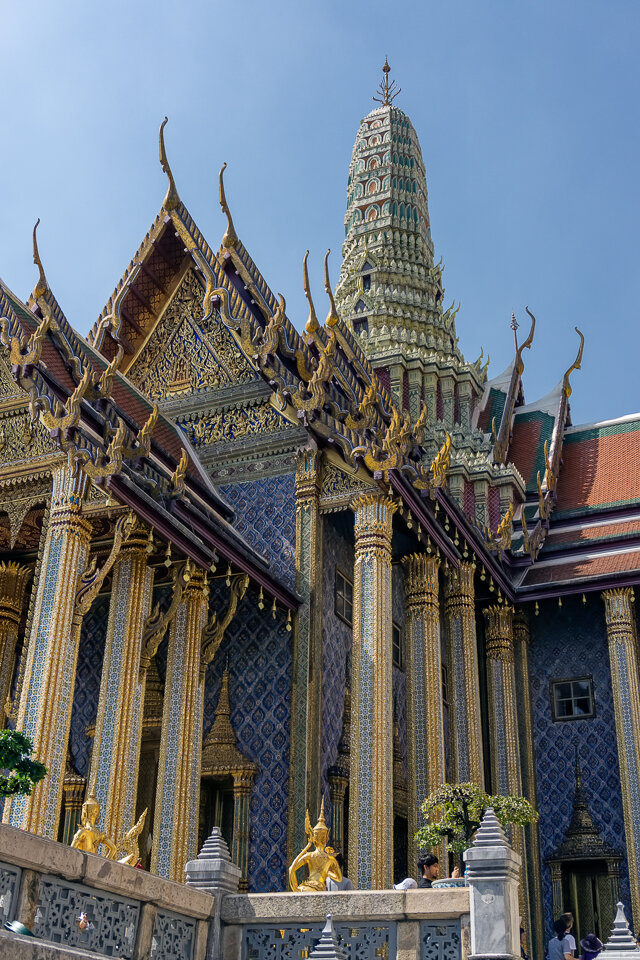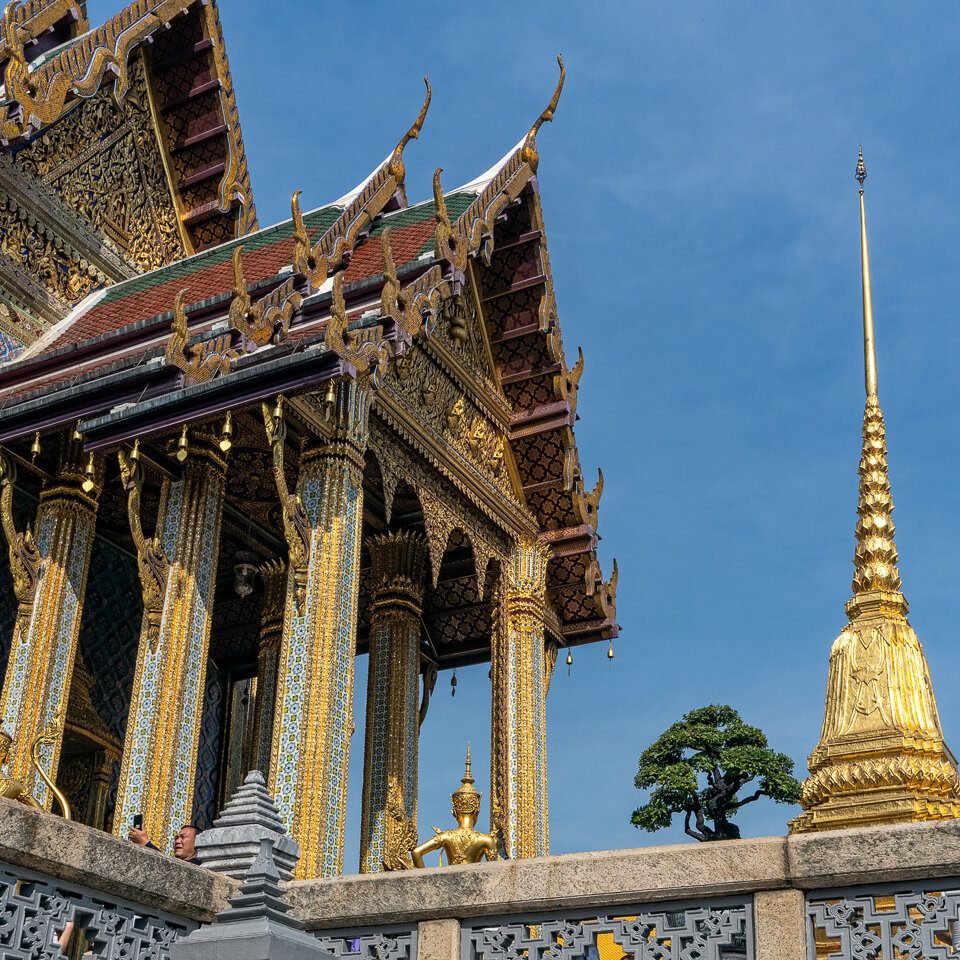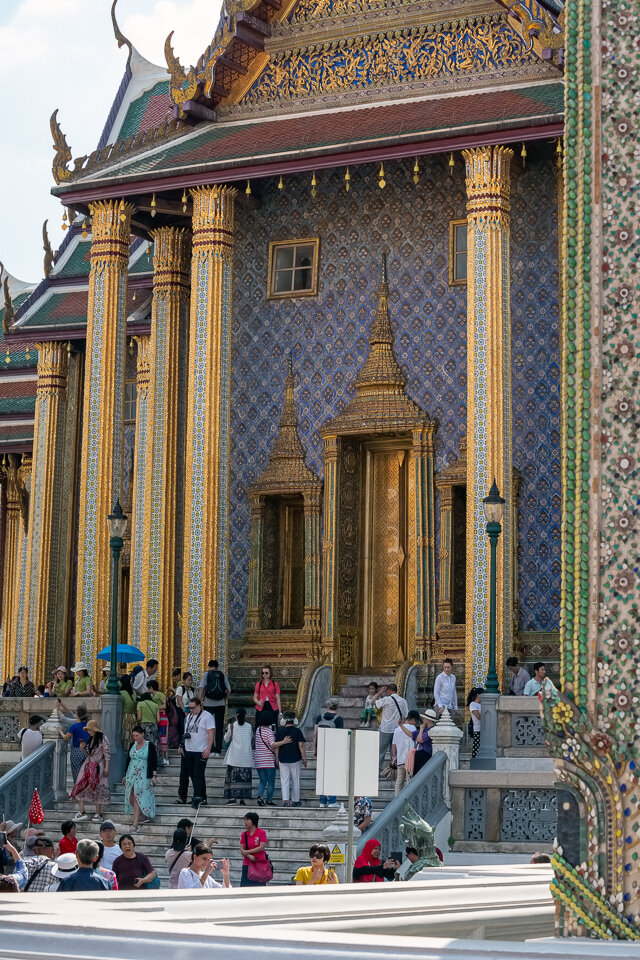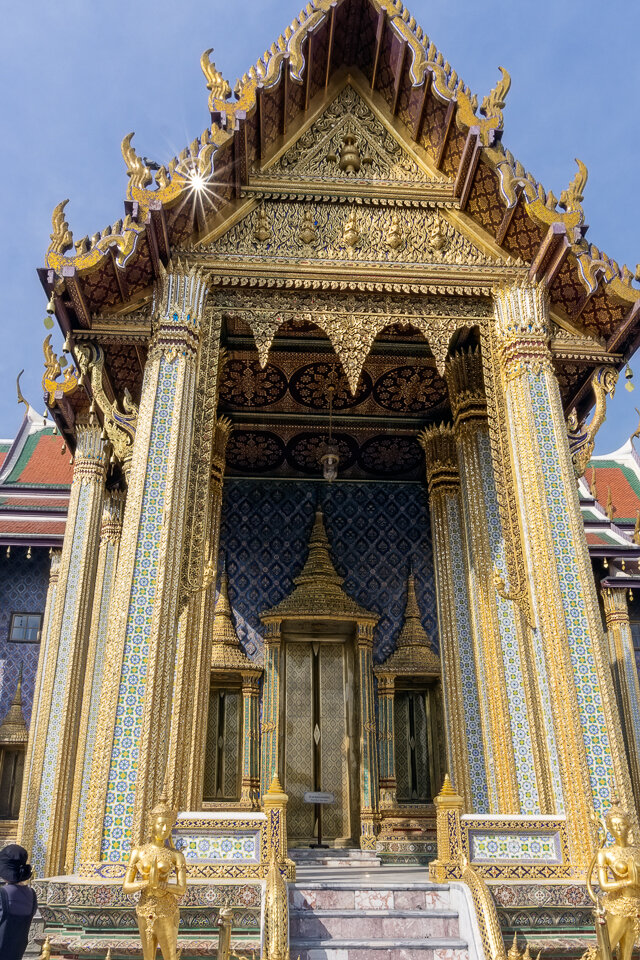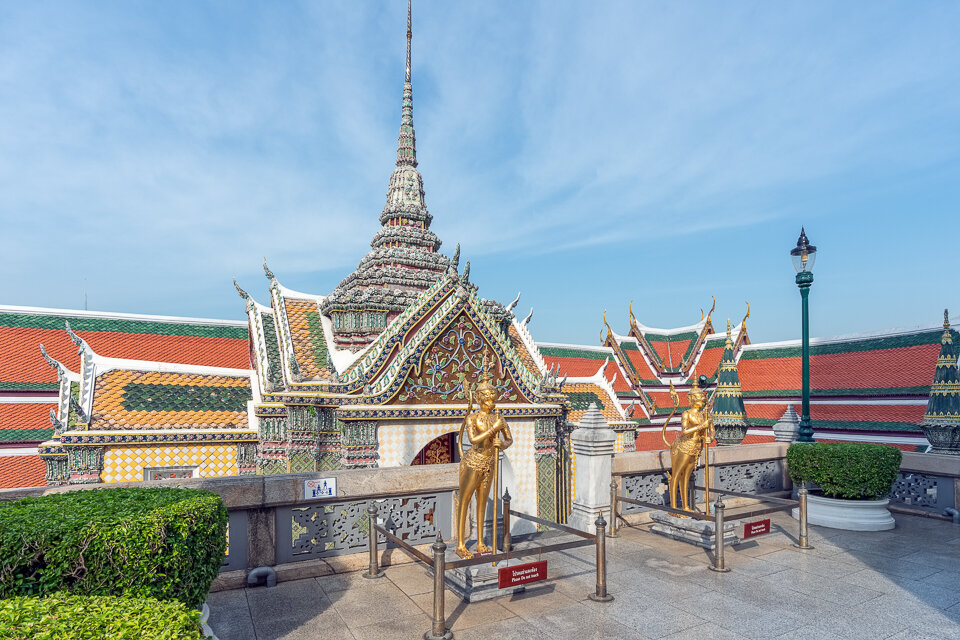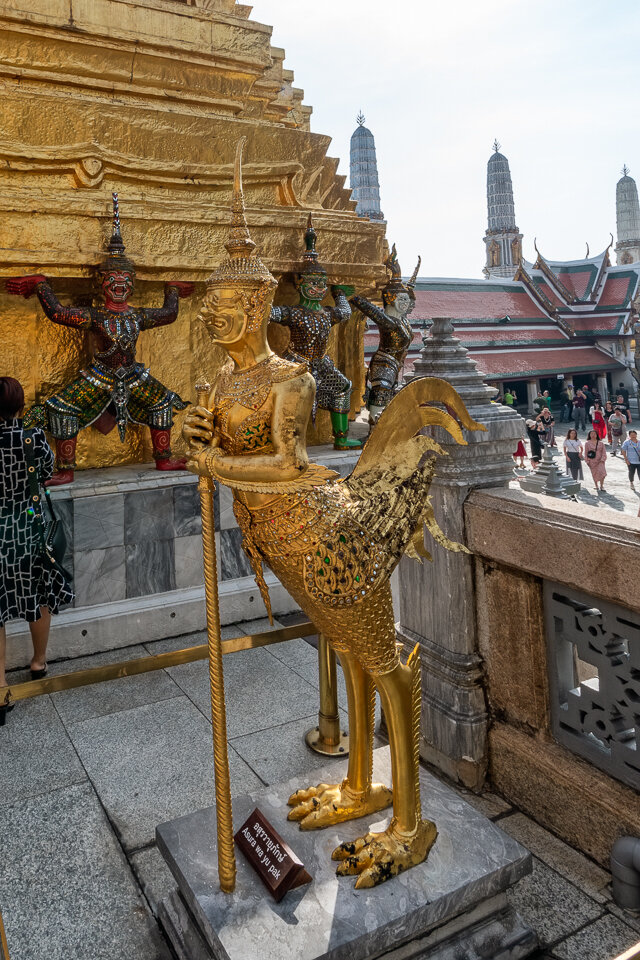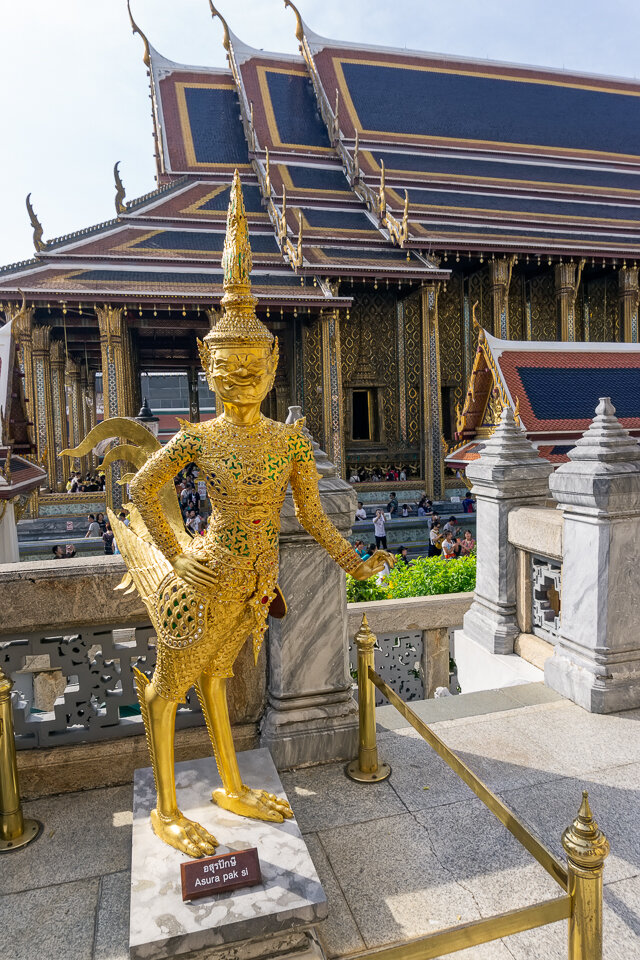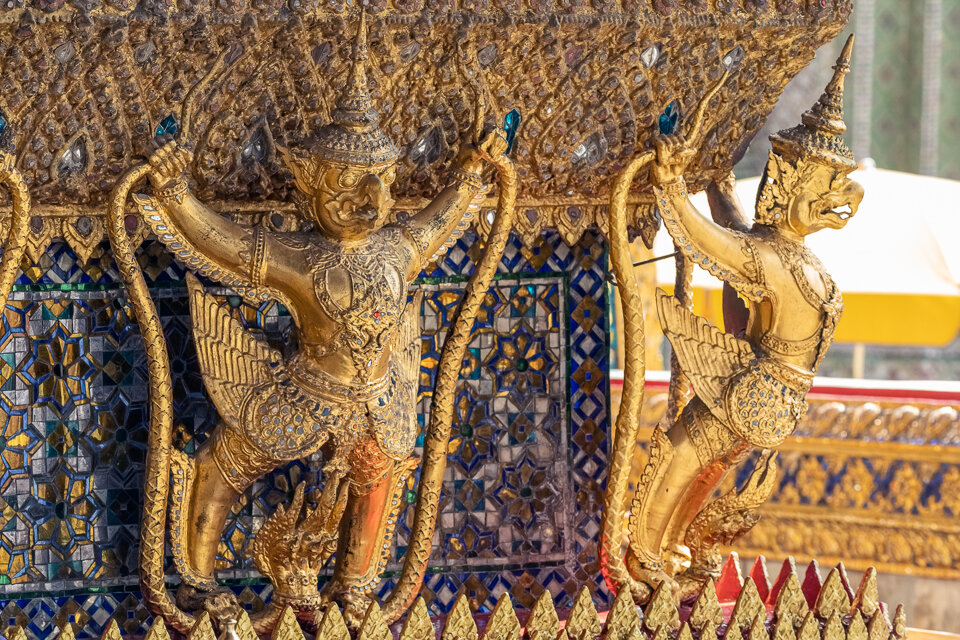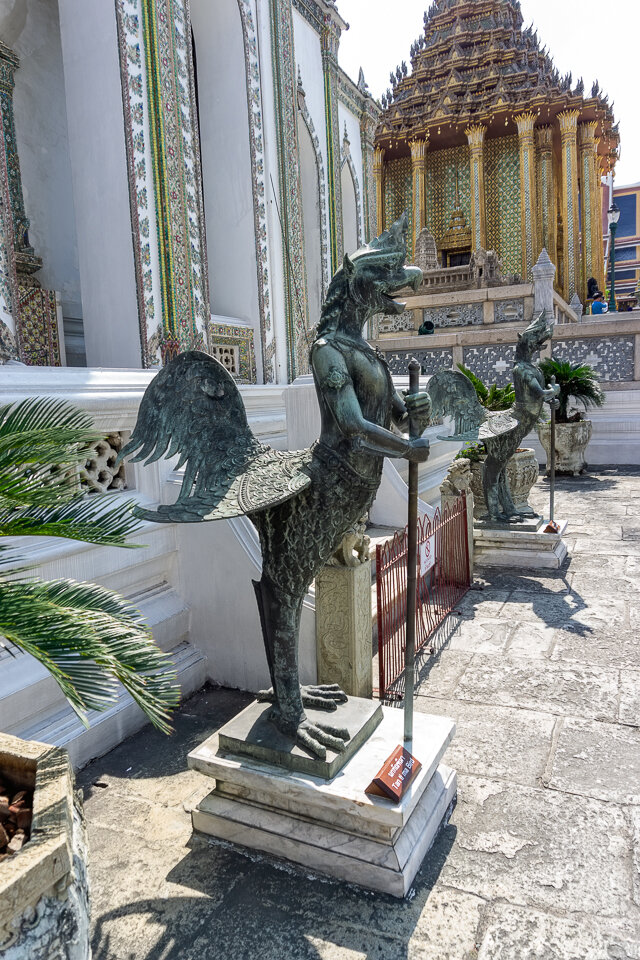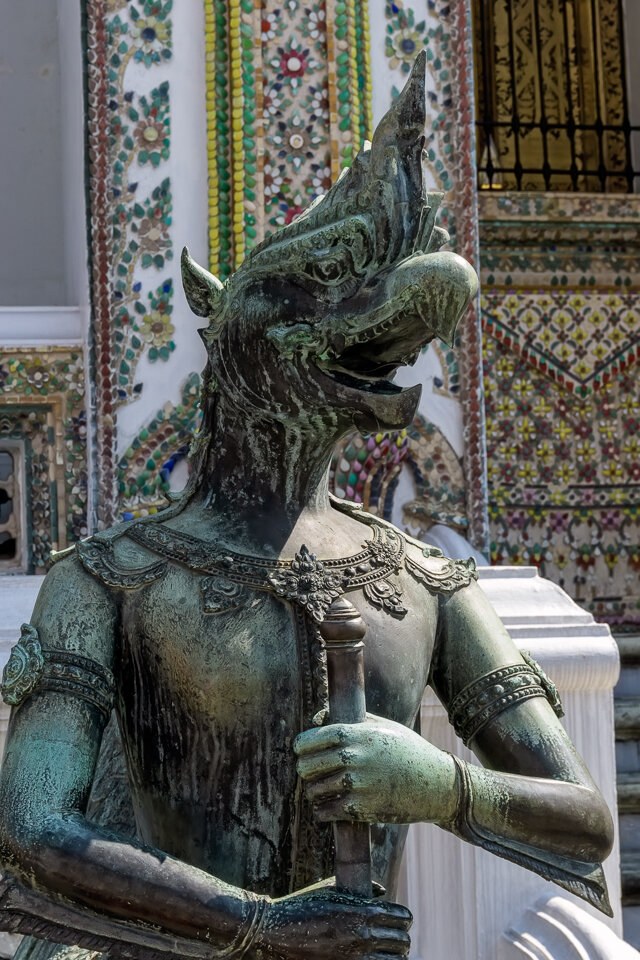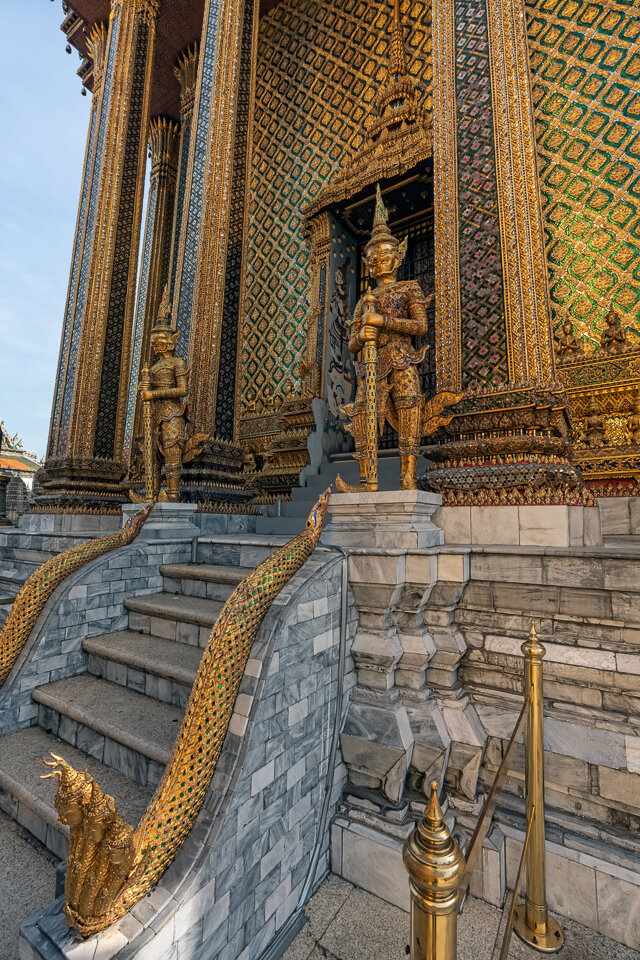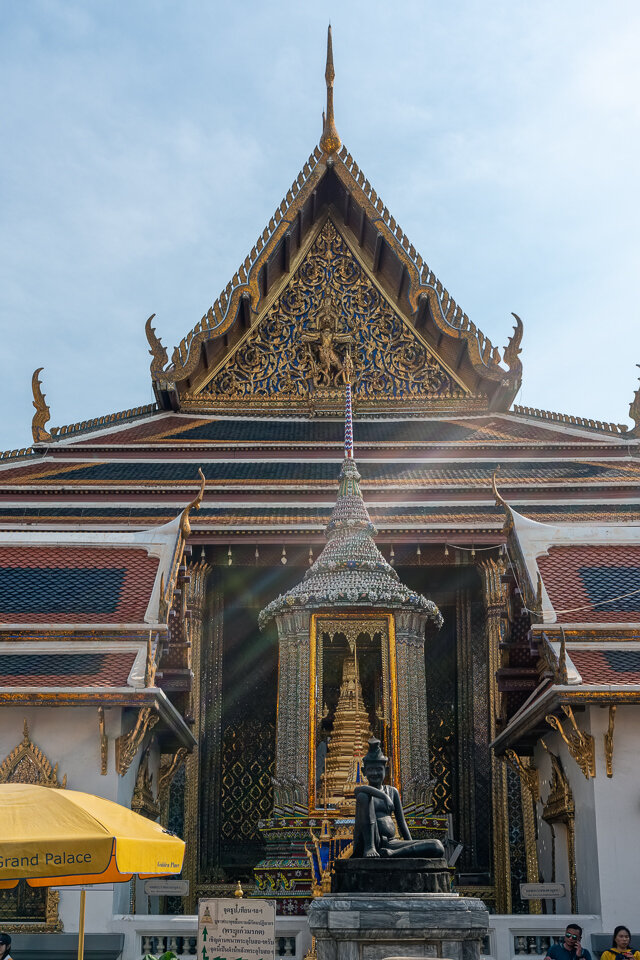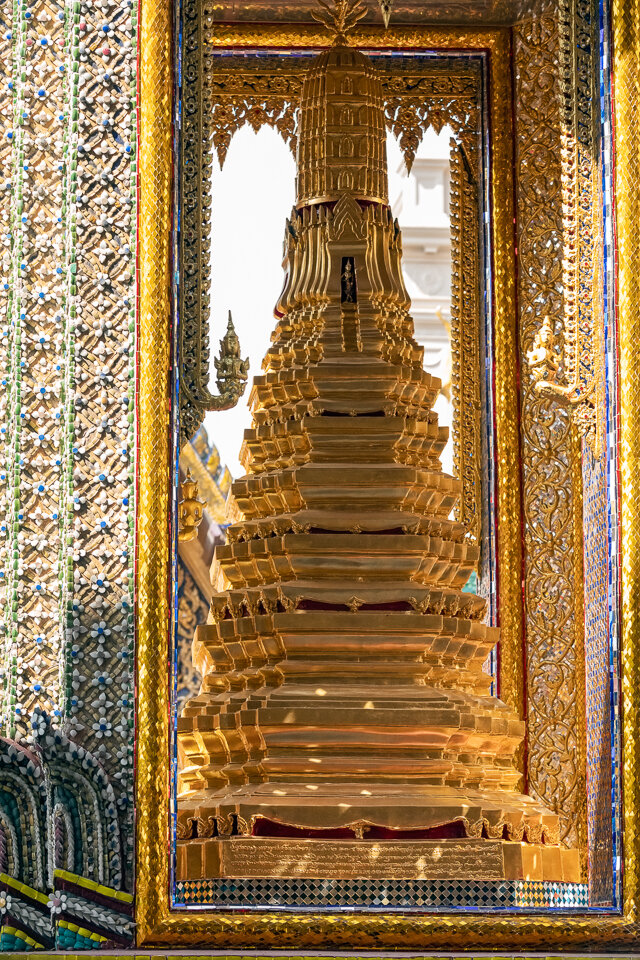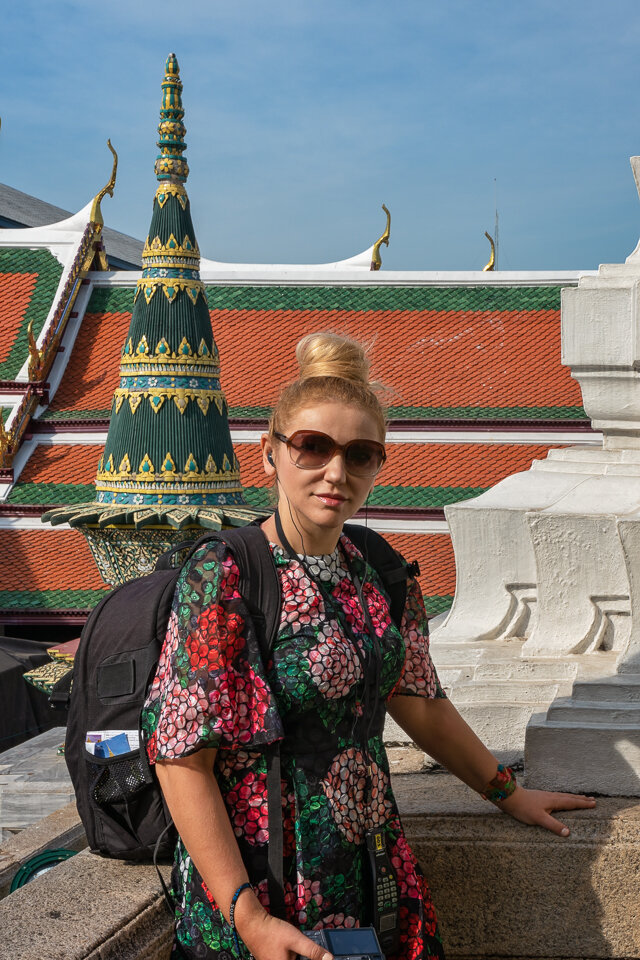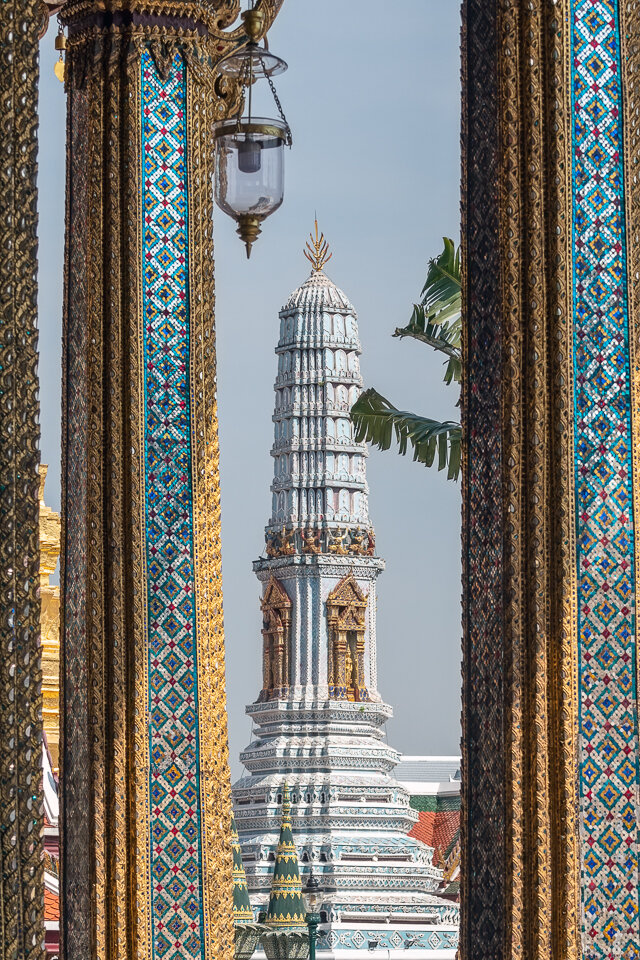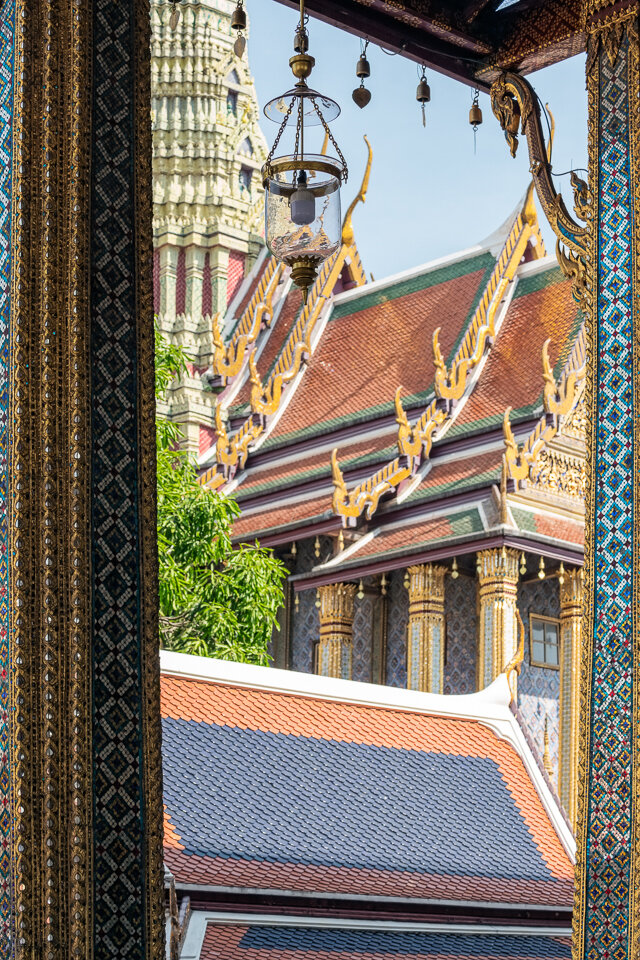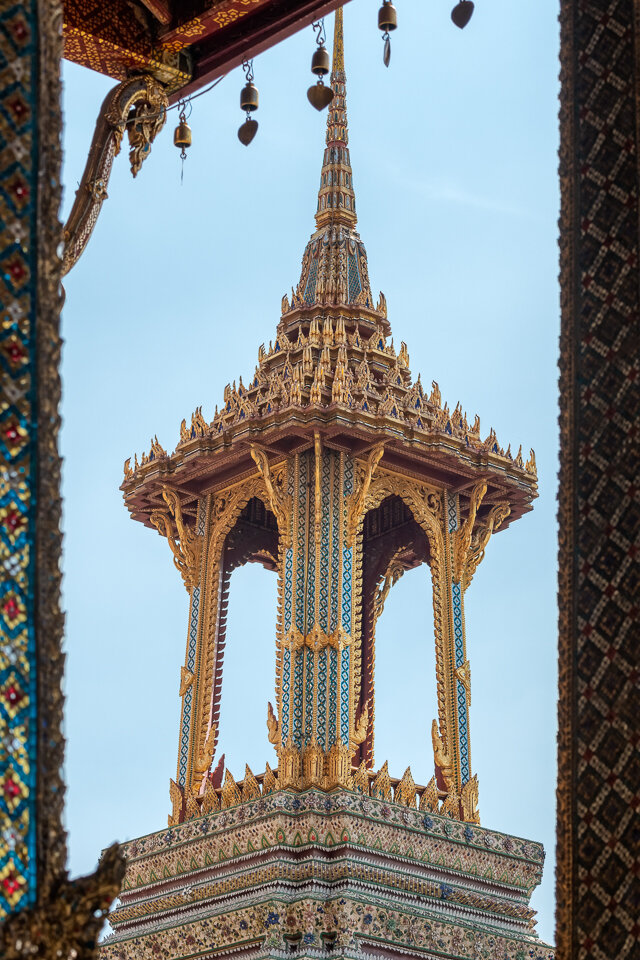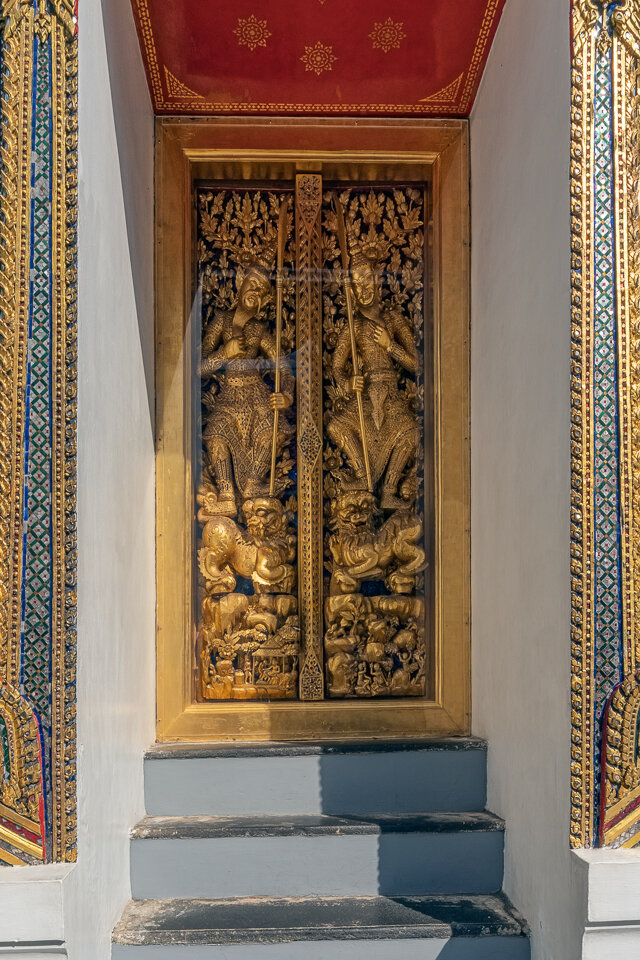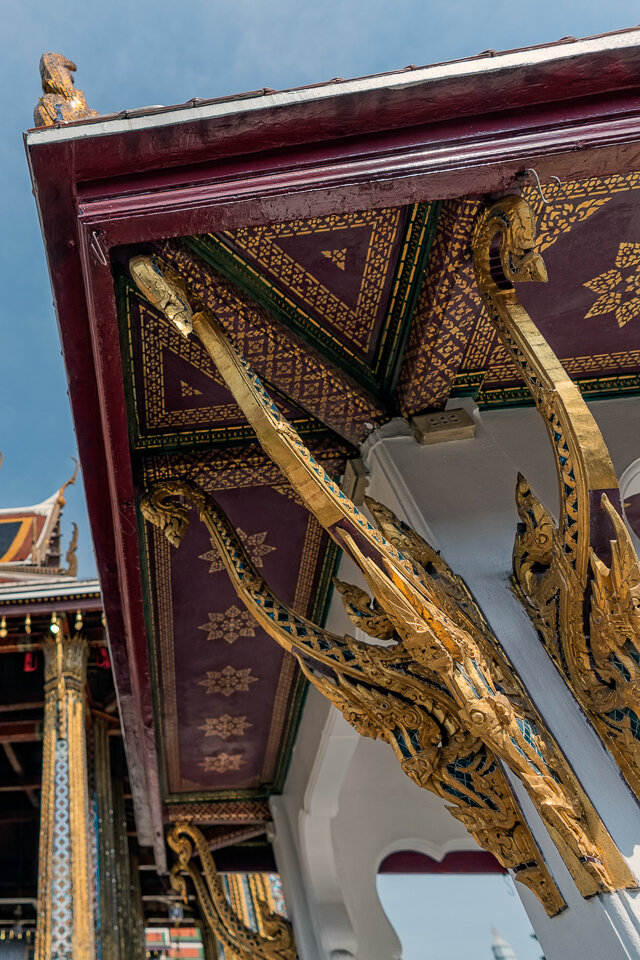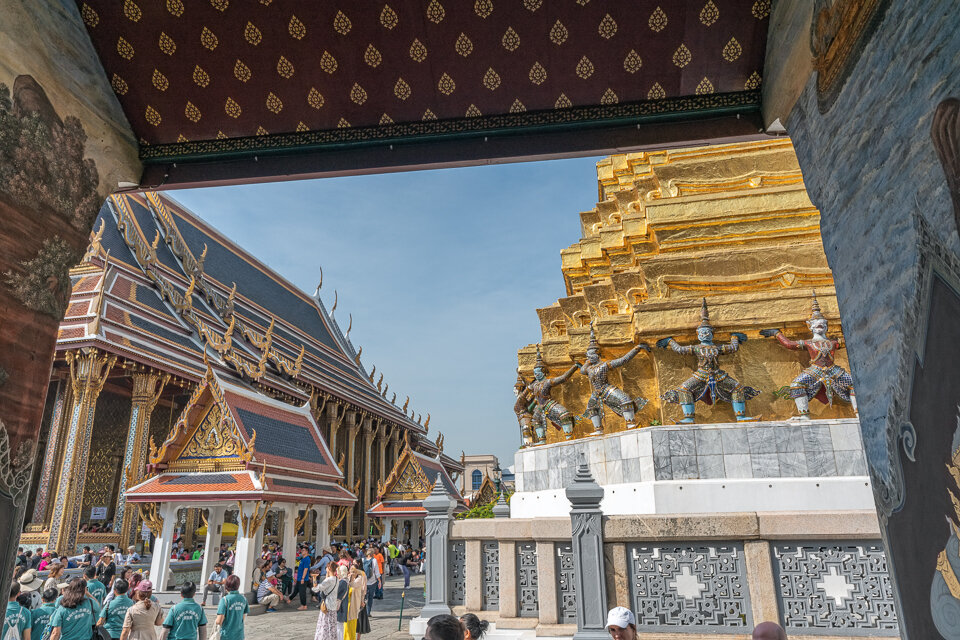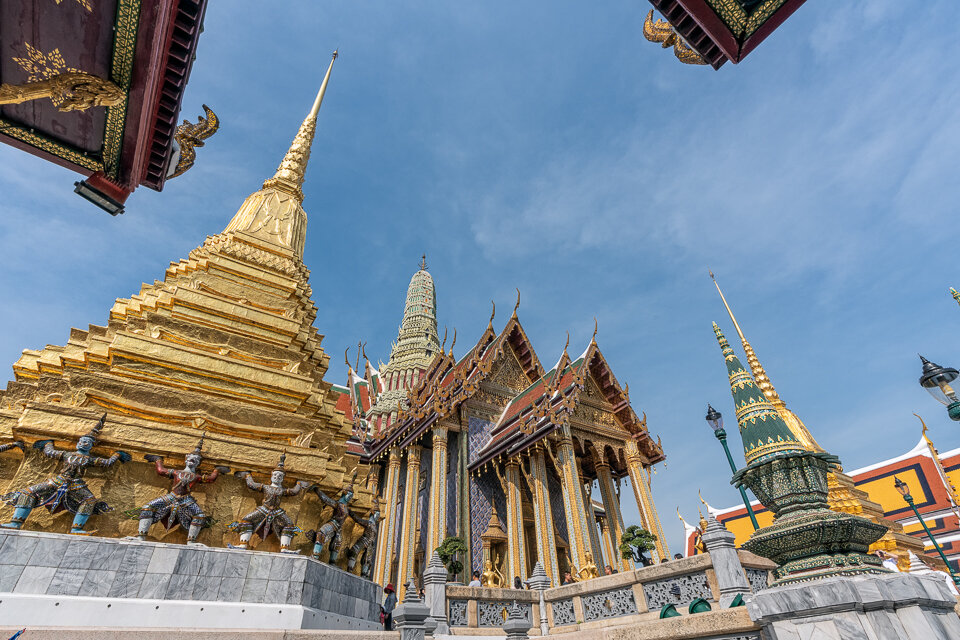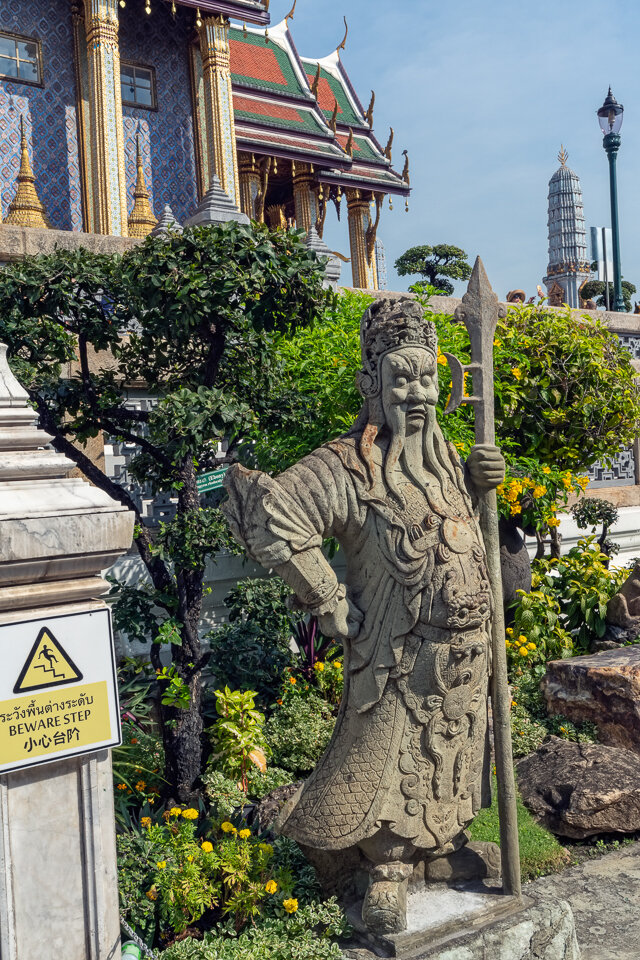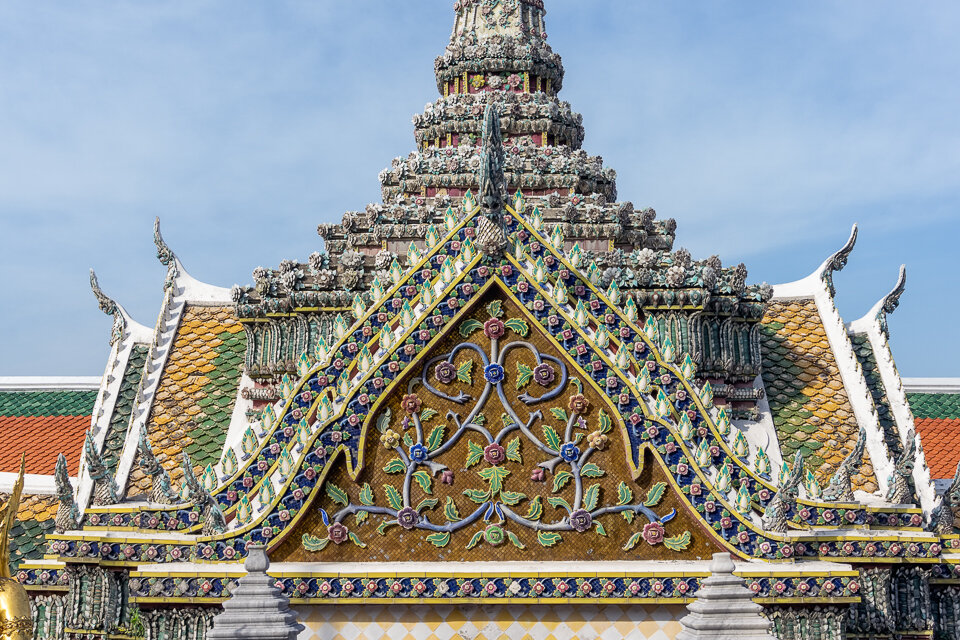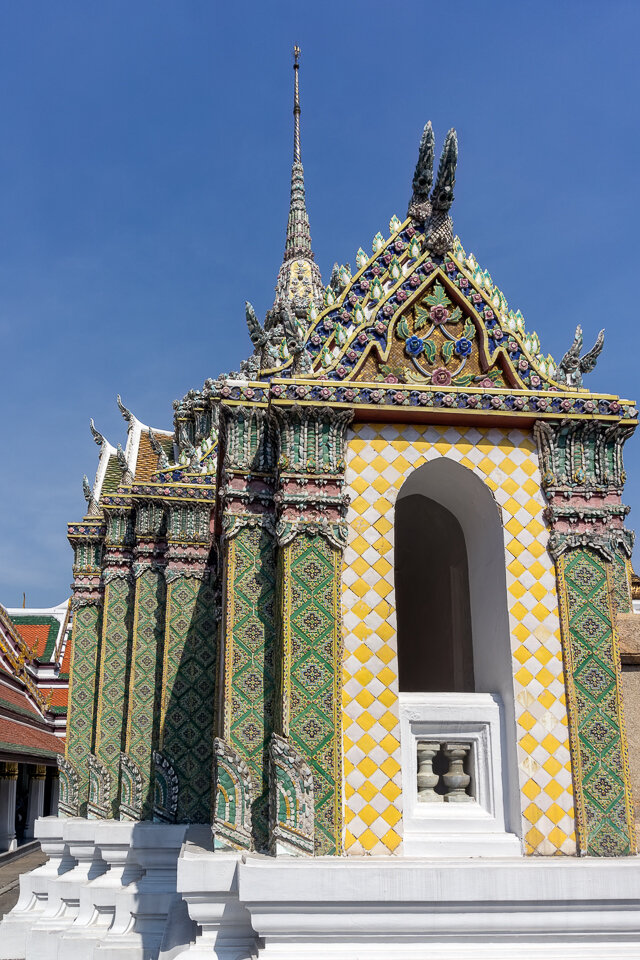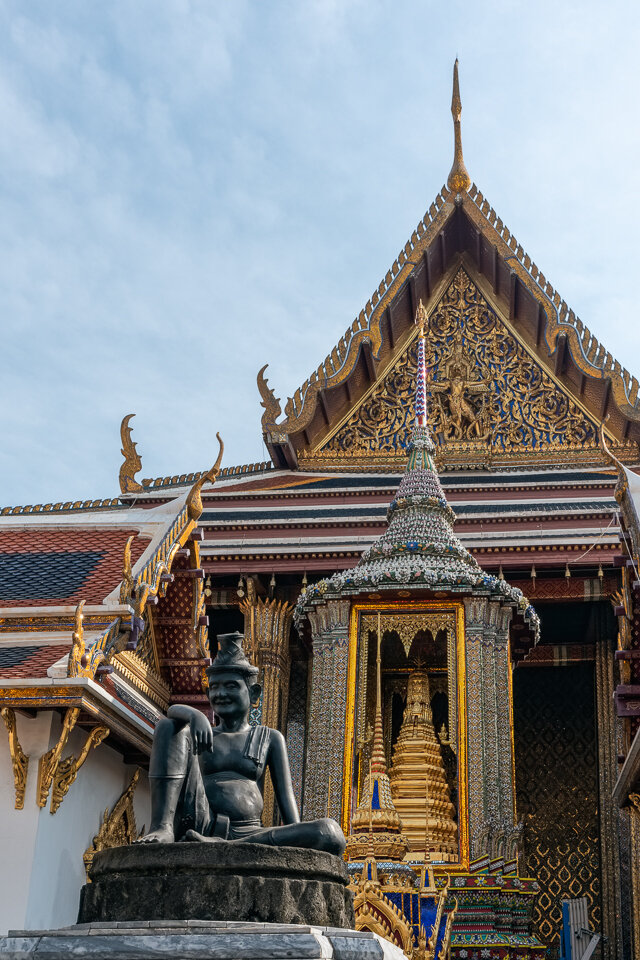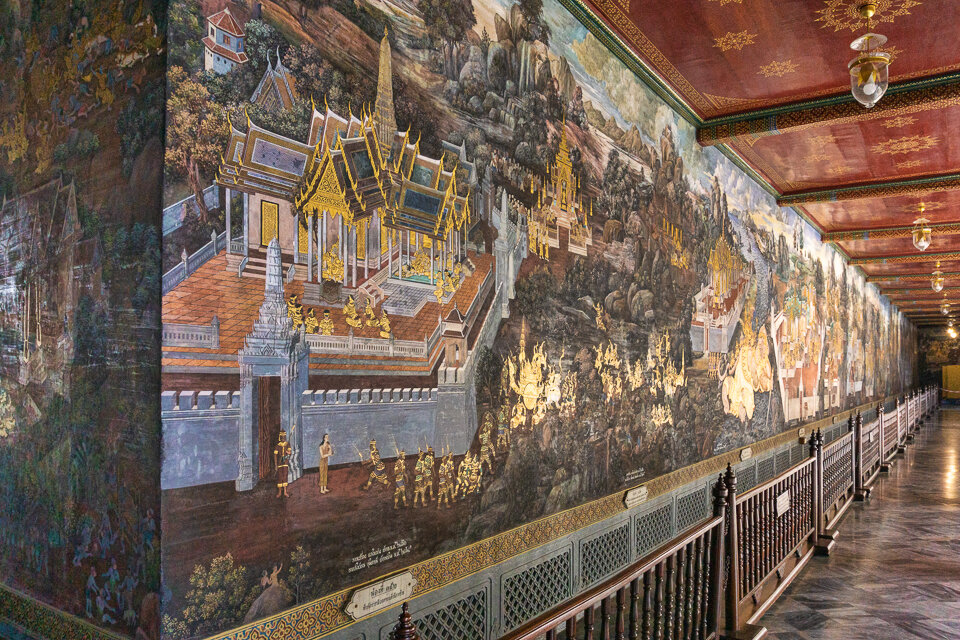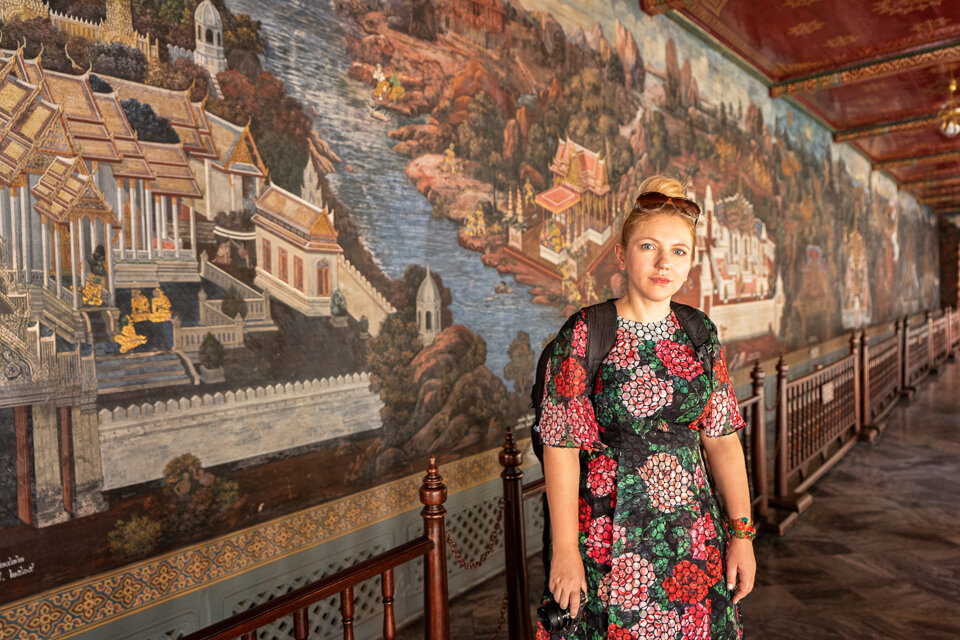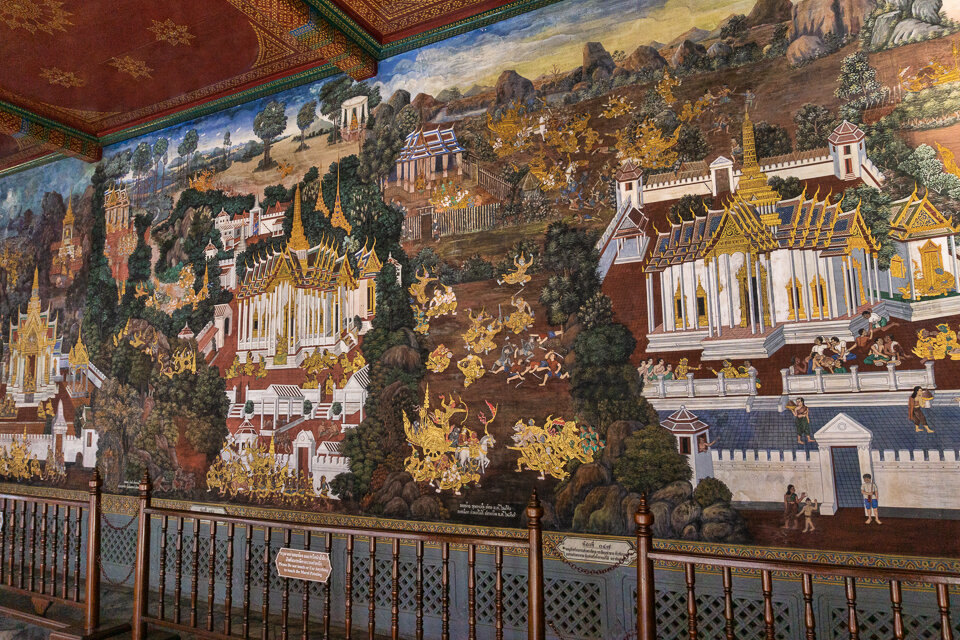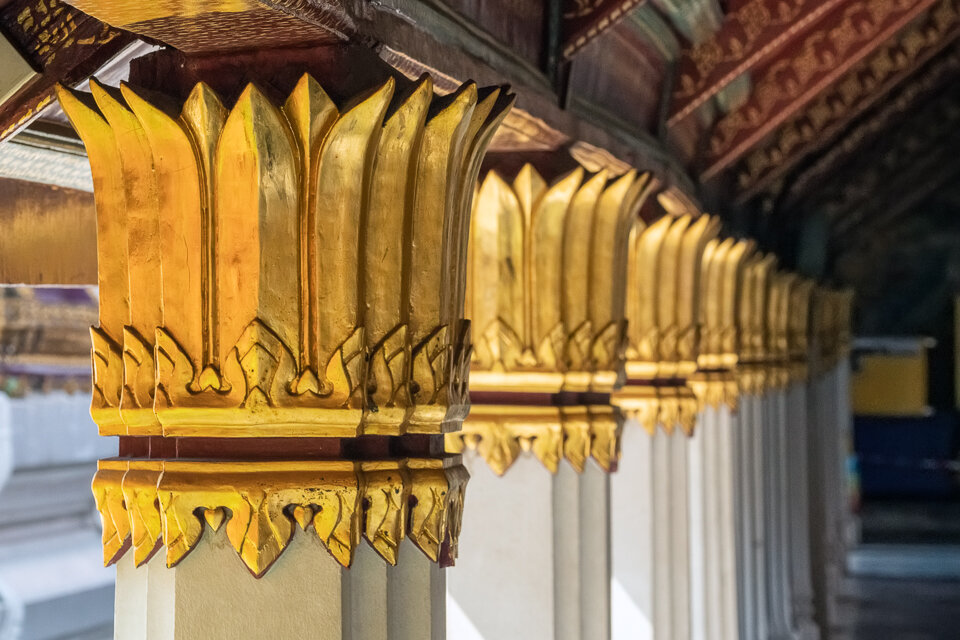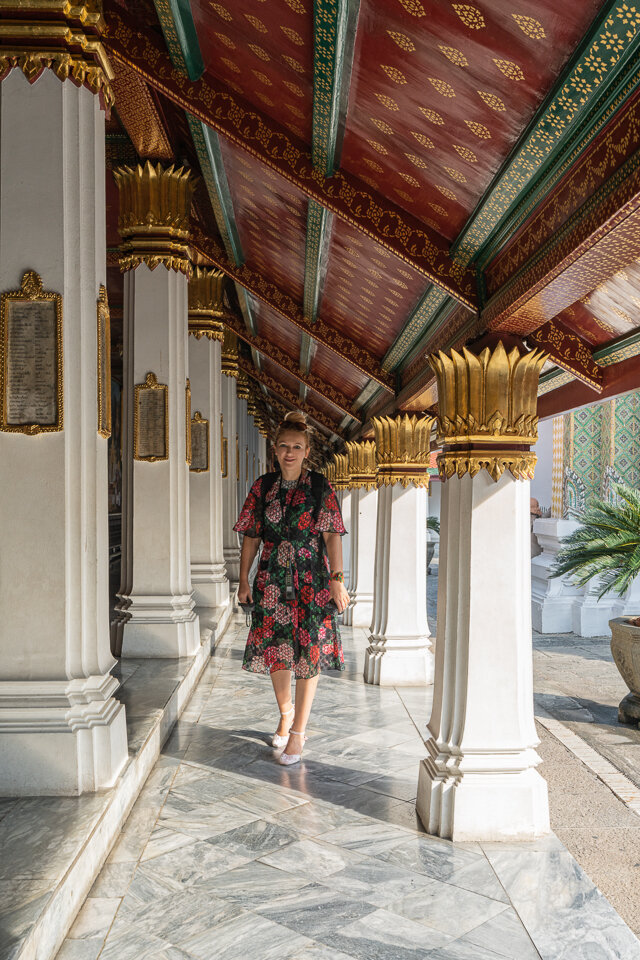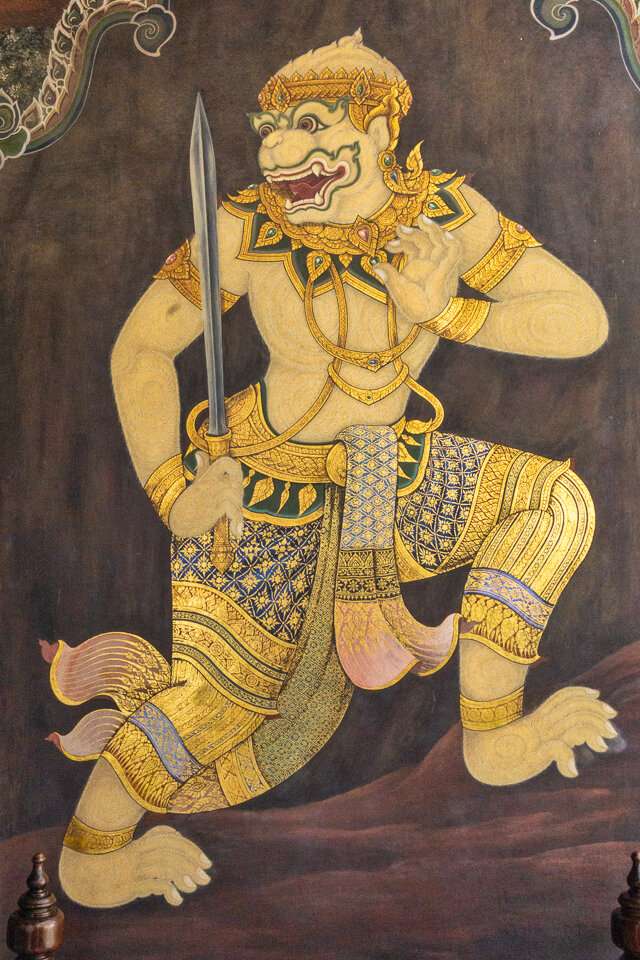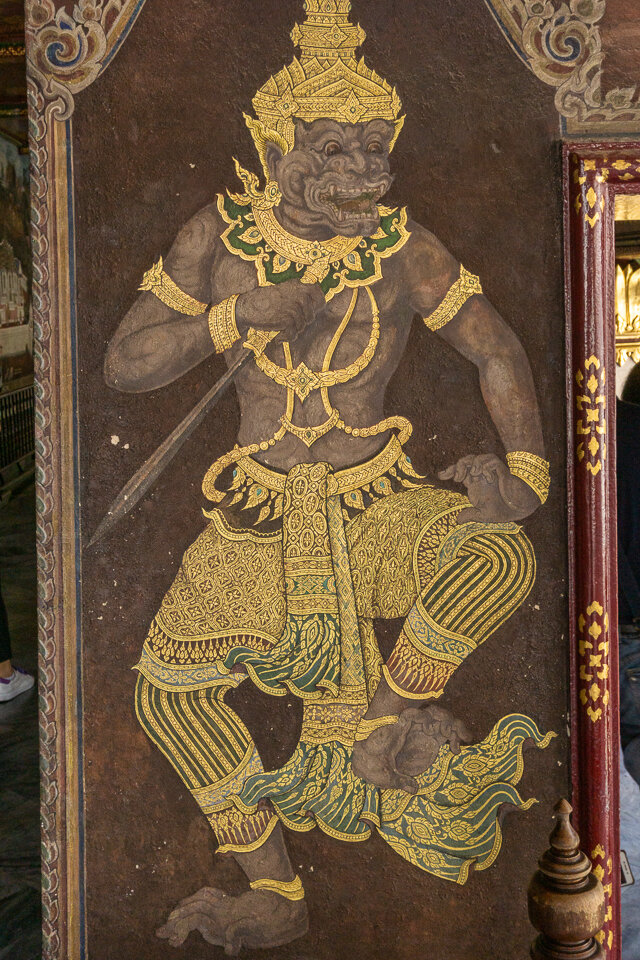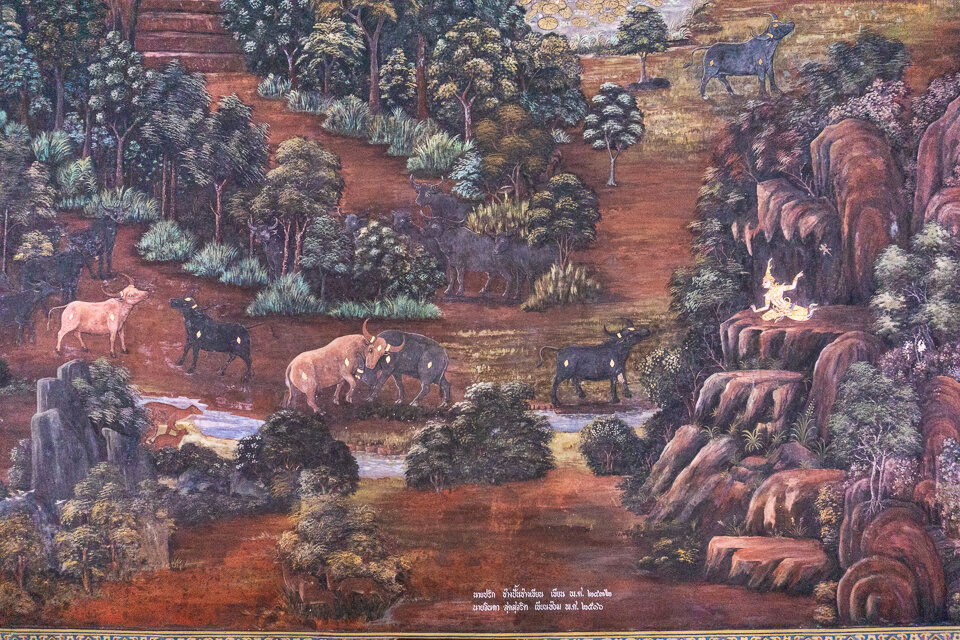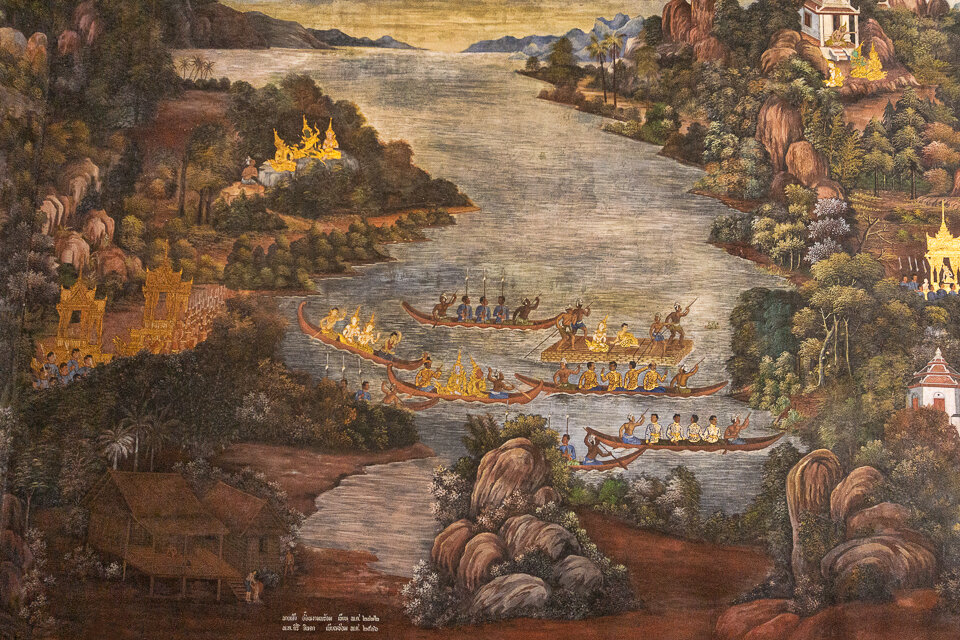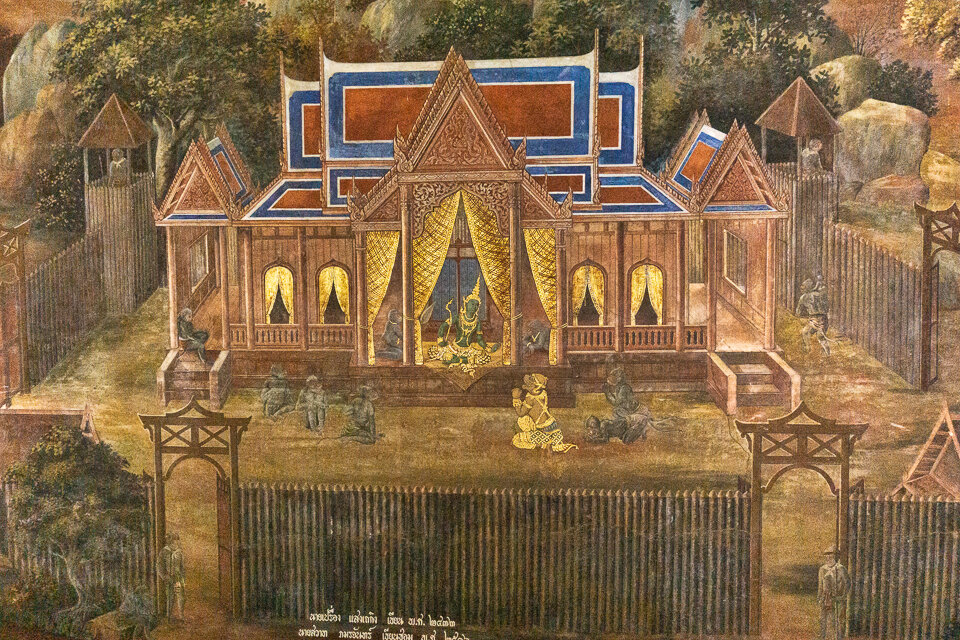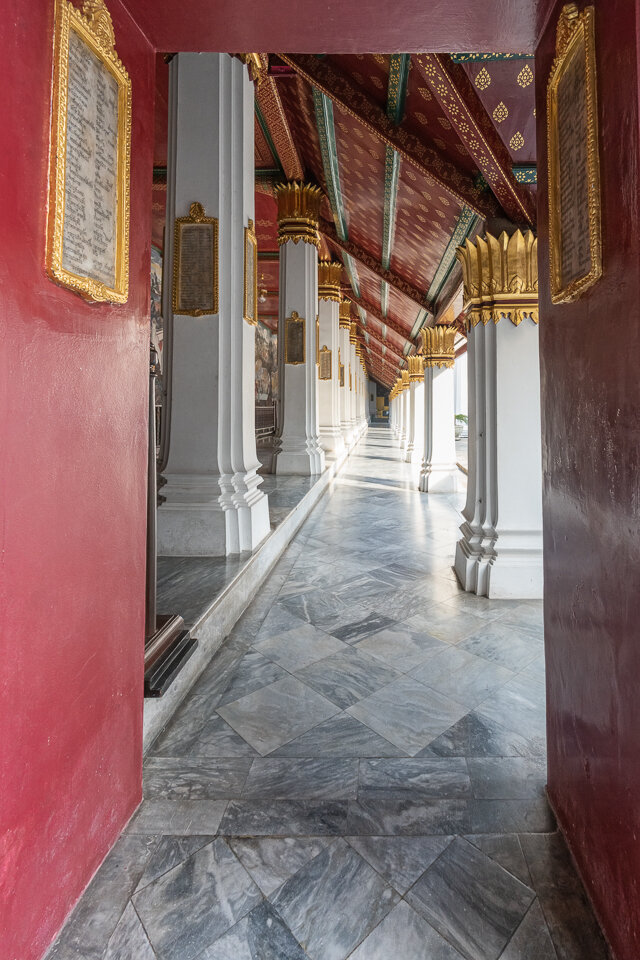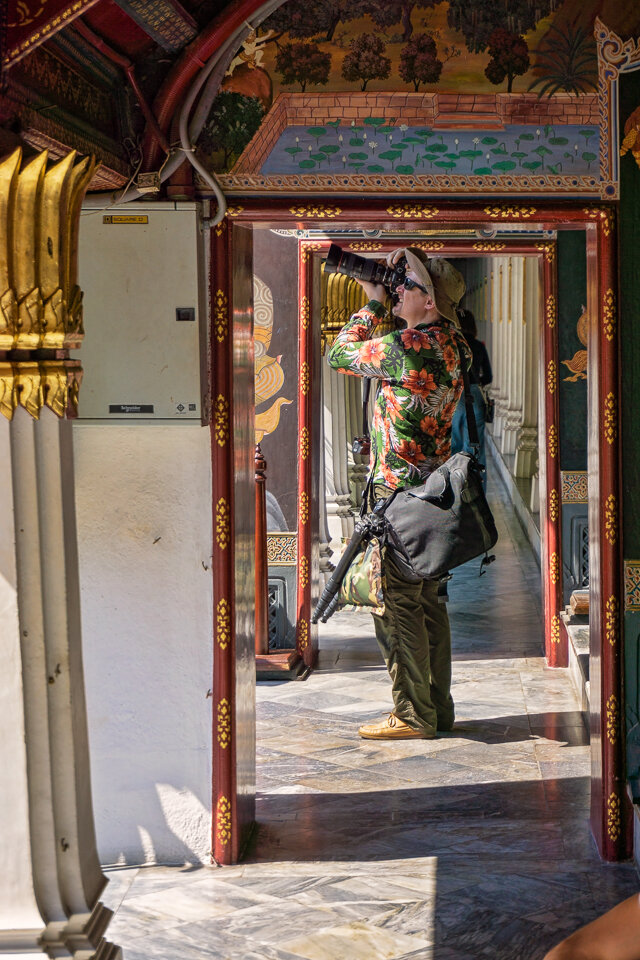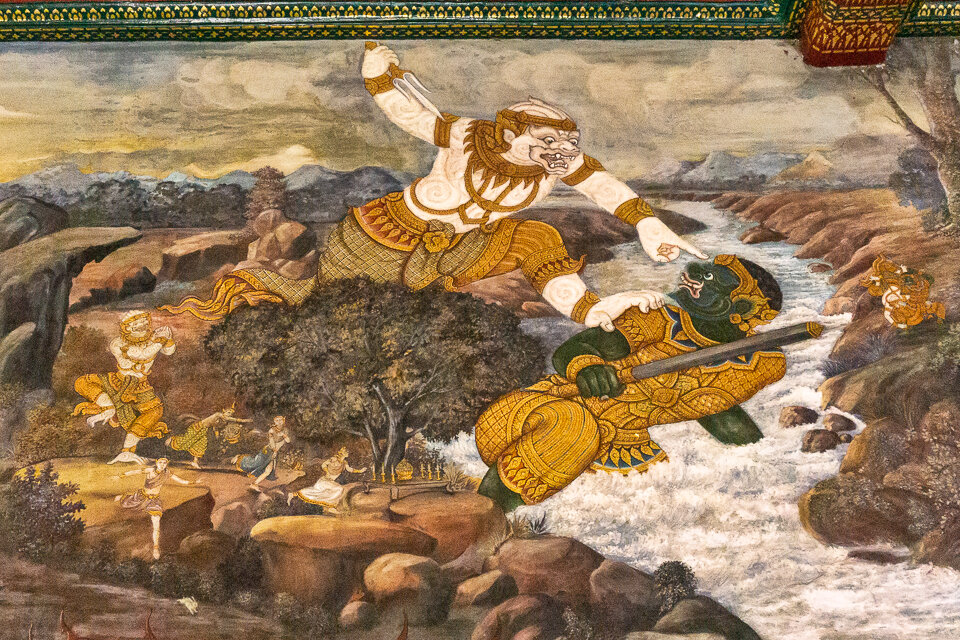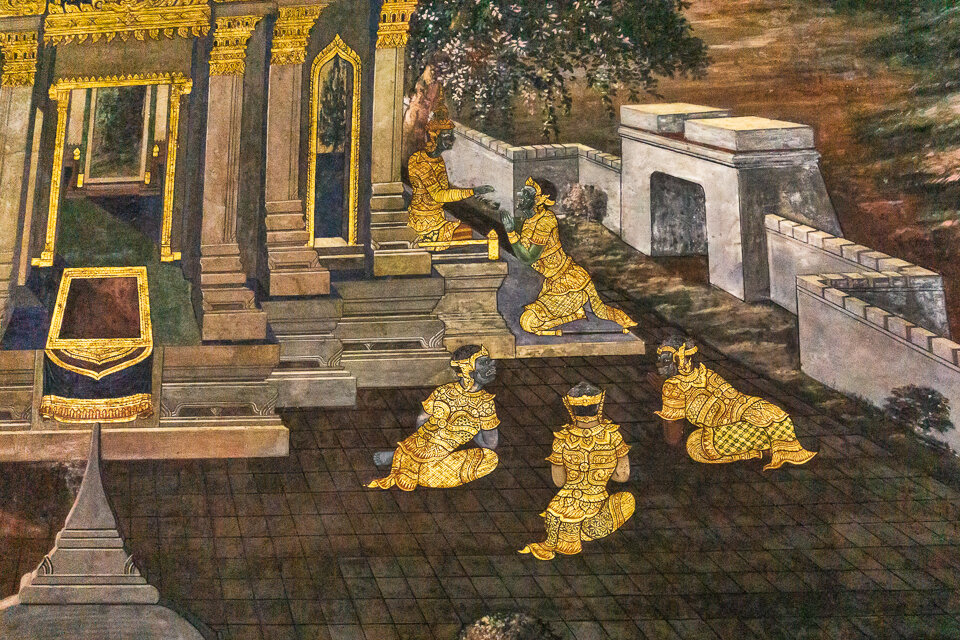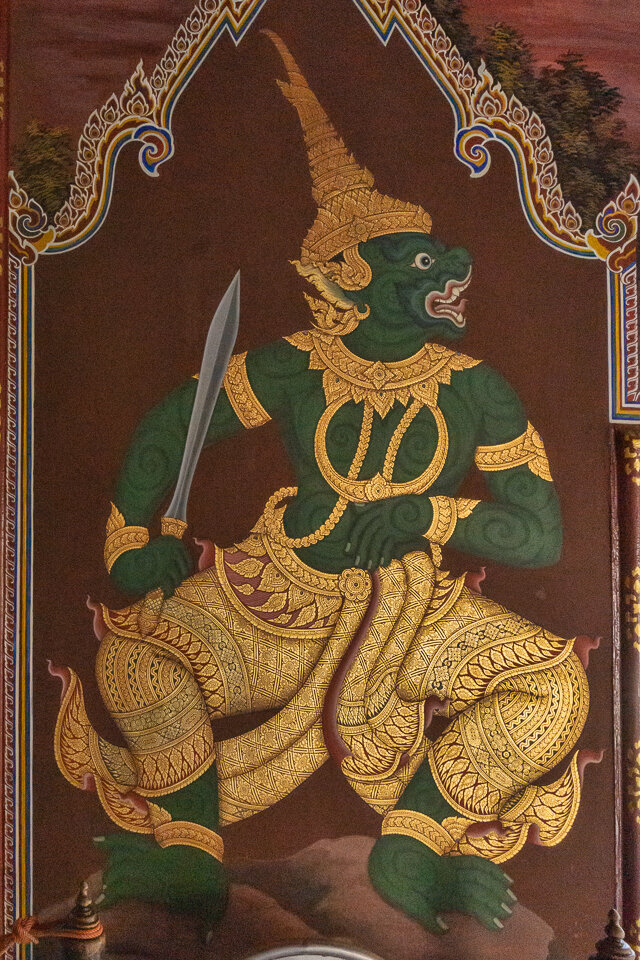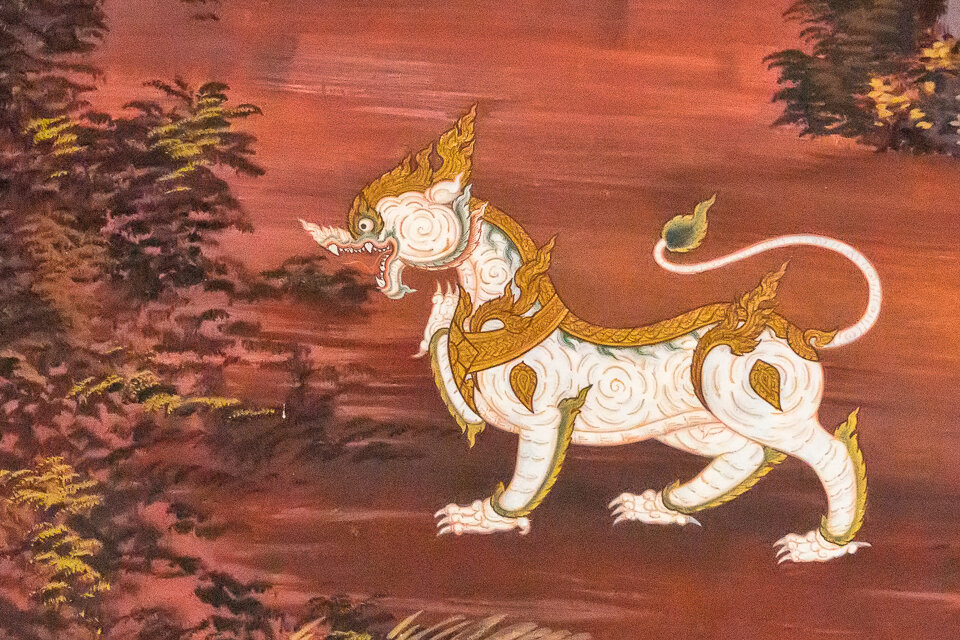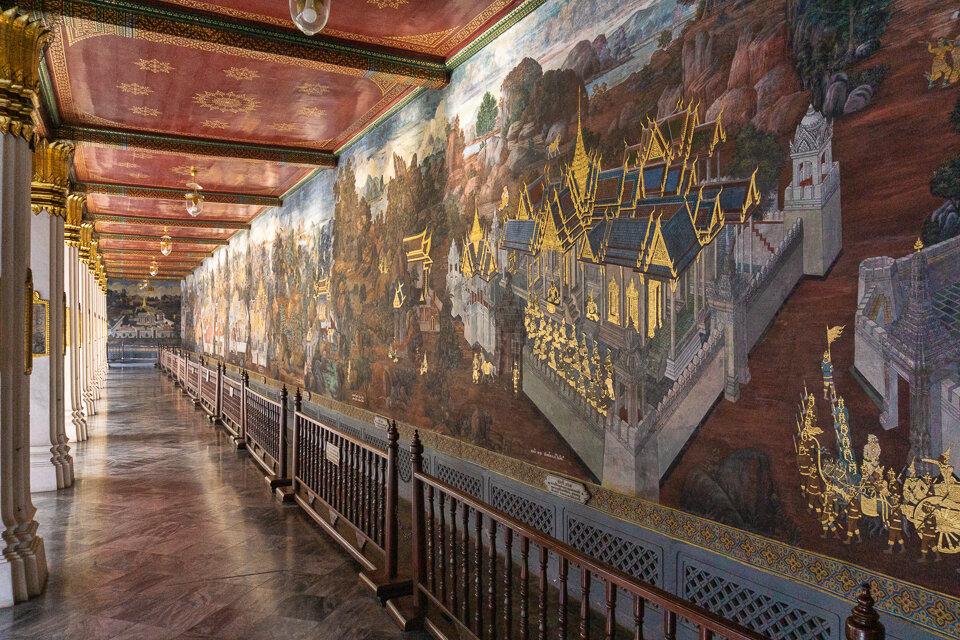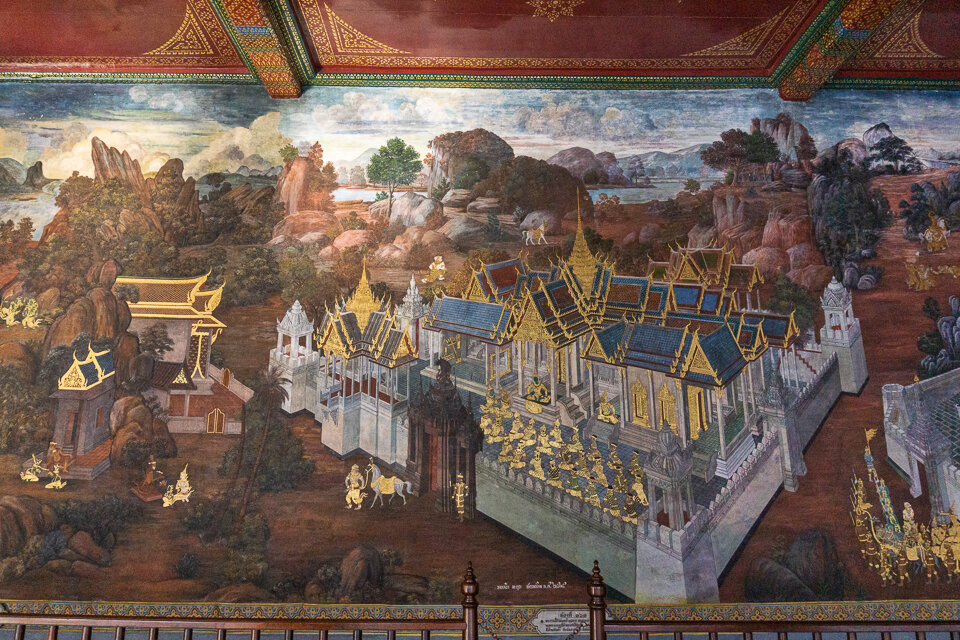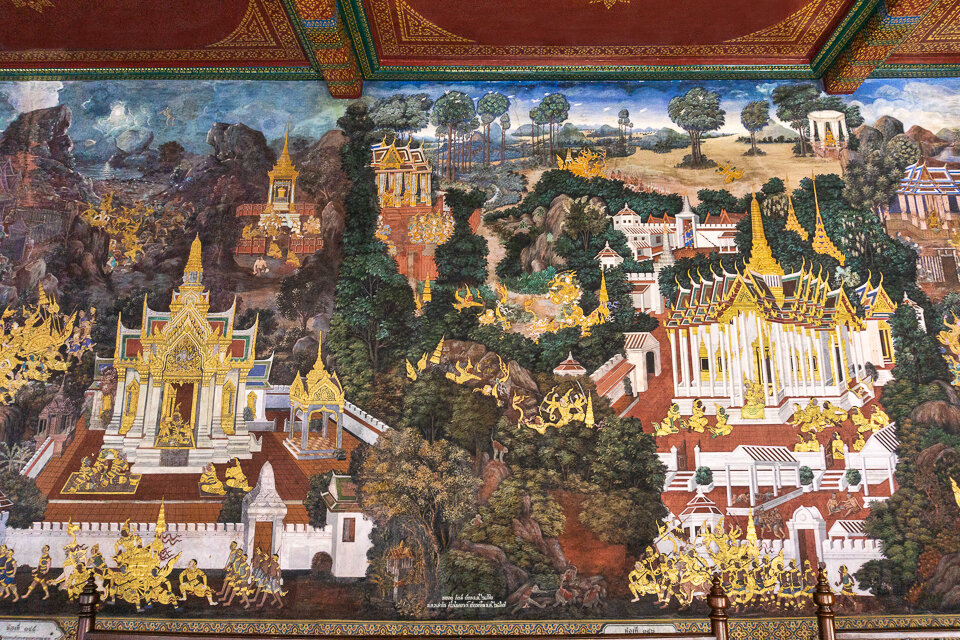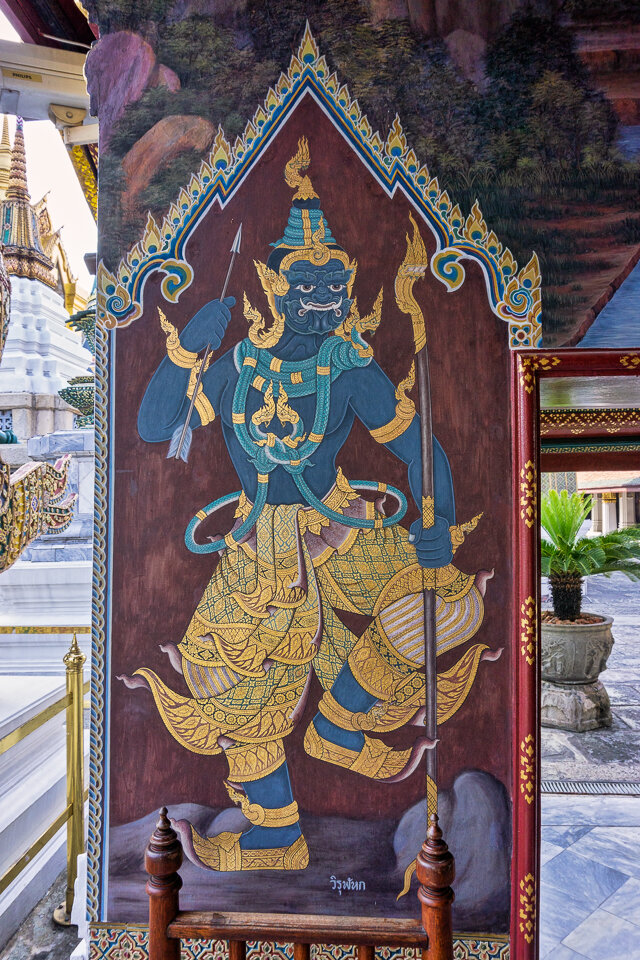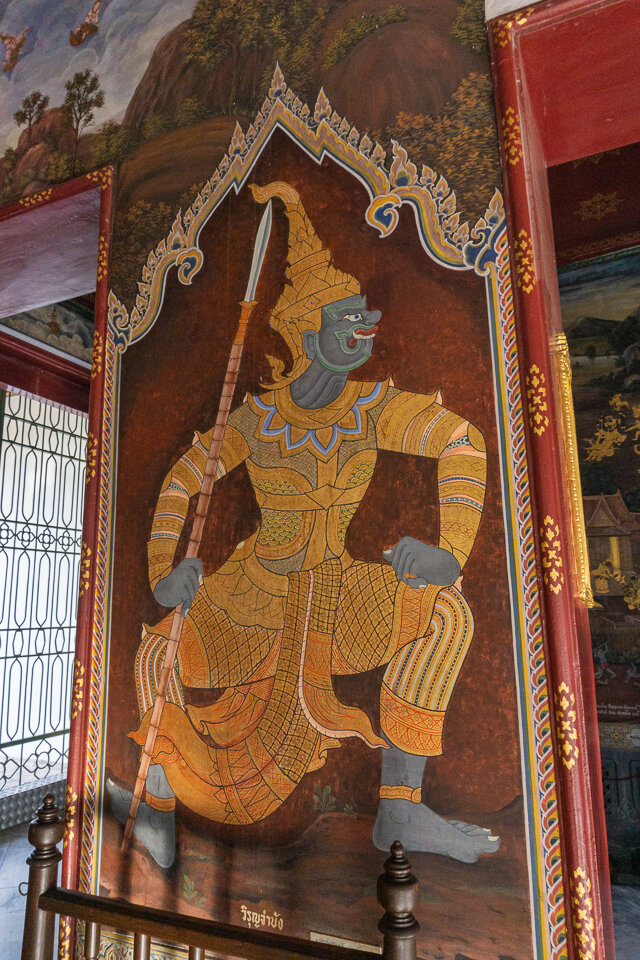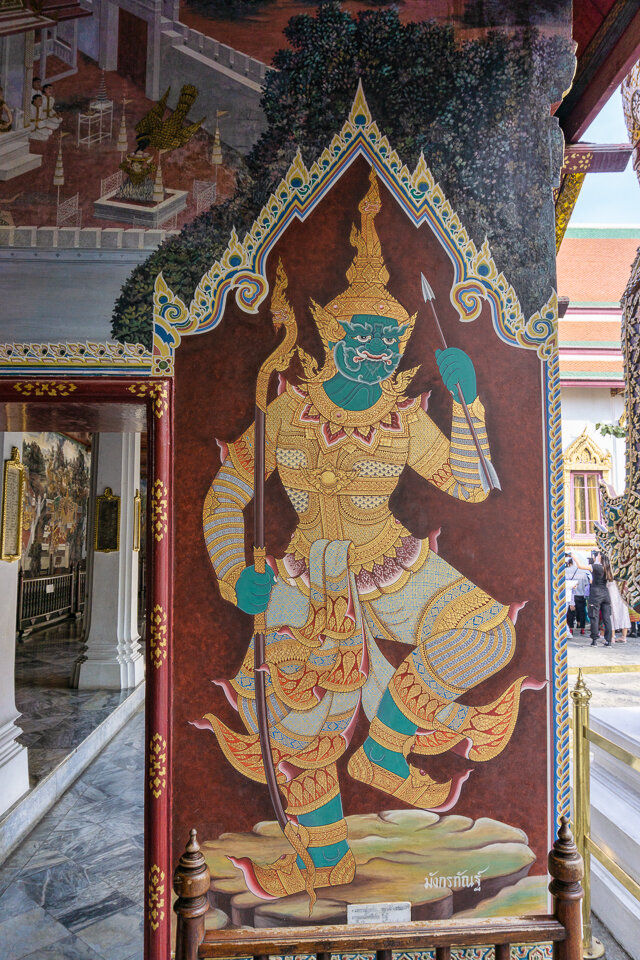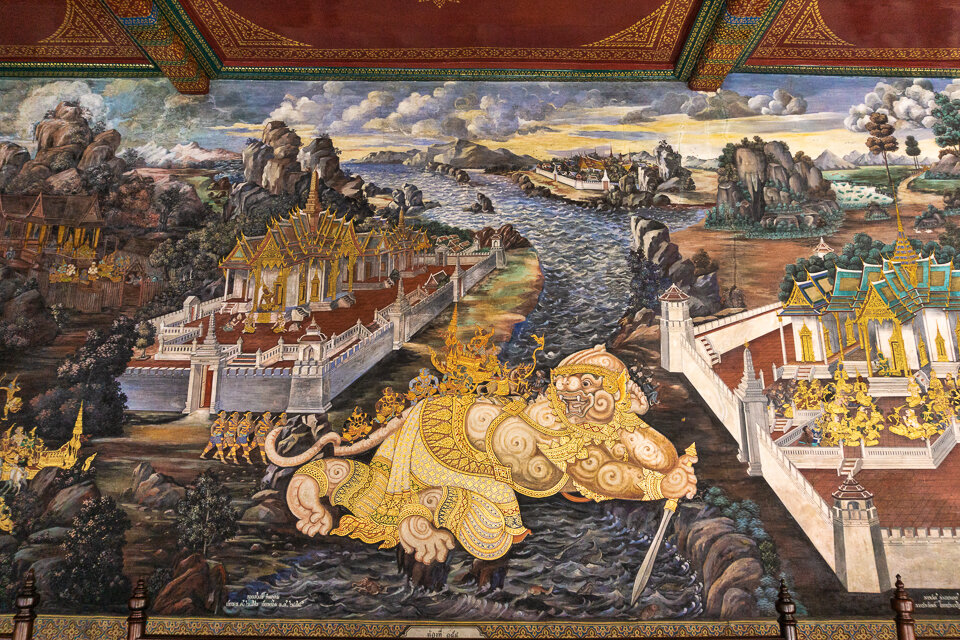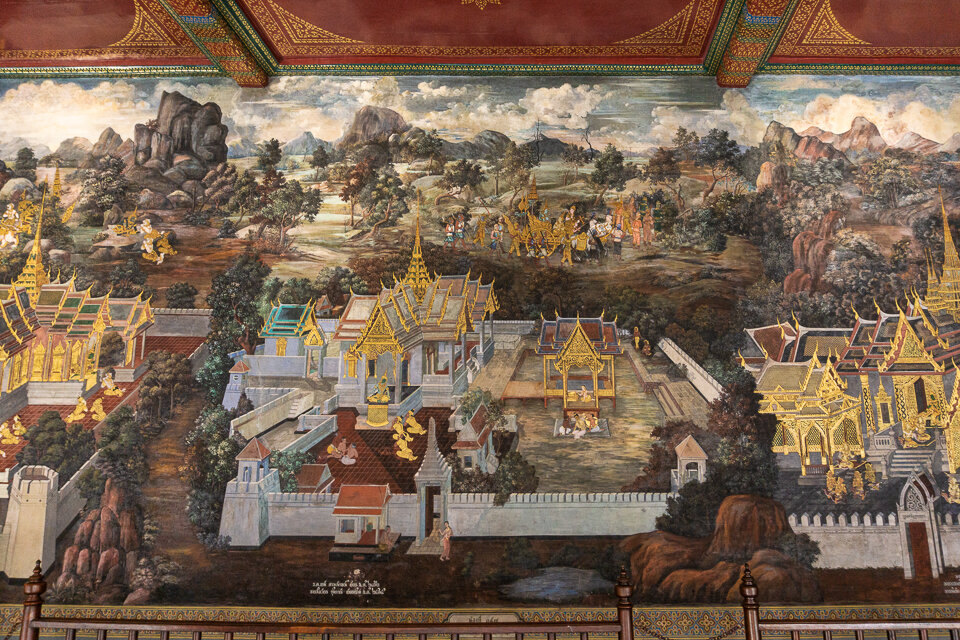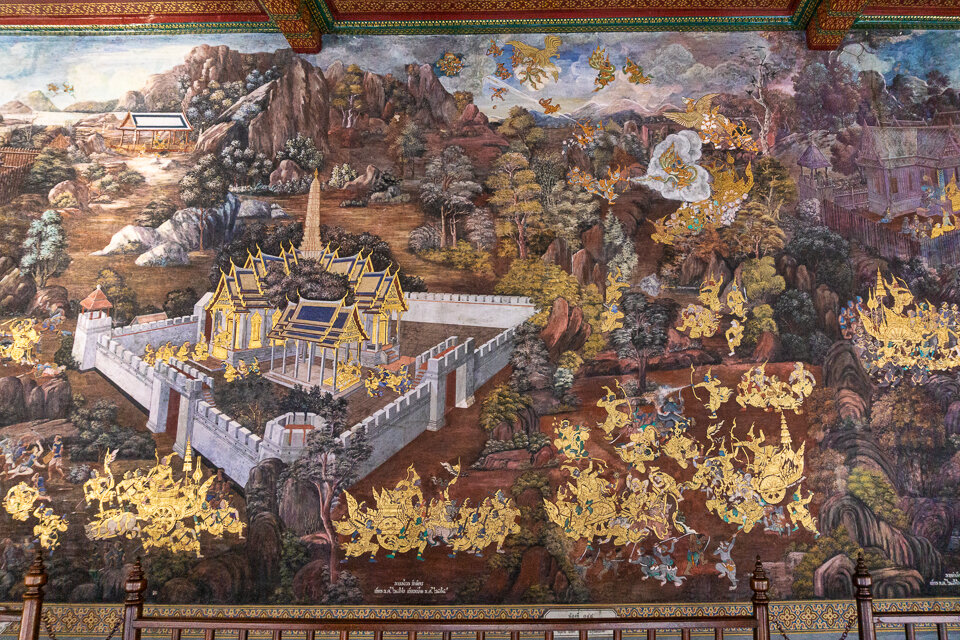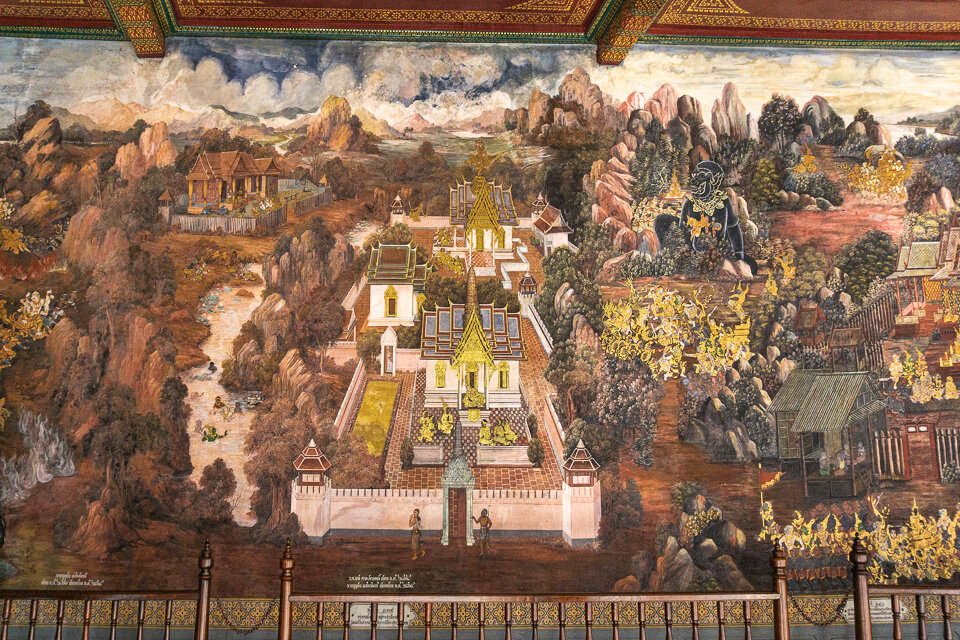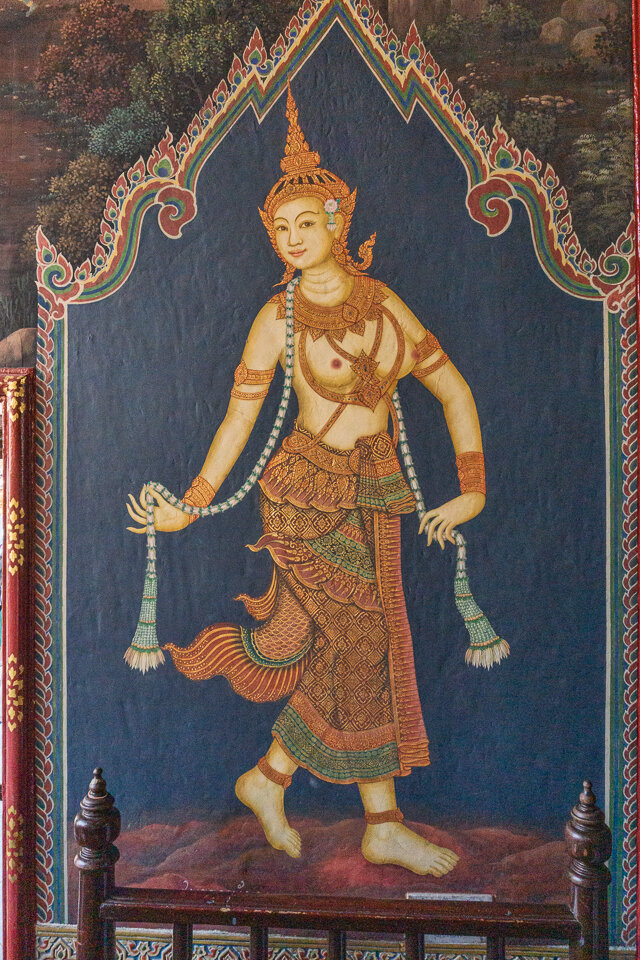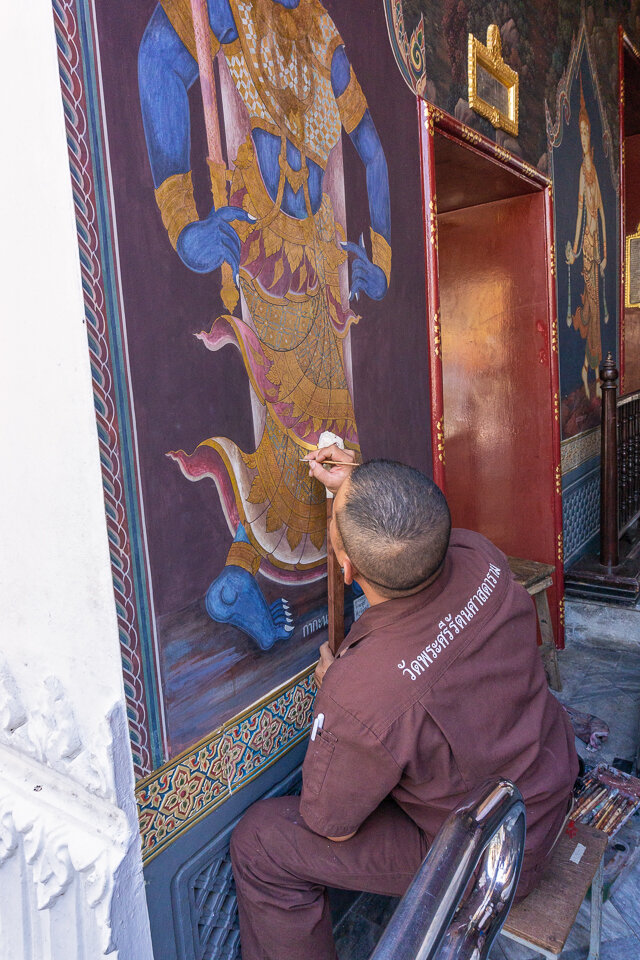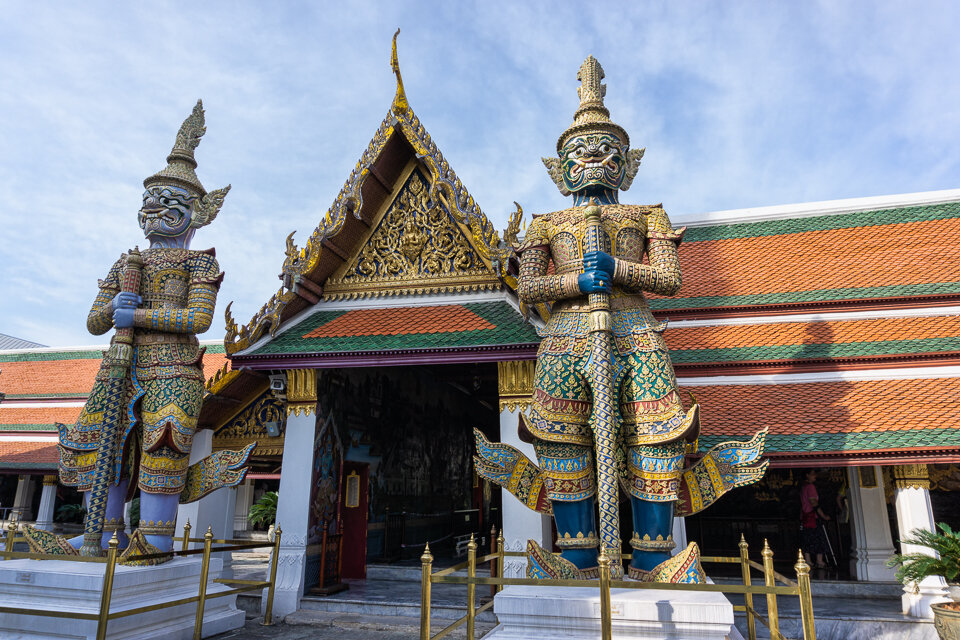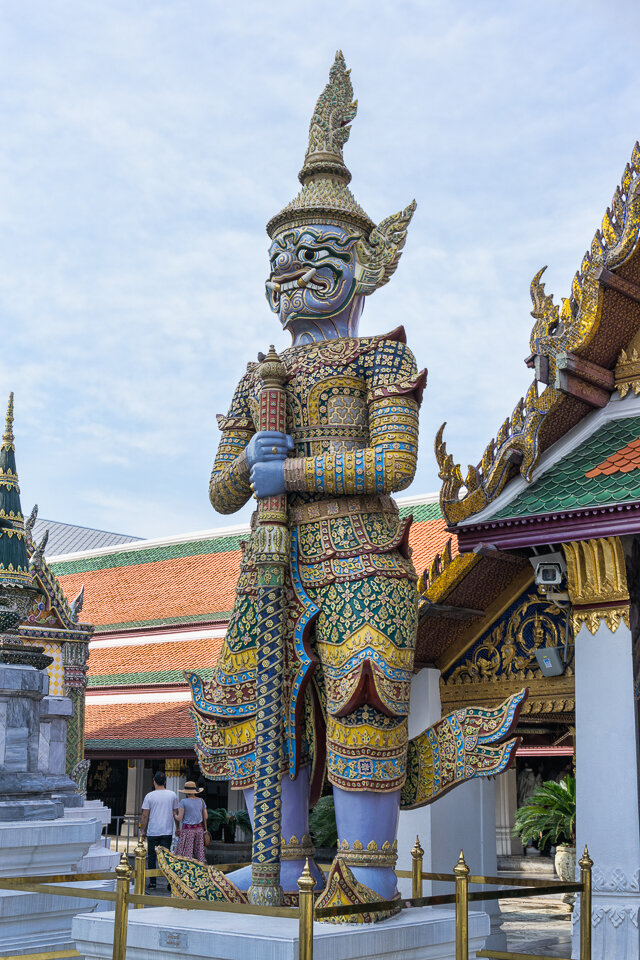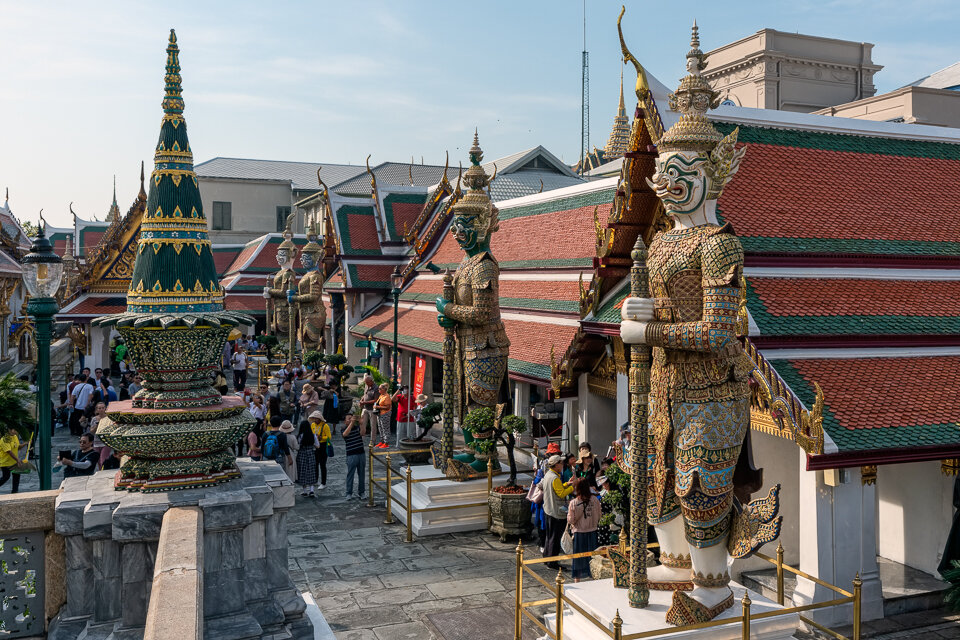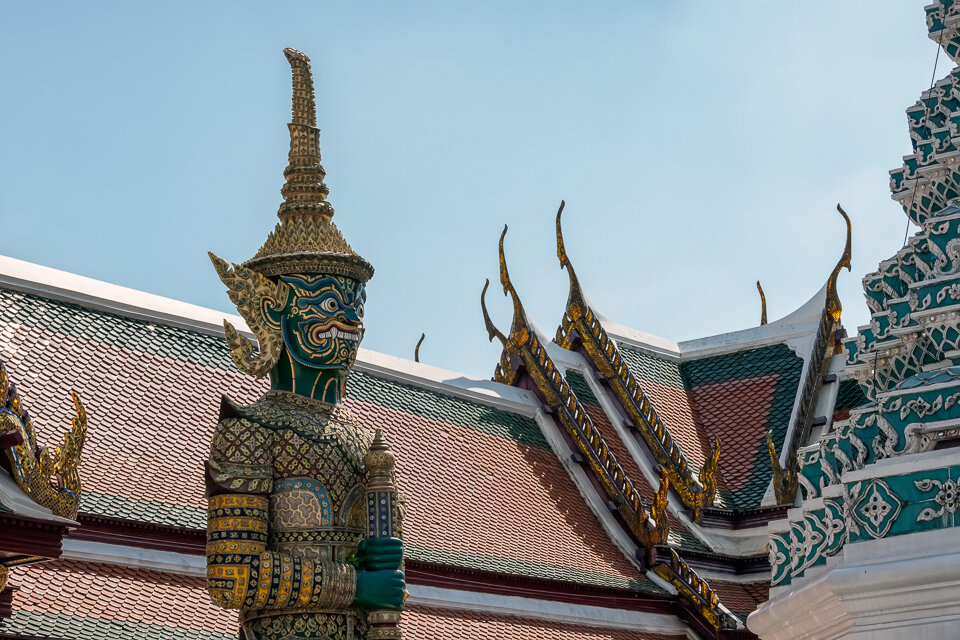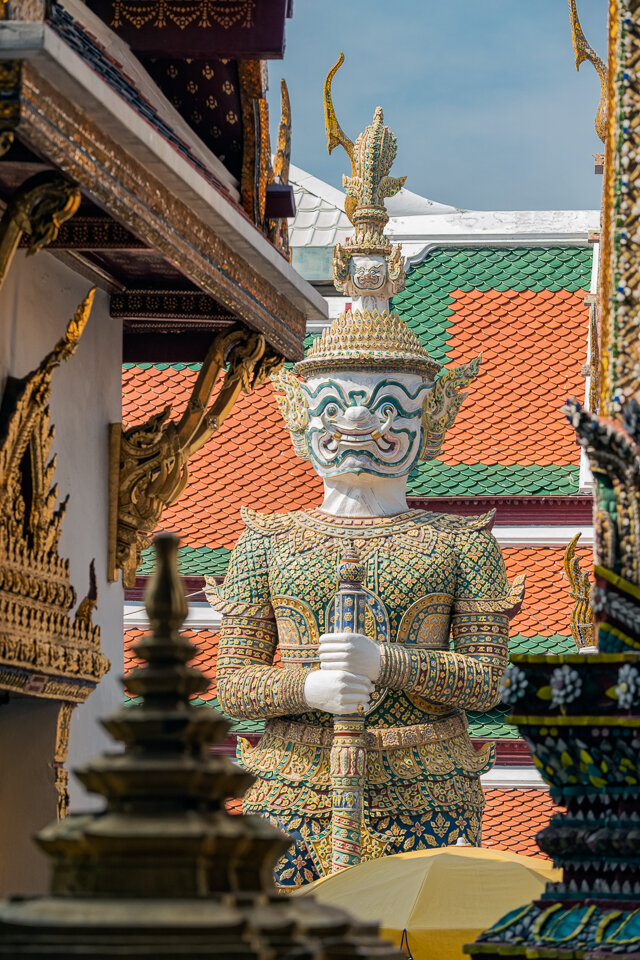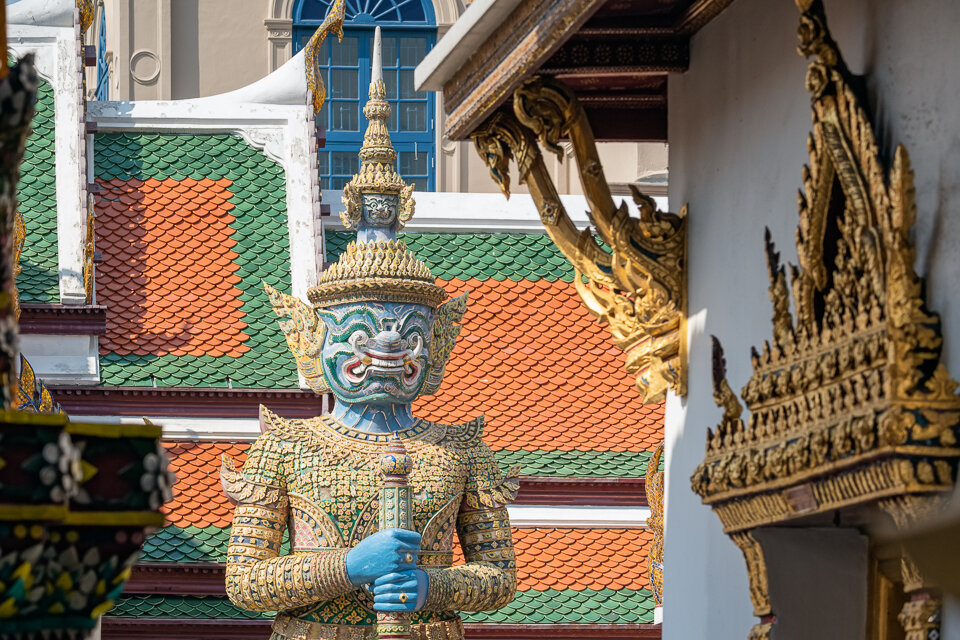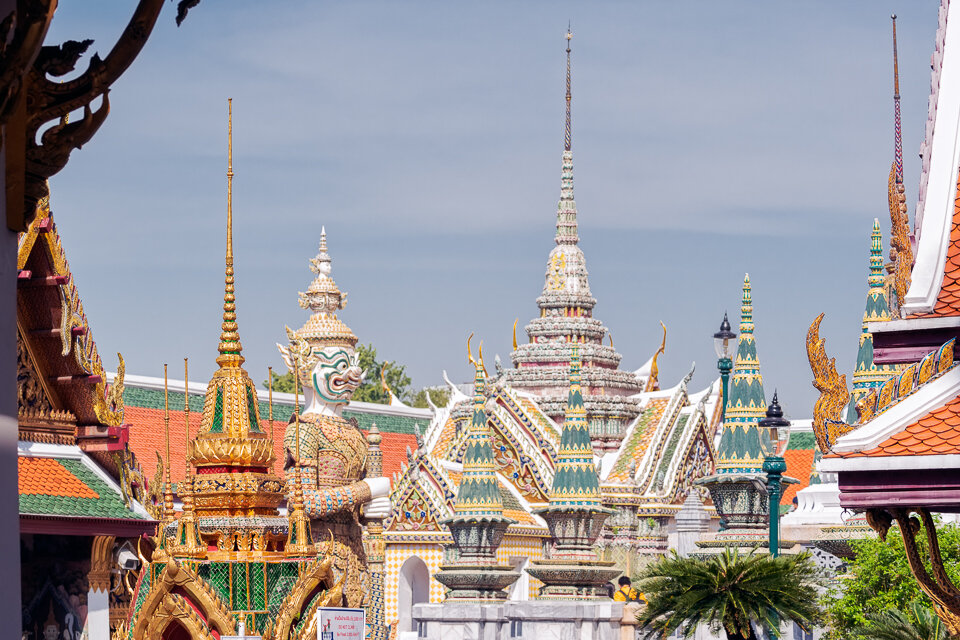Before we can see the Golden Mount temple (Phu Thao Kong), we can hear it. It is due to hundreds of bells singing in the wind. We look up at the golden spire of the chedi glistening in the sun. This is where we need to climb.
Zanim zobaczymy świątynię znana jako Golden Mount (Phu Thao Kong), możemy ją usłyszeć. Dzieje się tak za sprawą setek dzwonków śpiewających na wietrze. Patrzymy w górę, za głosem dzwonków i widzimy złotą iglicę chedi, błyszczącą w słońcu. To tam musimy się teraz wspiąć.
The mount was made from the earth dug out during creation of the Bangkok canal (klorng) and piled up to build a big tall stupa. However, as the hill grew its own weight started to be problematic for the soft soil beneath. The project was thus abandoned. Later on, the trees were added to stop the erosion and smaller gilded chedi was built on the top of the hill. The concrete walls on the outside of the Golden Mount were added in the 1940s.
Kopiec, na którym wznosi się świątynia został usypany z ziemi wykopanej podczas tworzenia kanałów w Bangkoku (klorng) a na jego szczycie miała być zbudowana wysoka stupa. Jednak w miarę jak wzgórze rosło, jego ciężar zaczął być problematyczny dla miękkiej gleby pod nim. Projekt został więc porzucony. Jakiś czas później dodano drzewa, aby powstrzymać erozję, a na szczycie wzgórza zbudowano mniejsze chedi z pozłacaną kopułą. Betonowe ściany na zewnątrz Golden Mount zostały dodane w latach 40. XX wieku.
After buying our tickets, we take a gentle climb in the shadows of trees and cooled by tiny droplets of steam coming from the rock gardens packed with lush exotic plants, (often bizarre) statues, streams and miniature waterfalls. There are 344 steps from the base of the mount to the terrace at the top snaking quite gently around the hill.
Po kupiniu biletów idziemy ścieżką łagodnie wspinającą się na kopiec, chronieni od słońca w cieniu drzew i w podmuchach pary wydobywającej się z ogrodów skalnych pełnych bujnych egzotycznych roślin, wszelkiego rodzaju statuetek, strumyków i miniaturowych wodospadów. Od początku drogi do tarasu na szczycie prowadzą 344 stopnie wijące się dość łagodnie wokół wzgórza.
There is a great 360-degress view on Bangkok from the chedi. We stayed up on the top for a little while enjoying the breeze, the cacophony of bells and the very pleasant view. Then we walked around inside the temple to hide for a bit longer from the relentless sun and to admire all the details.
Z chedi roztacza się wspaniały panoramiczny widok na Bangkok. Pokręciliśmy się przez chwilę na samej górze, zanurzeni w kakofonii dźwięków setek dzwonków, korzystając z chłodnego zefirku i ciesząc oczy przyjemnym widokiem na miasto. A potem na spokojnie obeszliśmy wnętrze świątyni, chowając się na chwilę przed palącym słońcem i podziwiając wszystkie detale.
After descending (there is a different flight of stairs leading down) we first get to the sanctuary of vultures. Wat Saket below the Golden Munt, the oldest temple of Bangkok, was used as the Old City’s crematorium during 19th-century epidemics (cholera). If the families of the deceased were too poor to pay for the ceremony, their bodies were left for vultures to feed upon. Even if they could pay, there were so many bodies they could not all be cremated on time. There is a memorial depicting this gore story here.
Po zejściu ze wzgórza (w dół prowadzi inny ciąg schodów niż do góry) najpierw trafiamy do sanktuarium sępów. Wat Saket, najstarsza świątynia Bangkoku, położona u stóp Golden Mount, była używana także jako krematorium podczas XIX-wiecznych epidemii cholery. Jeśli rodziny zmarłych były zbyt biedne, aby zapłacić za ceremonię, ich ciała pozostawiano do żerowania sępom. Nawet gdy krewni mogli zapłacić, czasami było tak wiele ciał, że nie wszystkie mogły zostać skremowane na czas. W sanktuarium znajduje się wystawa przedstawiająca tą krwawą historię.
We descend somewhat more and find the shrine with Luang Por To, large iron gilded meditating Buddha statue. The nearby trees are covered with golden leaves with prayers and wishes.
Schodzimy jeszcze niżej i znajdujemy sanktuarium z Luang Por To, dużym pozłacanym posągiem medytującego Buddy odlanym z żelaza. Pobliskie drzewa pokryte są złotymi liśćmi z modlitwami i życzeniami.
We also visit a nearby cave belonging to the Bamiyan Museum that contains figures of Buddha, including a giant one.
Odwiedzamy jeszcze pobliską grotę należącą do Muzeum Bamiyan, gdzie znajdują się postacie Buddy, w tym jedna gigantycznych rozmiarów.
Finally, we go to the Wat Saket itself. It is a bit on the side and could be missed easily. The ordination hall is open and we can have a glimpse at the large seated Buddha. And this is the last thing to be seen today. Now it is time to take a ride to the hotel and refresh before dinner.
Na koniec udajemy się do samej świątyni Wat Saket, która jest położona trochę na uboczu. Sala święceń jest otwarta i możemy rzucić okiem na posąg wielkiego siedzącego Buddy. I to jest ostatnia rzecz, jaką mieliśmy dziś zobaczyć. Teraz czas złapać transport do hotelu i odświeżyć się przed kolacją.
















































